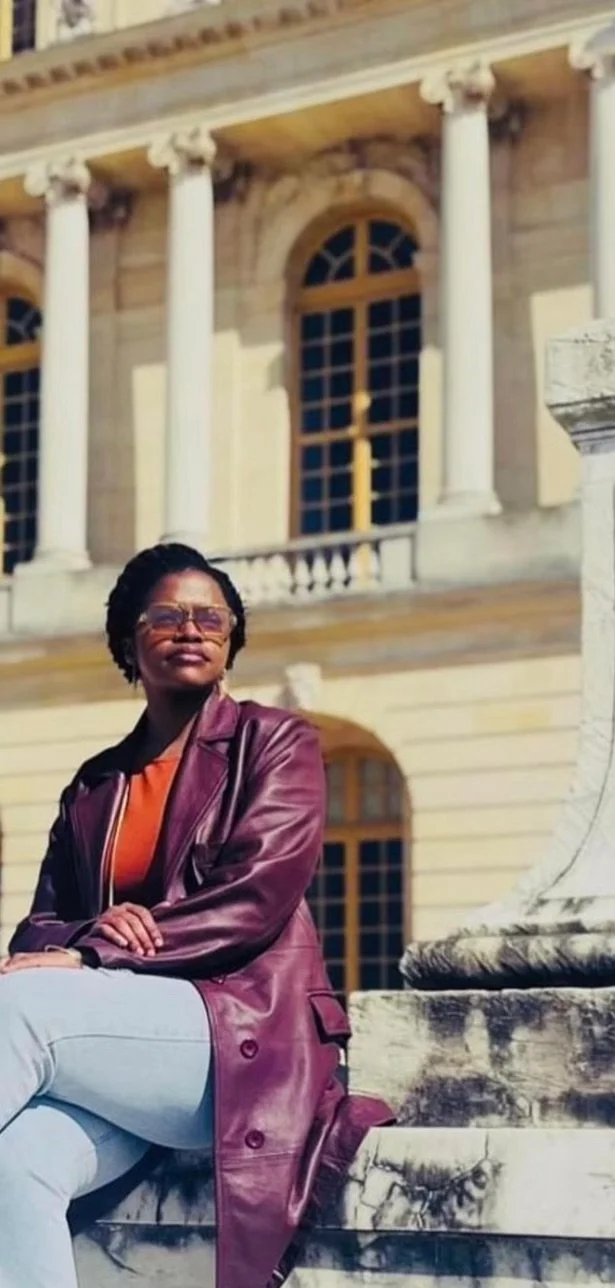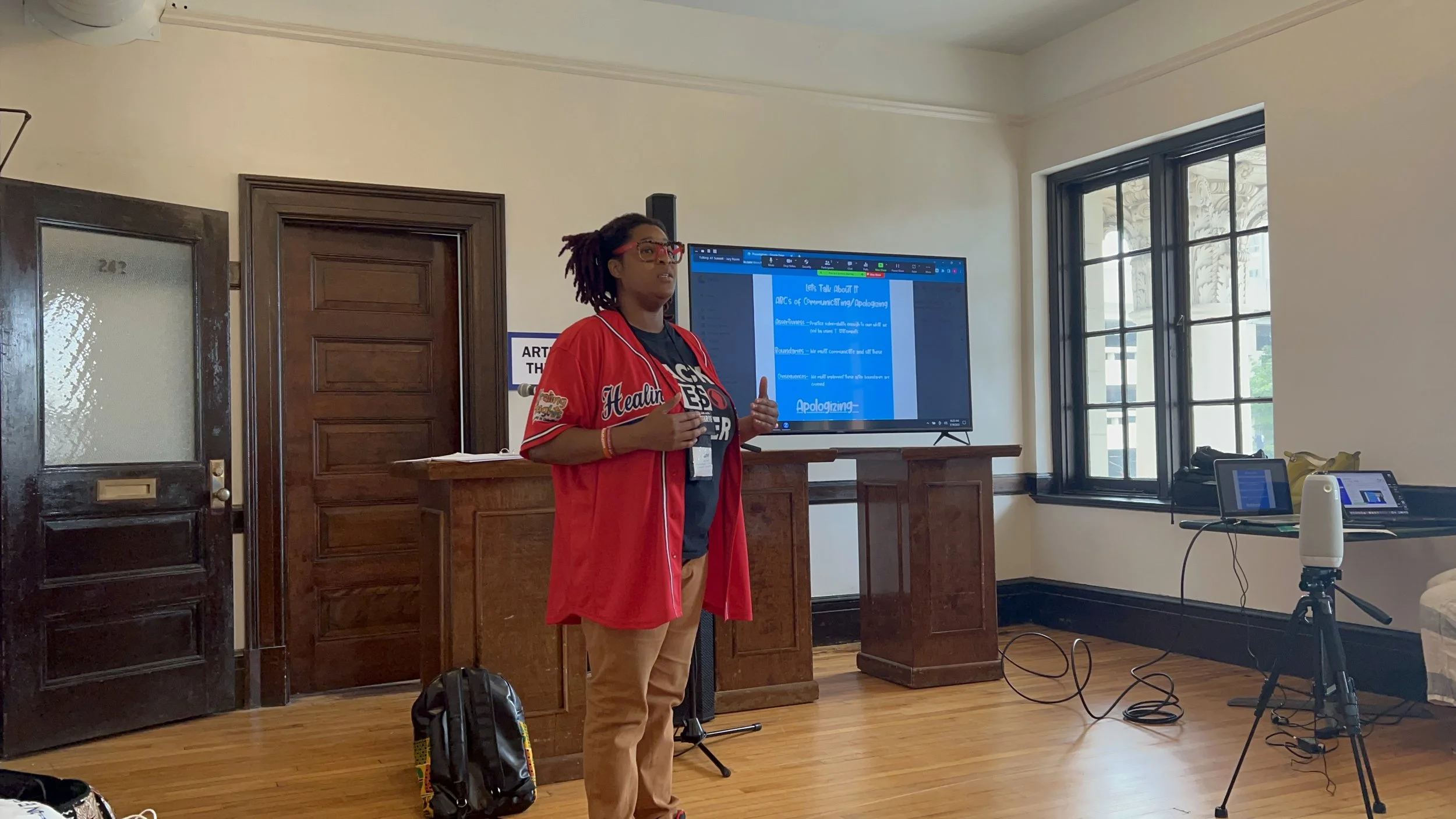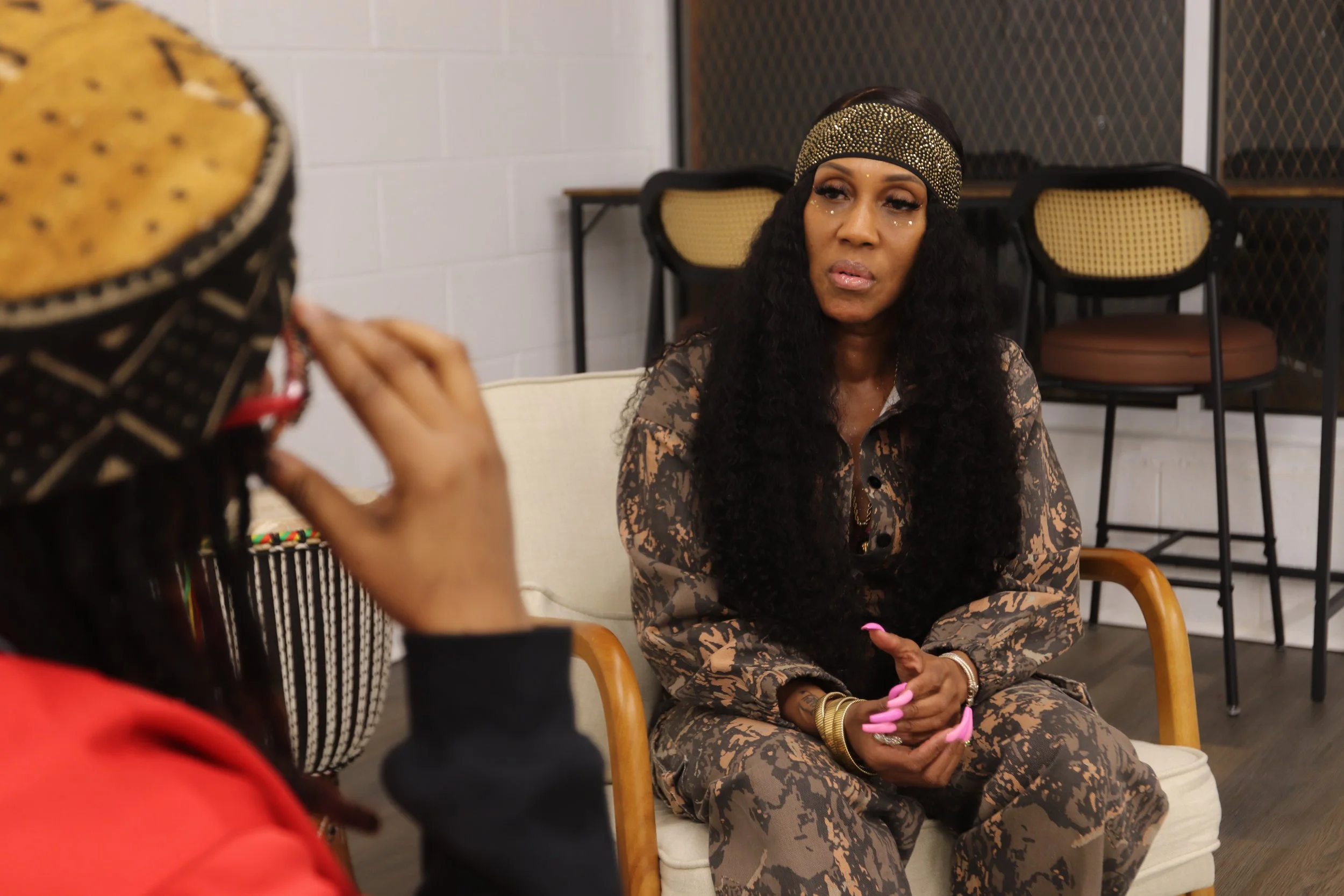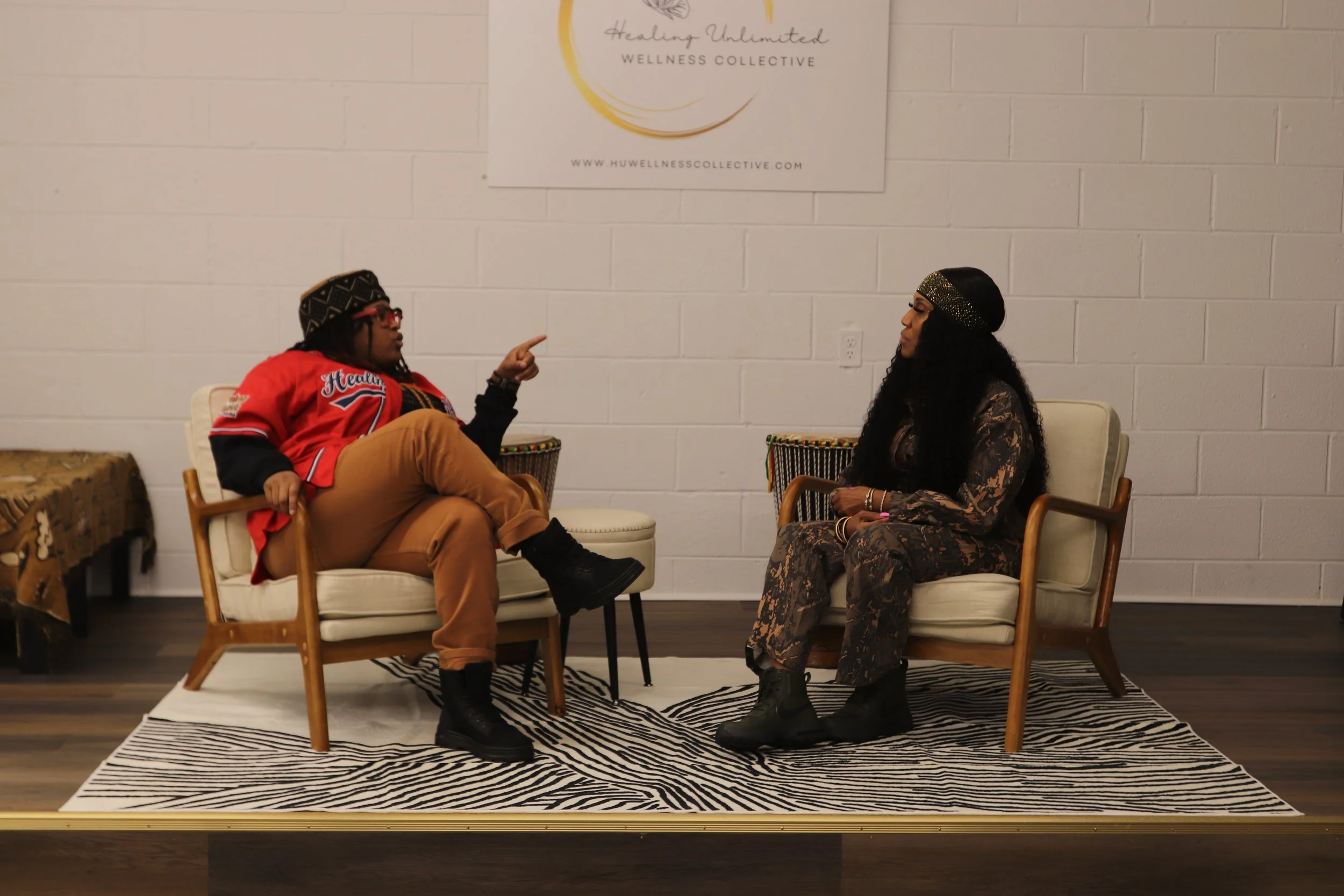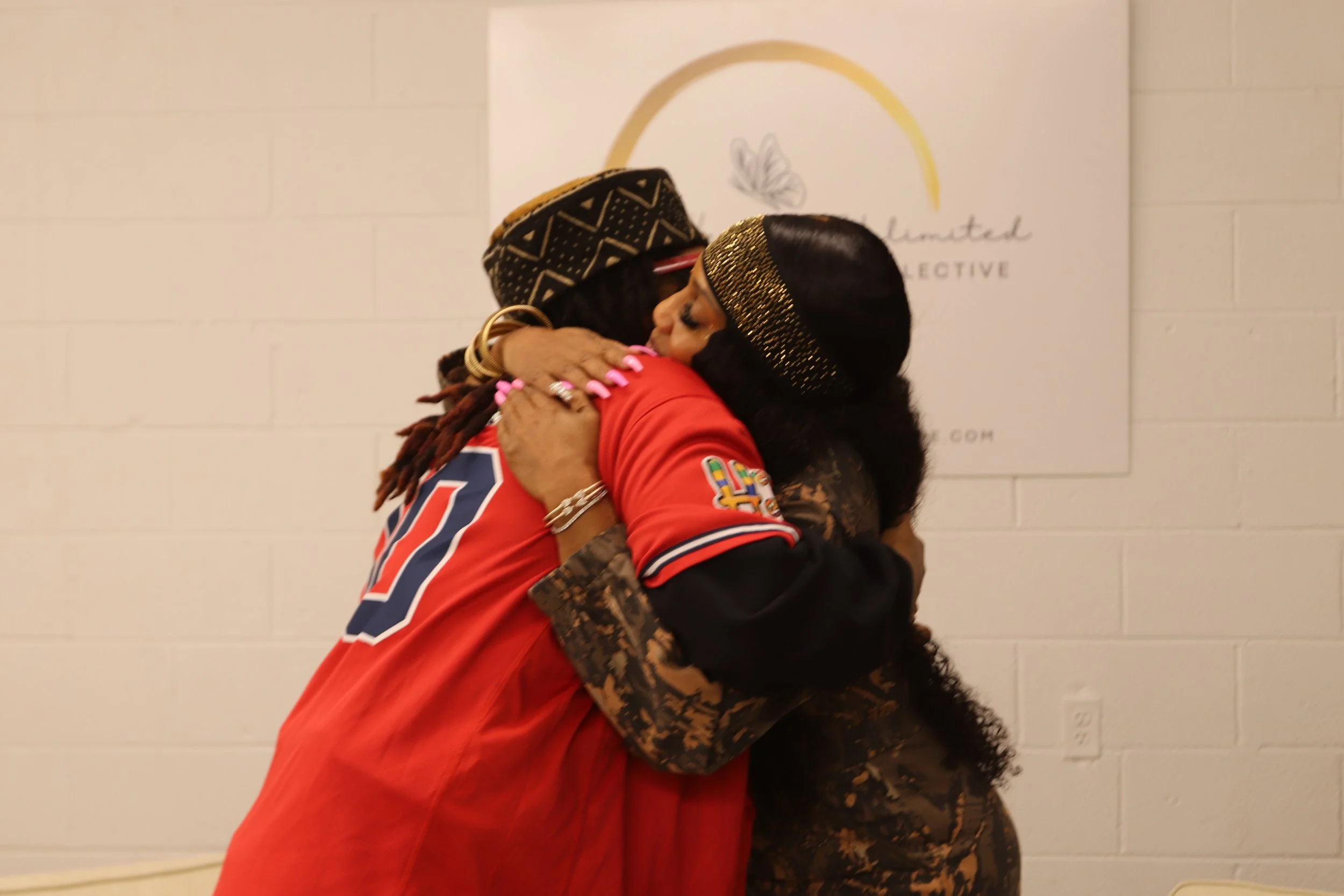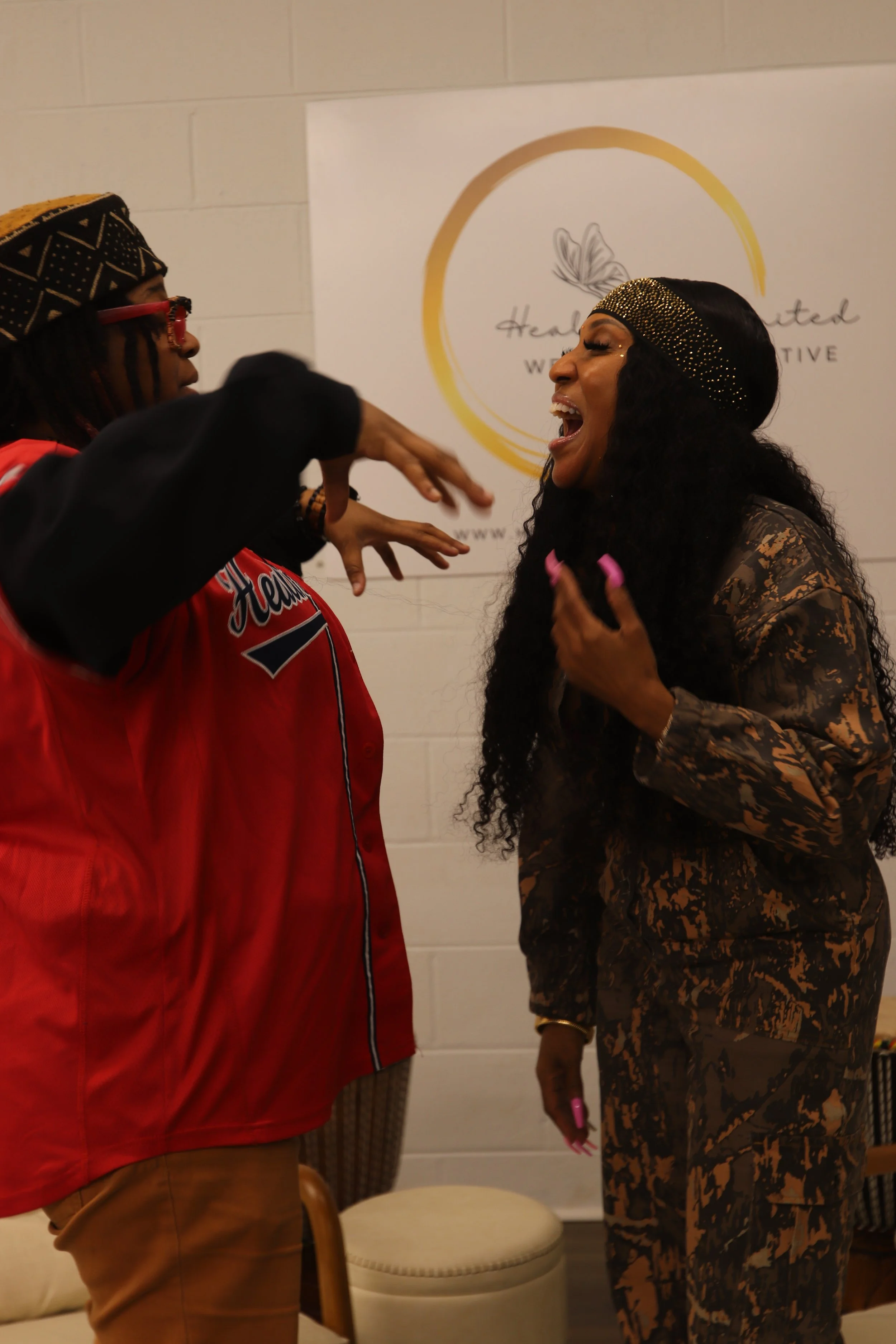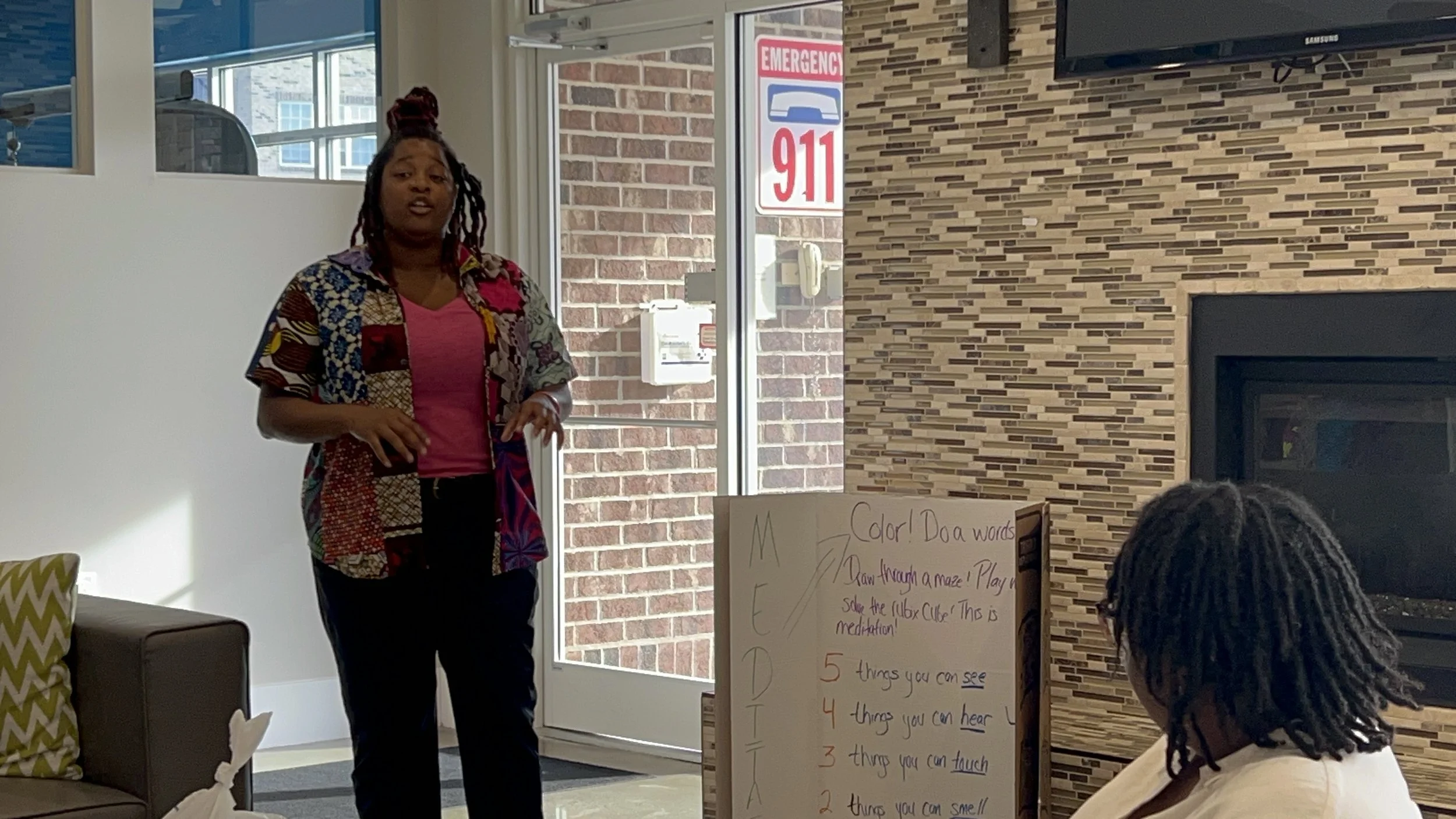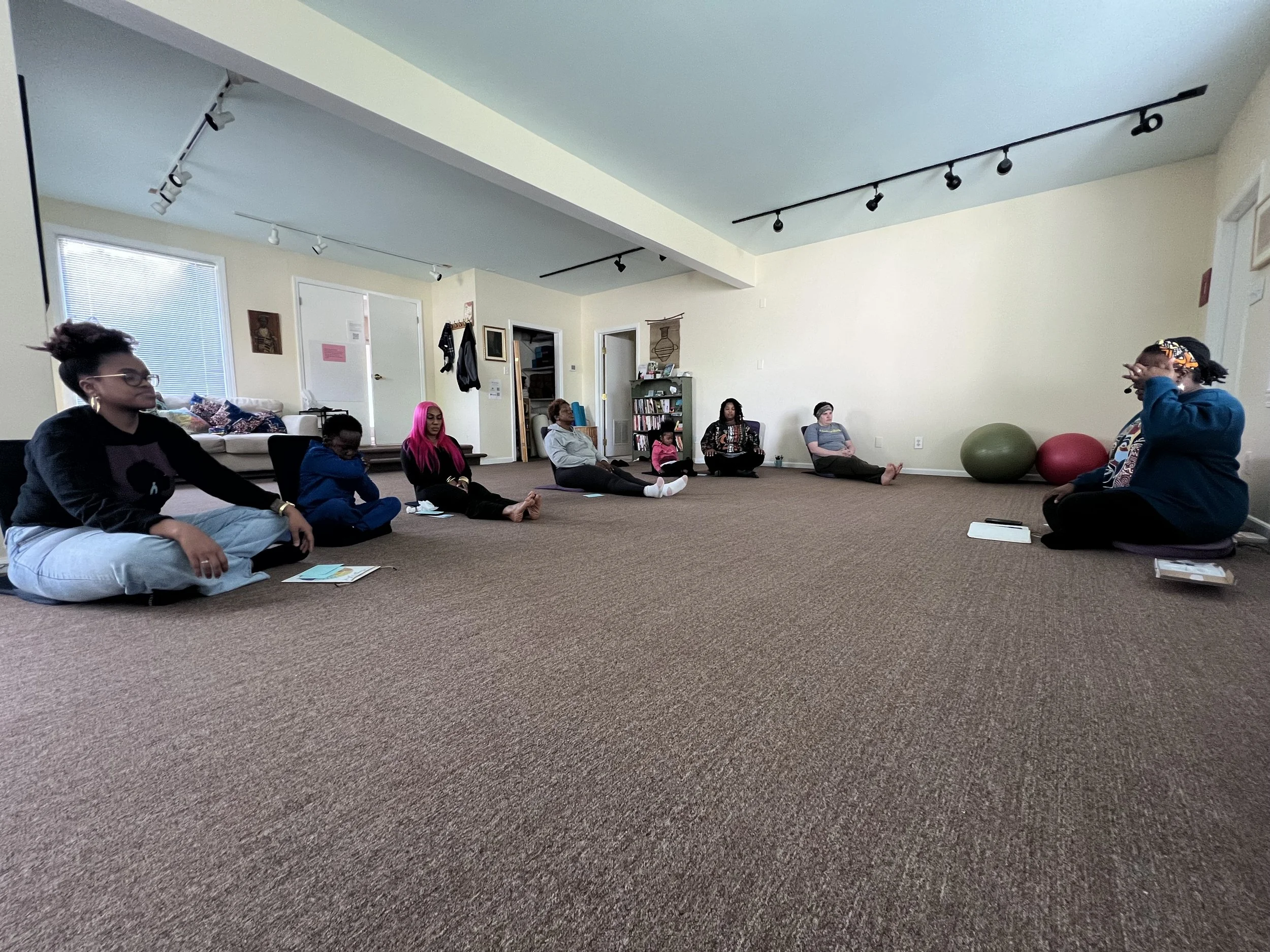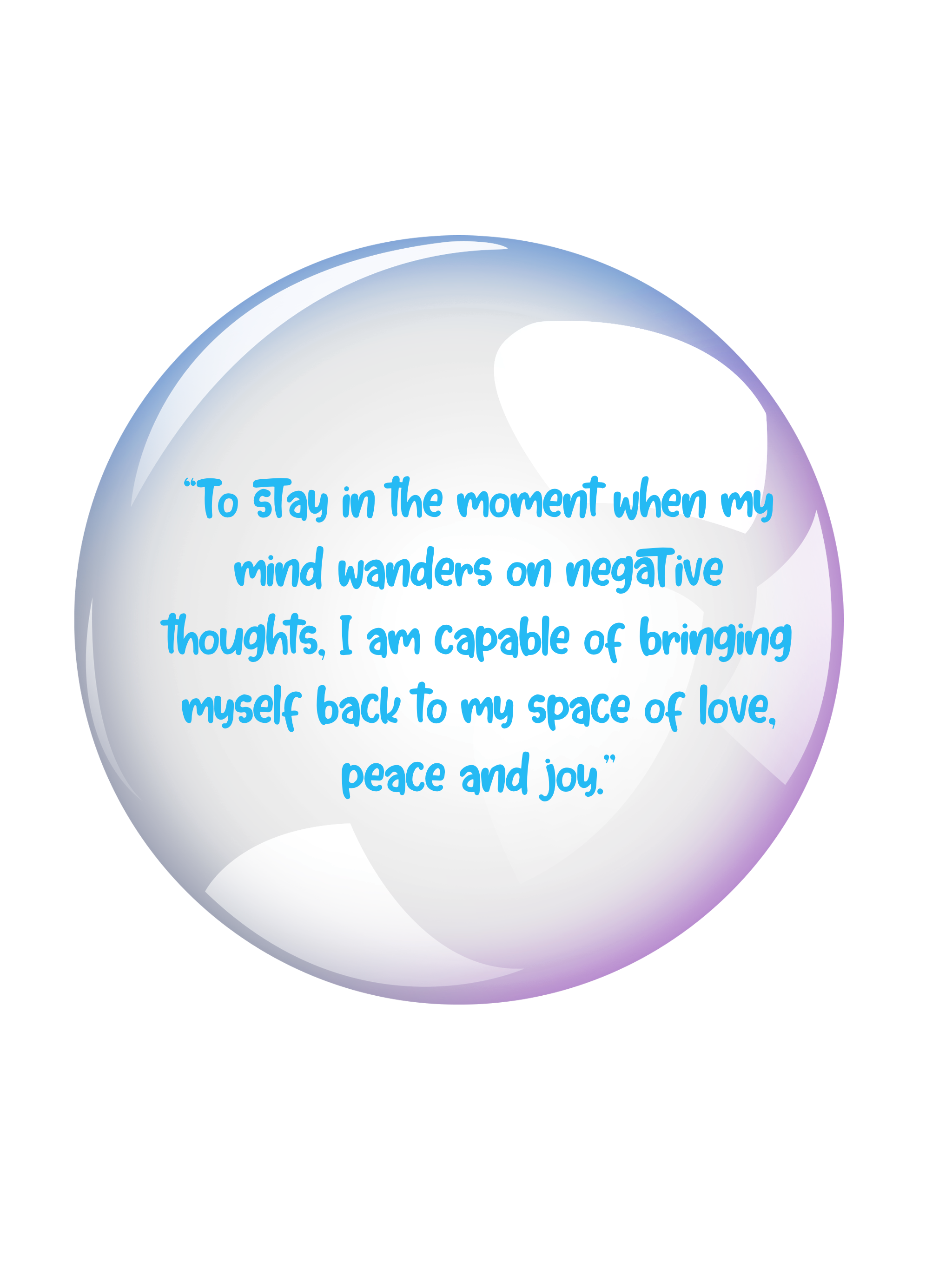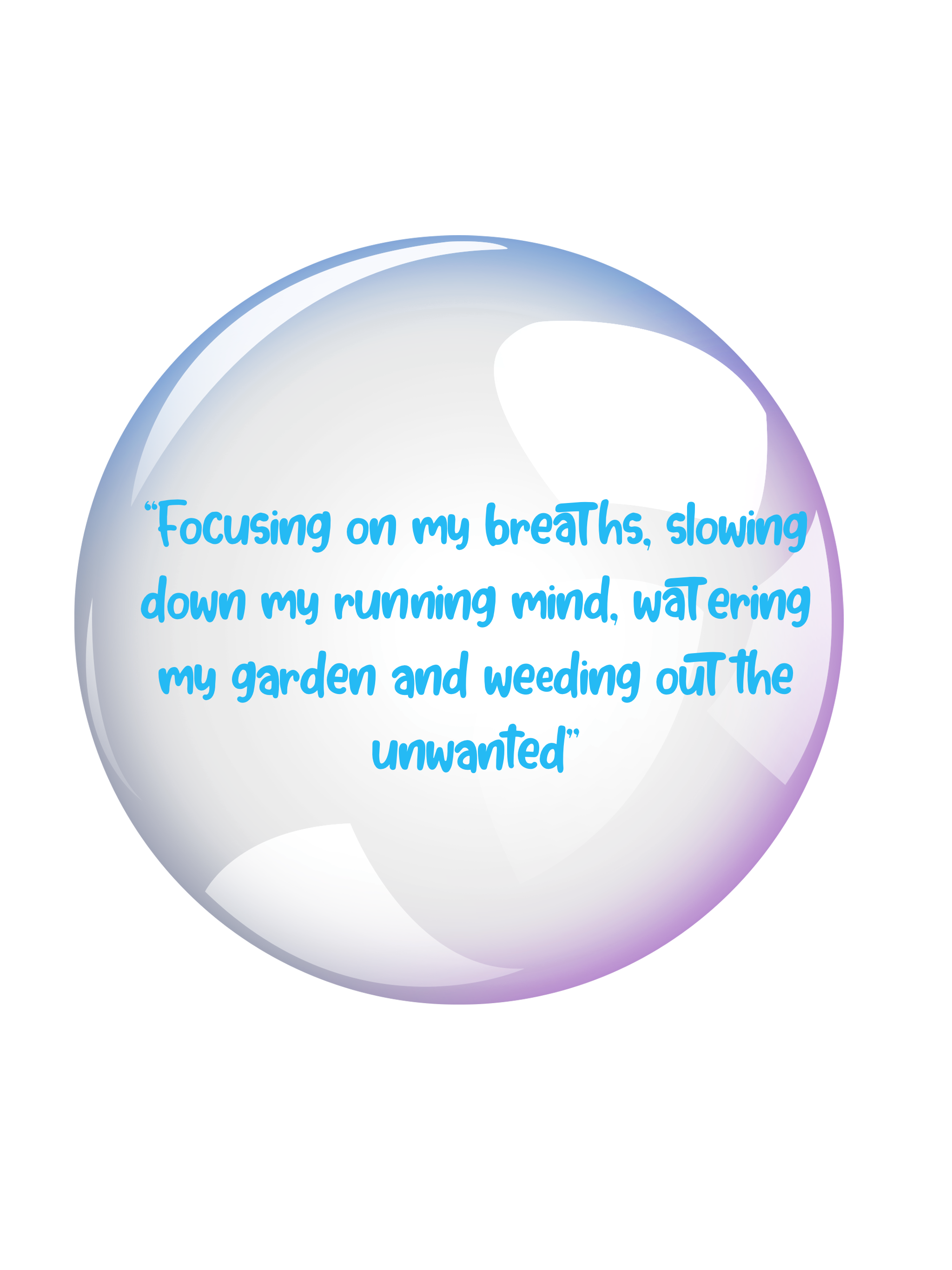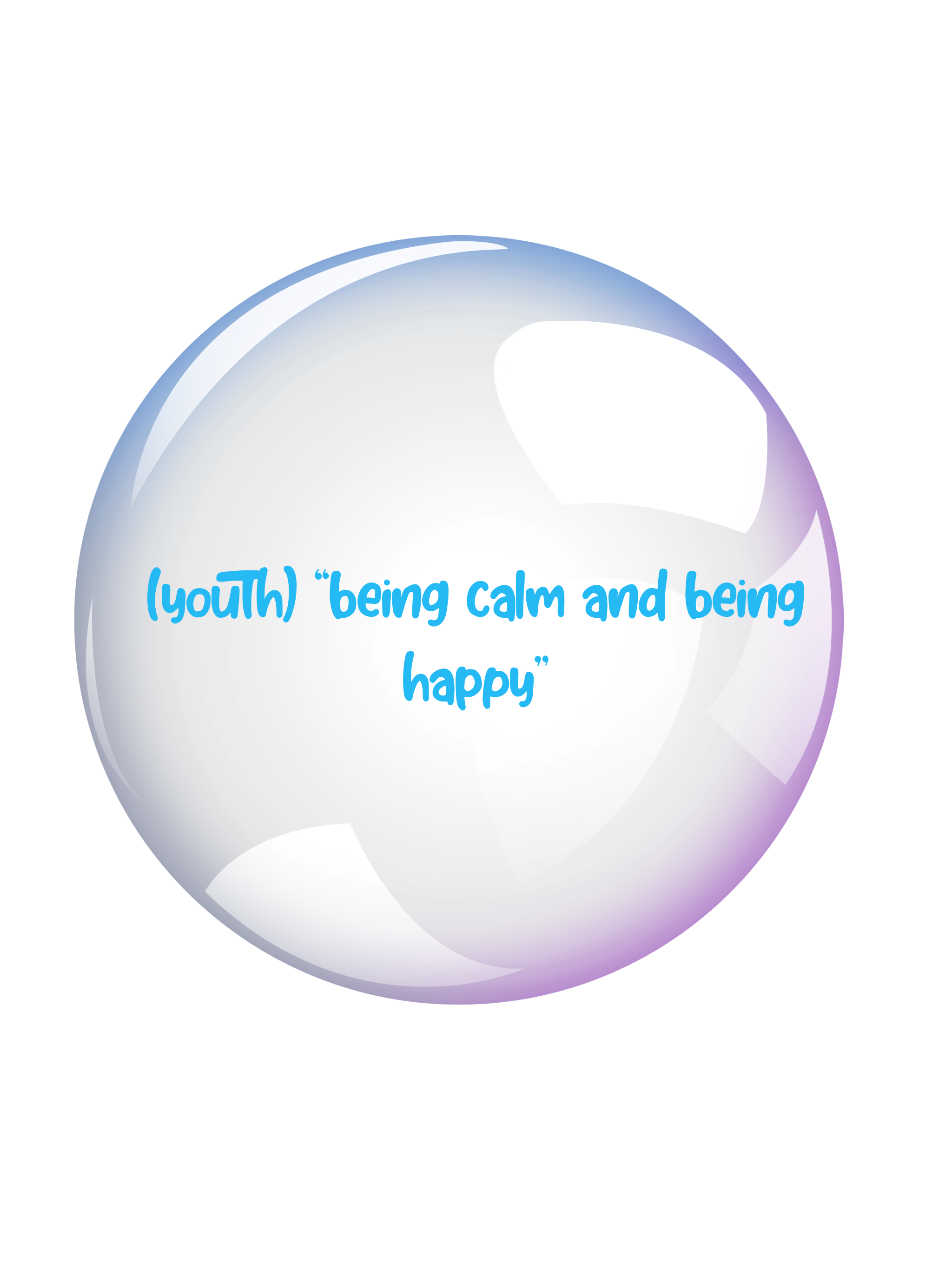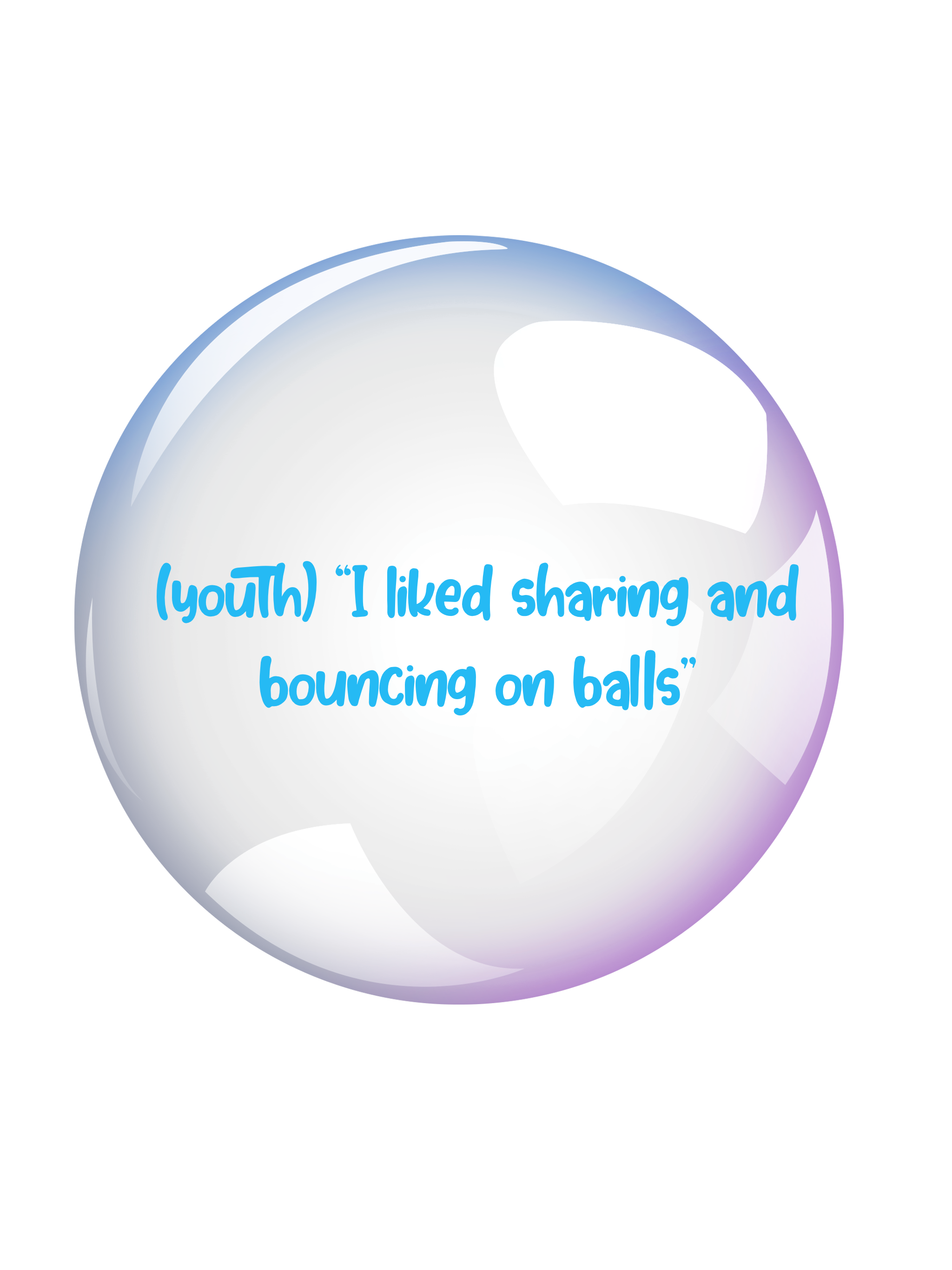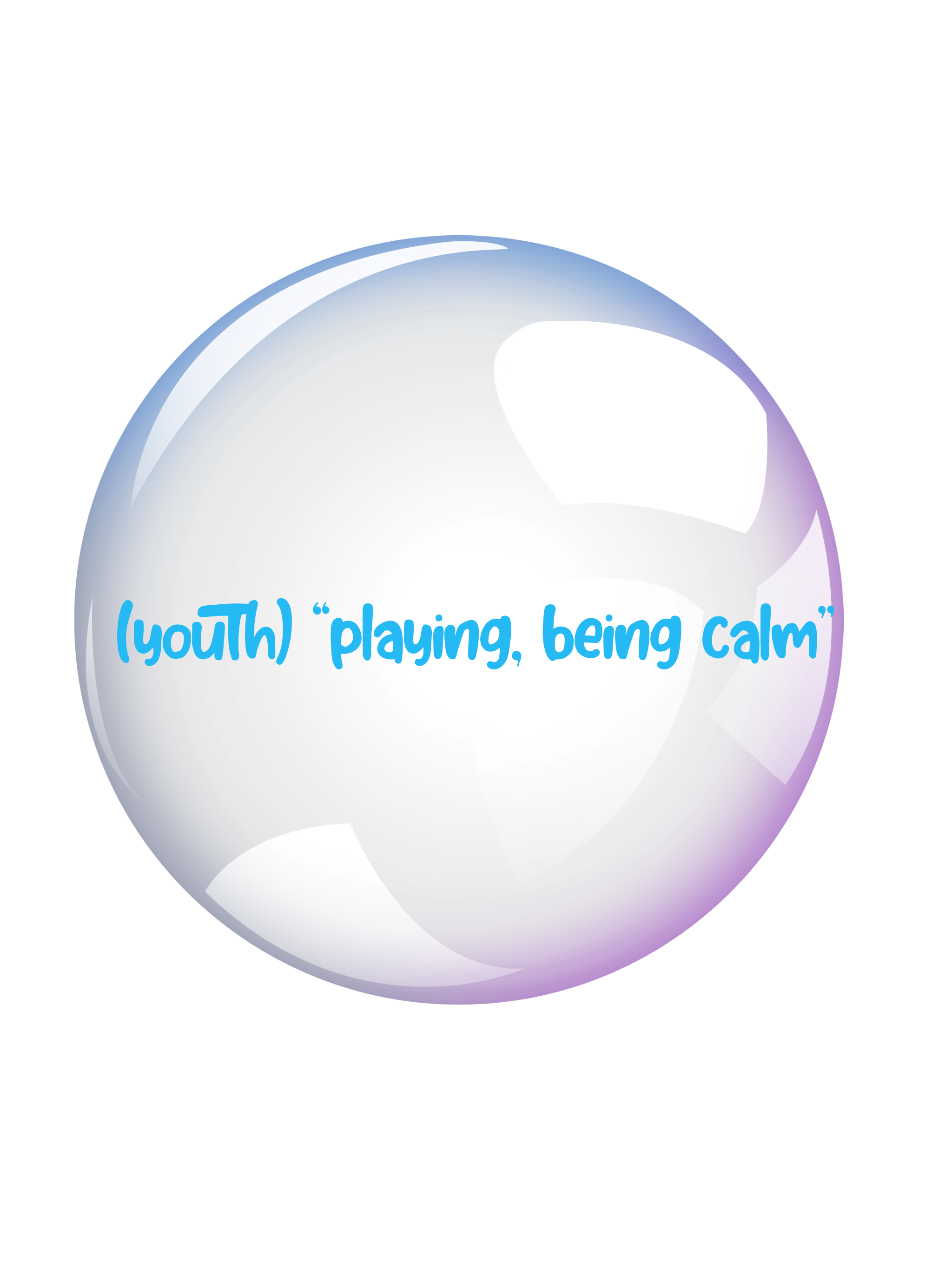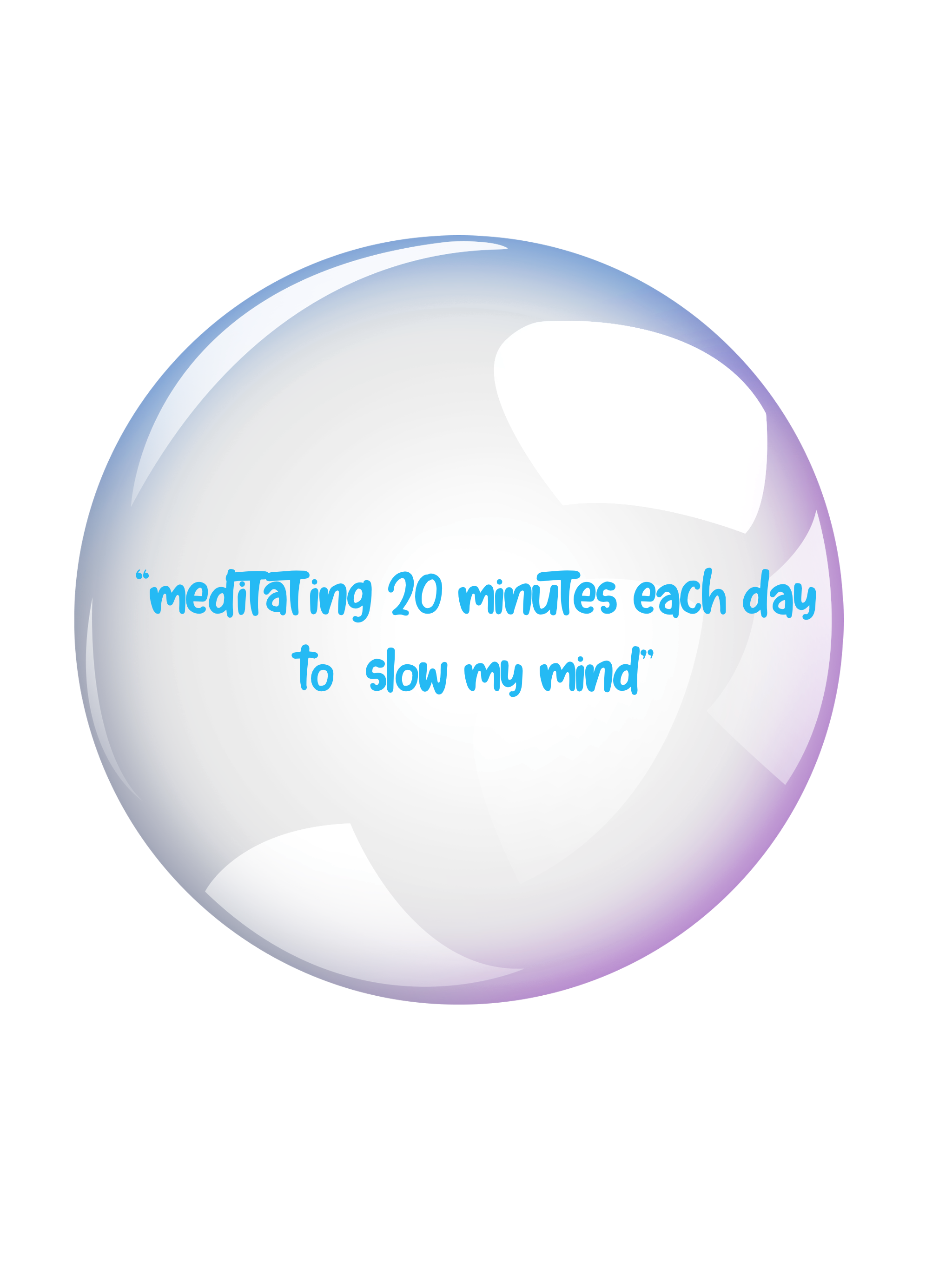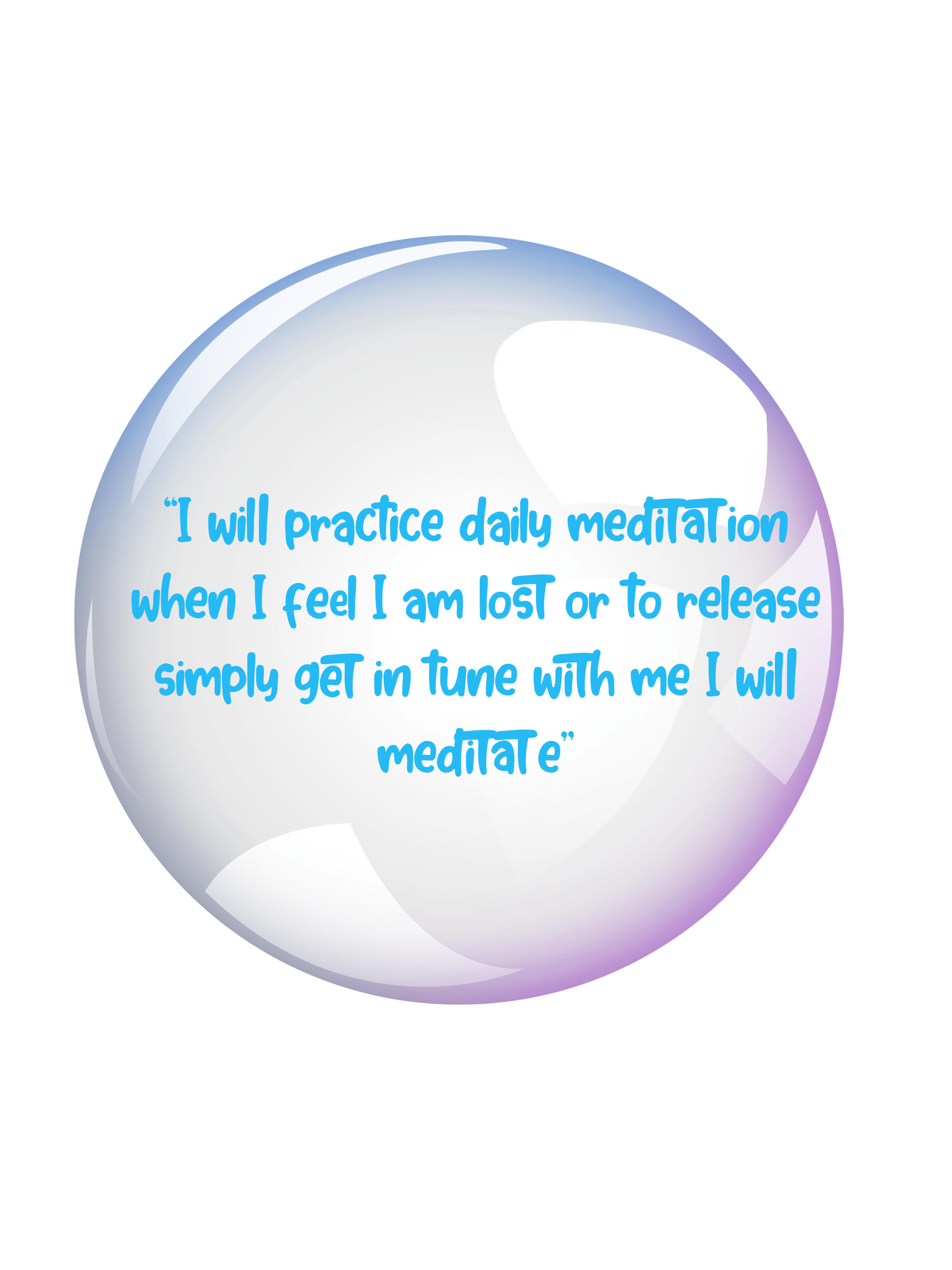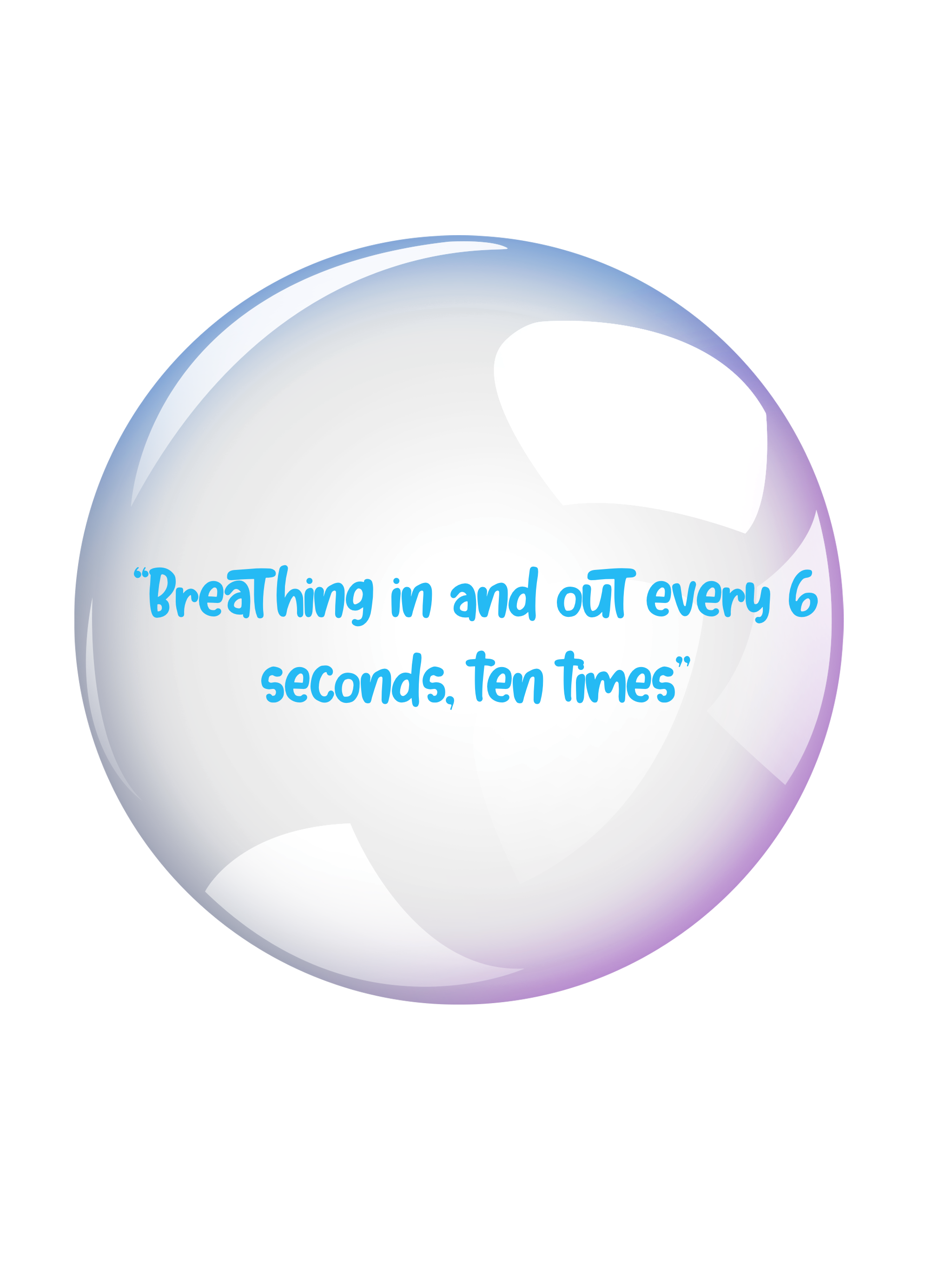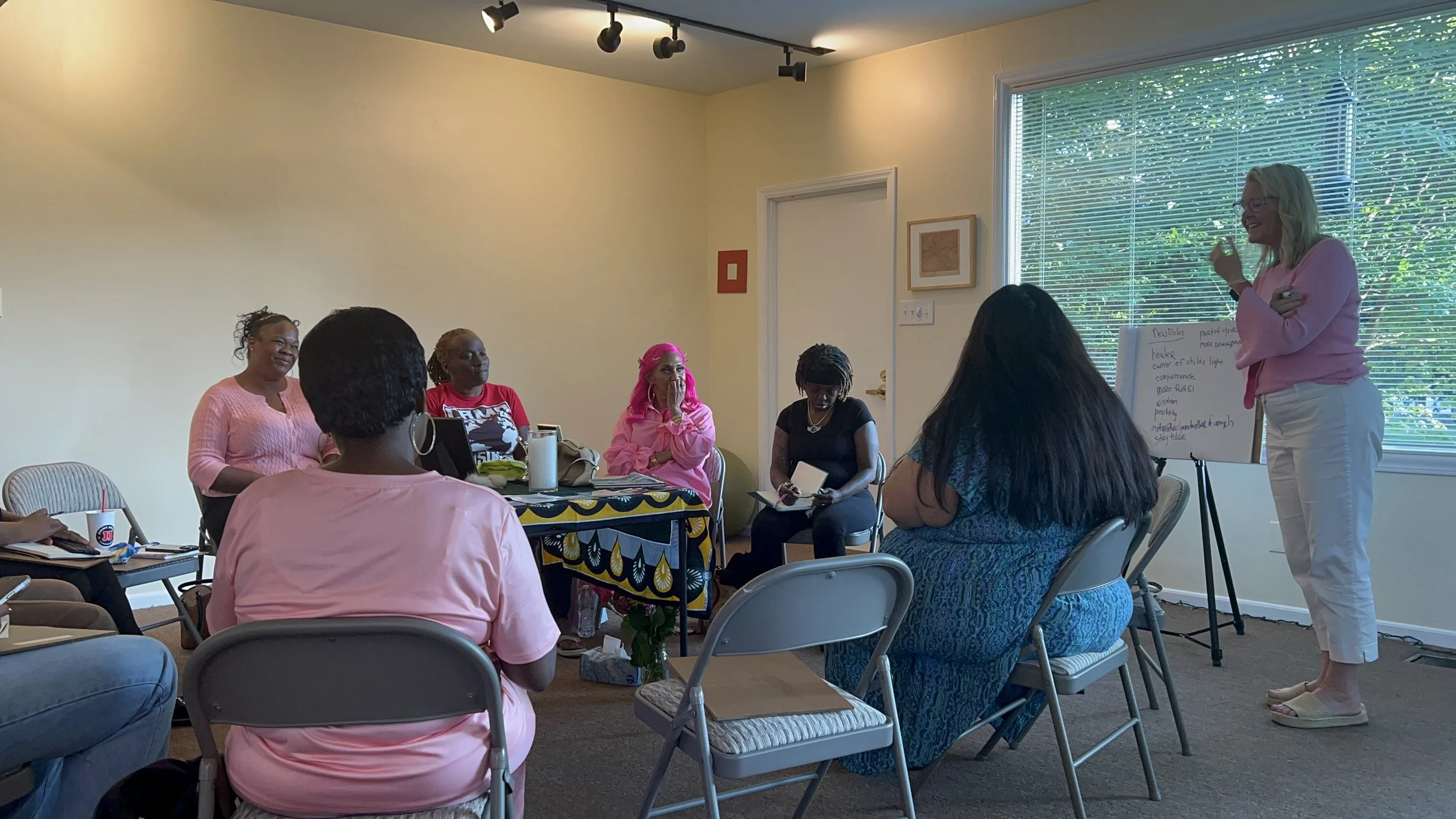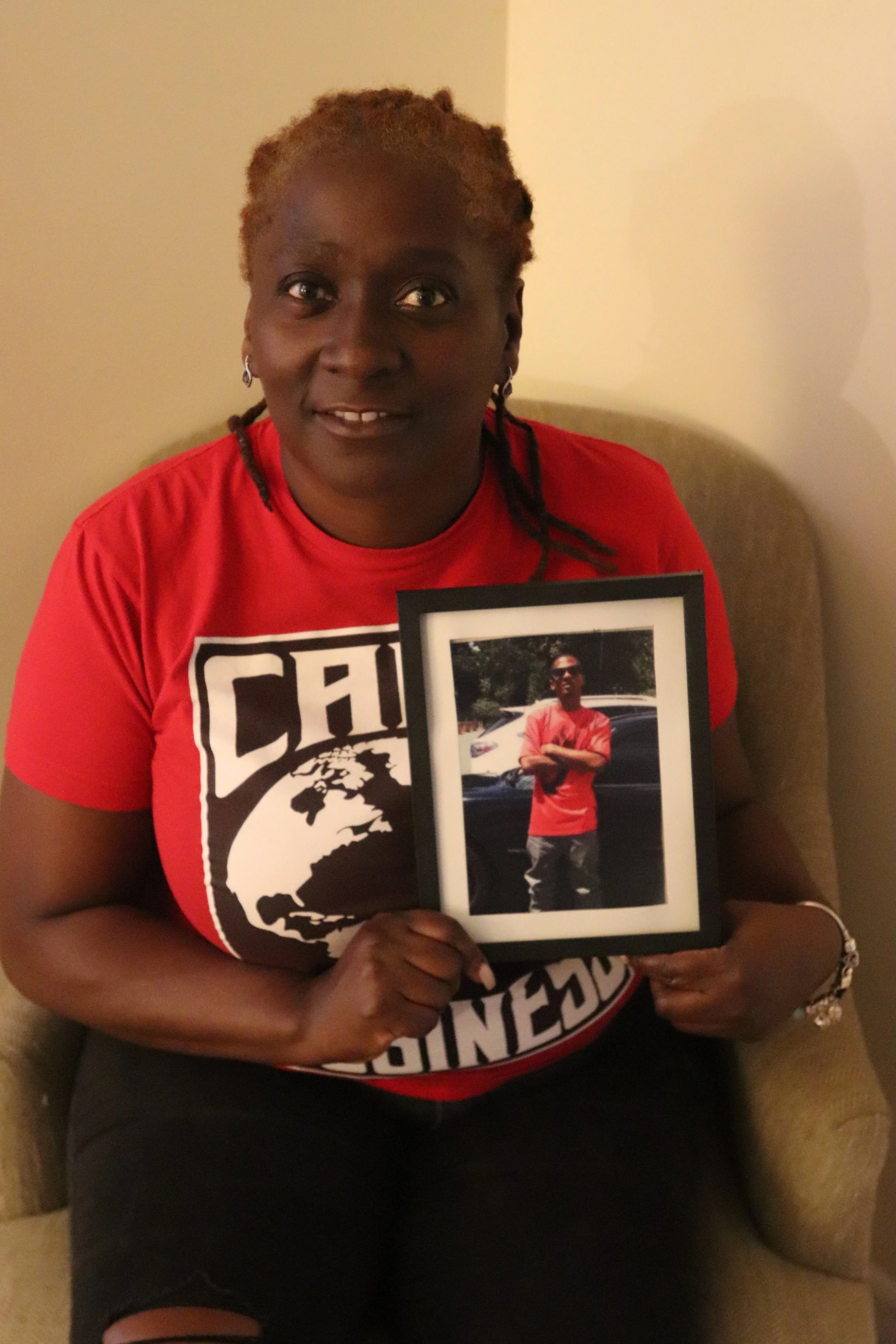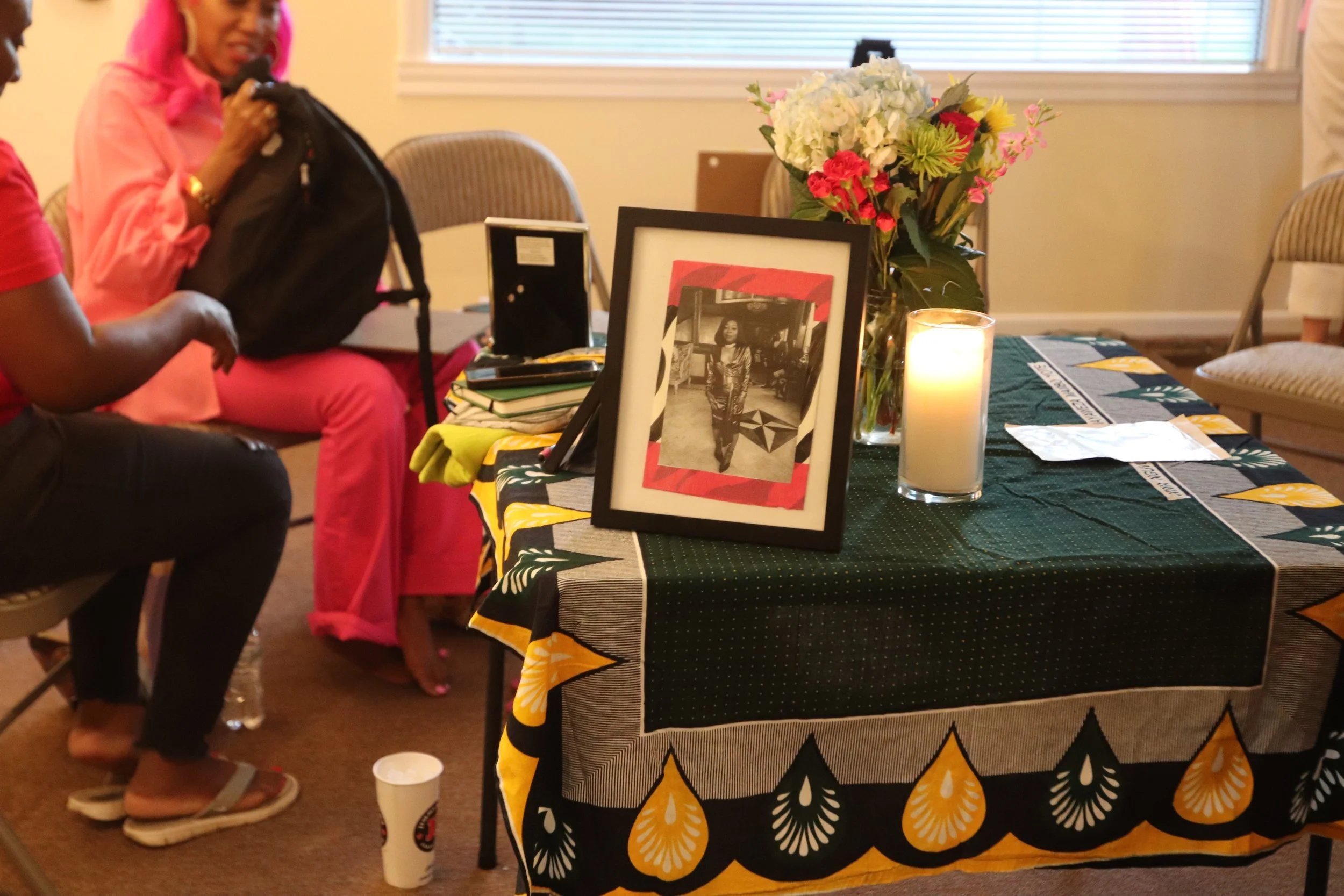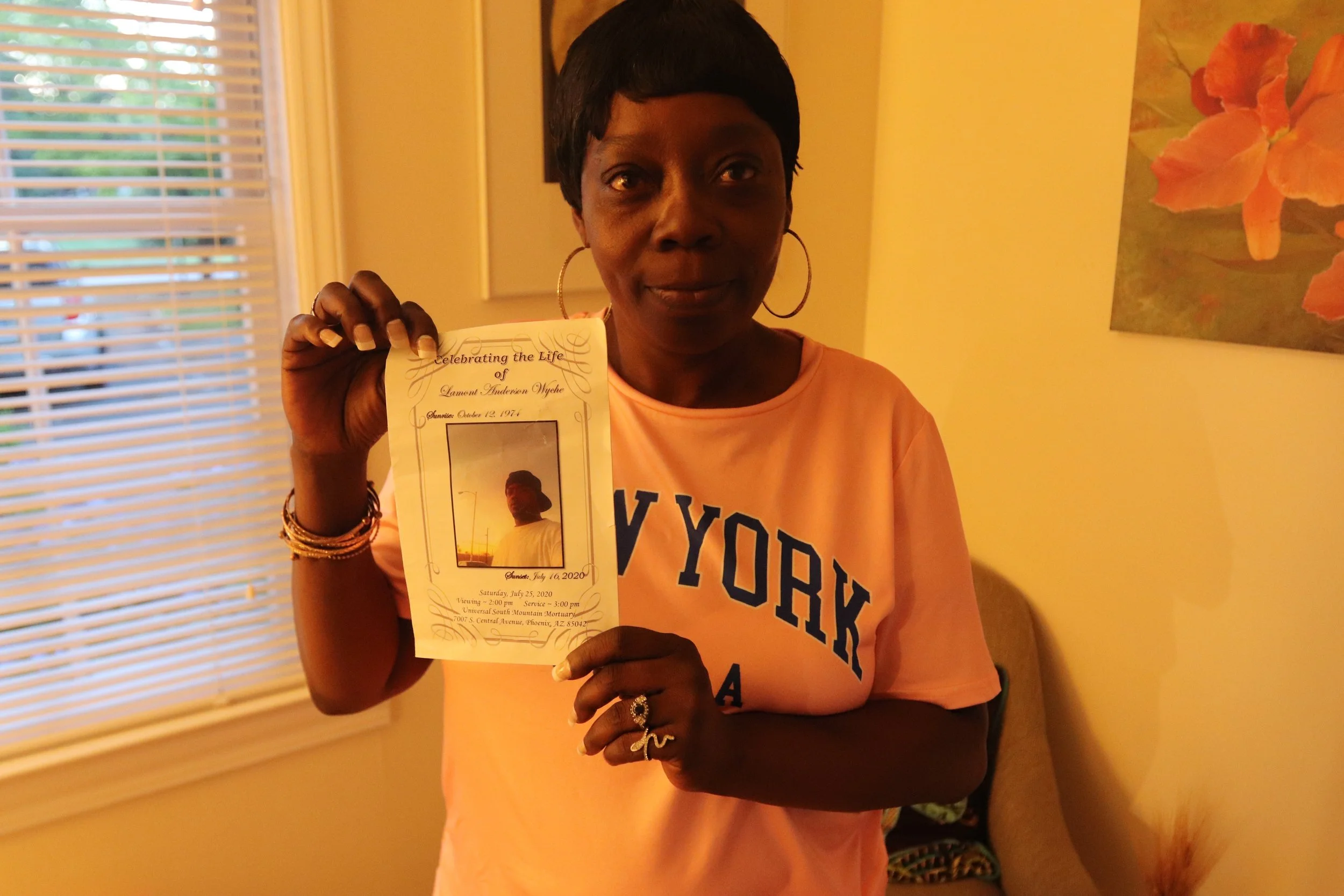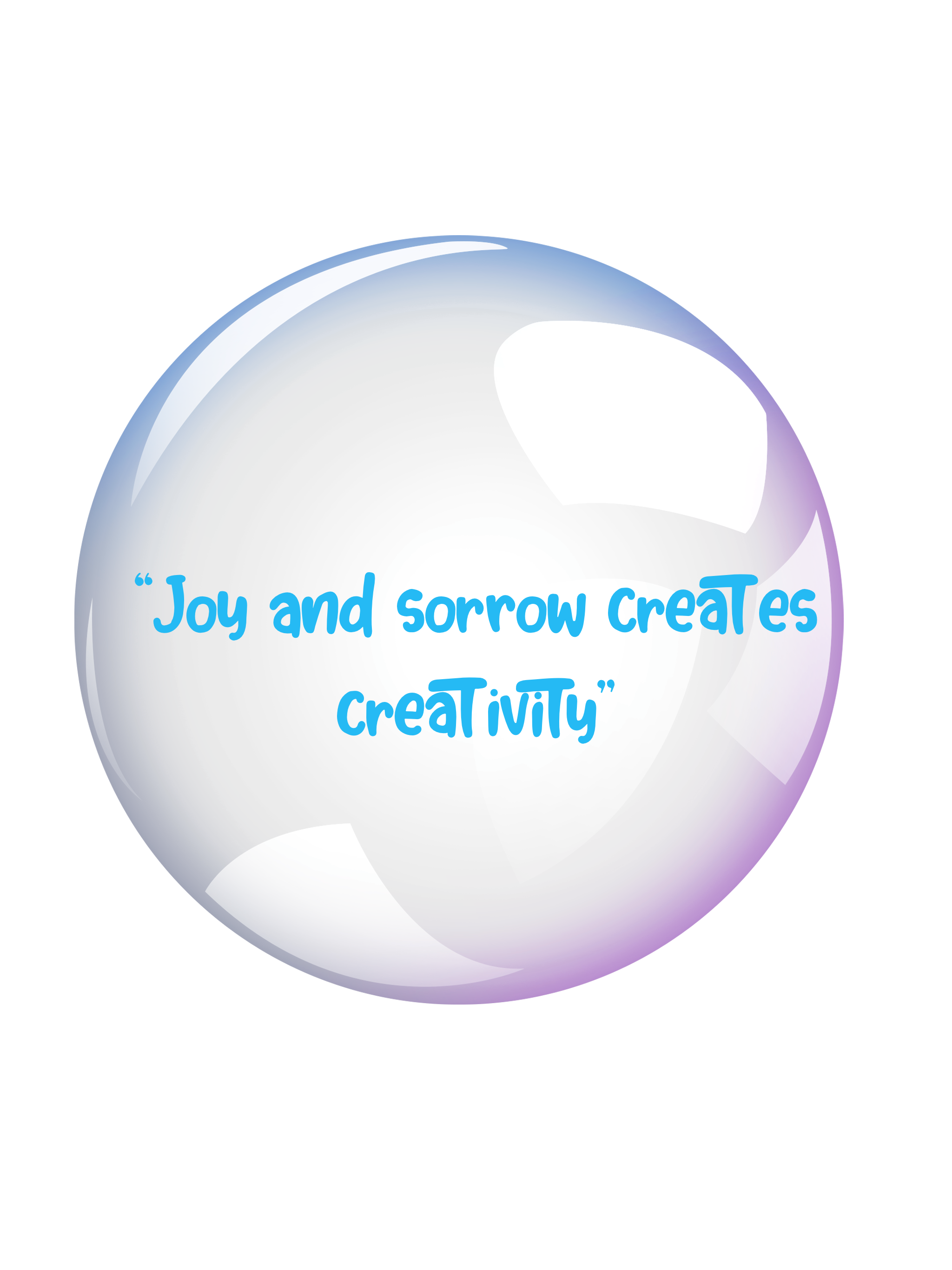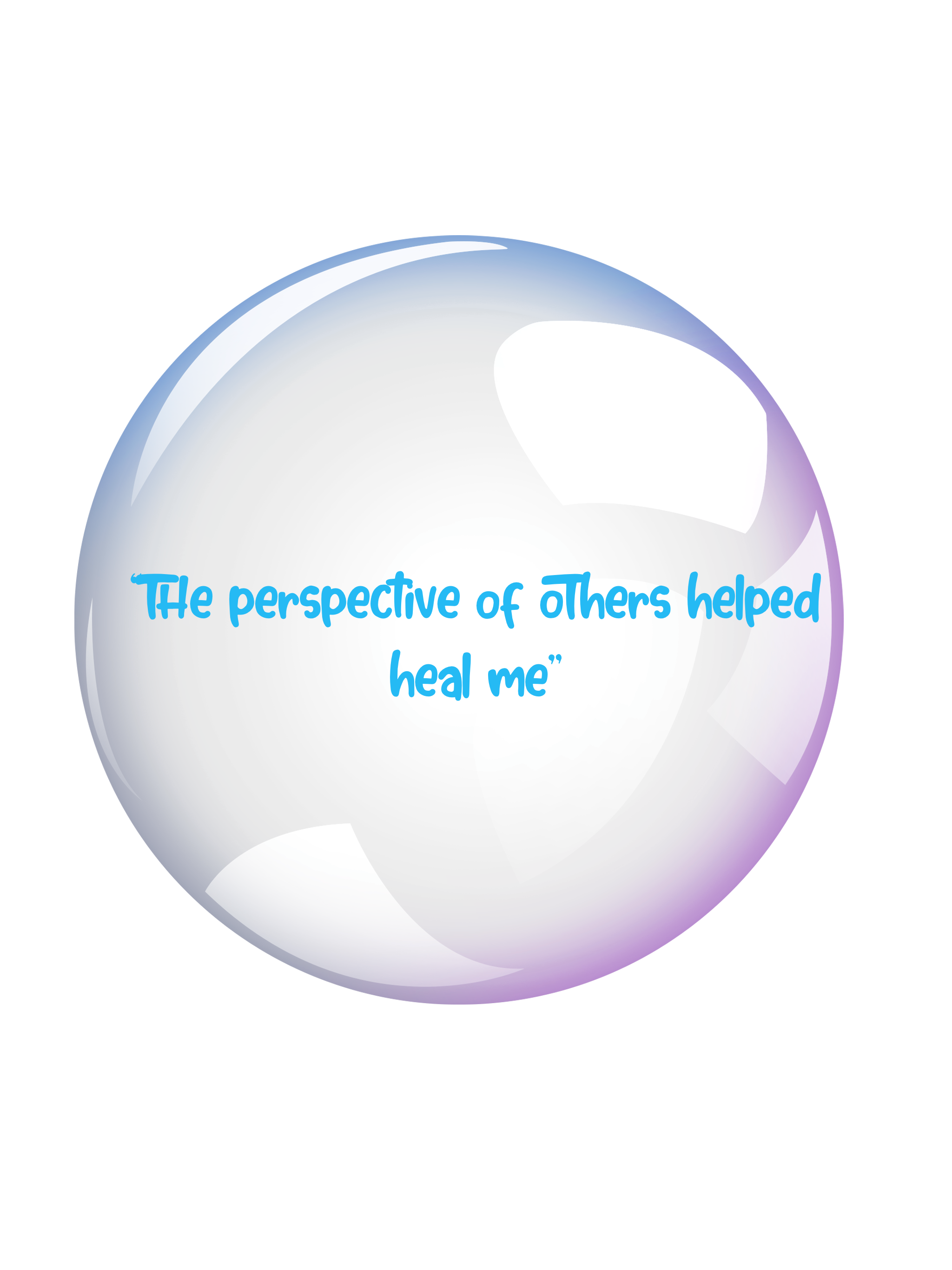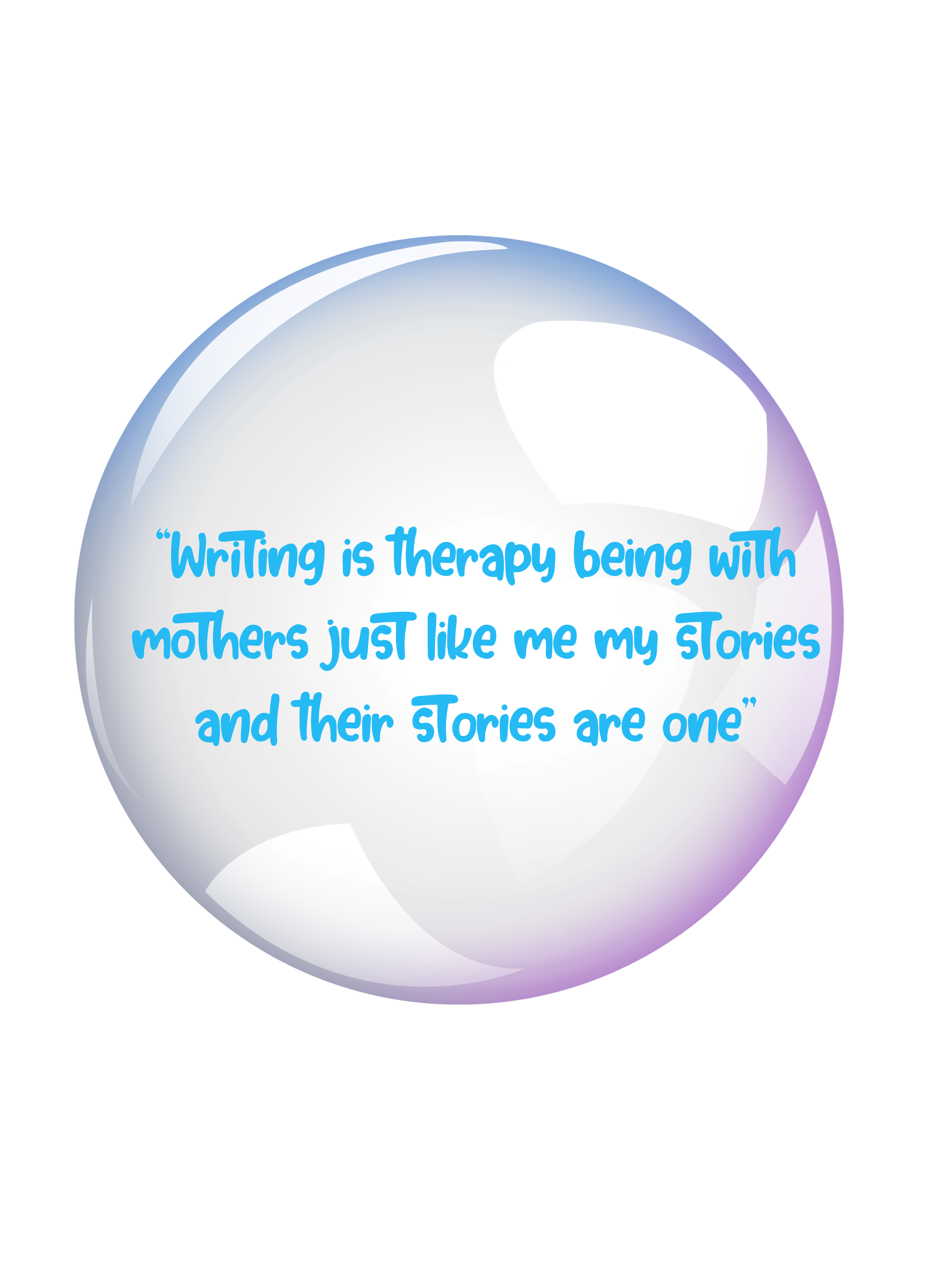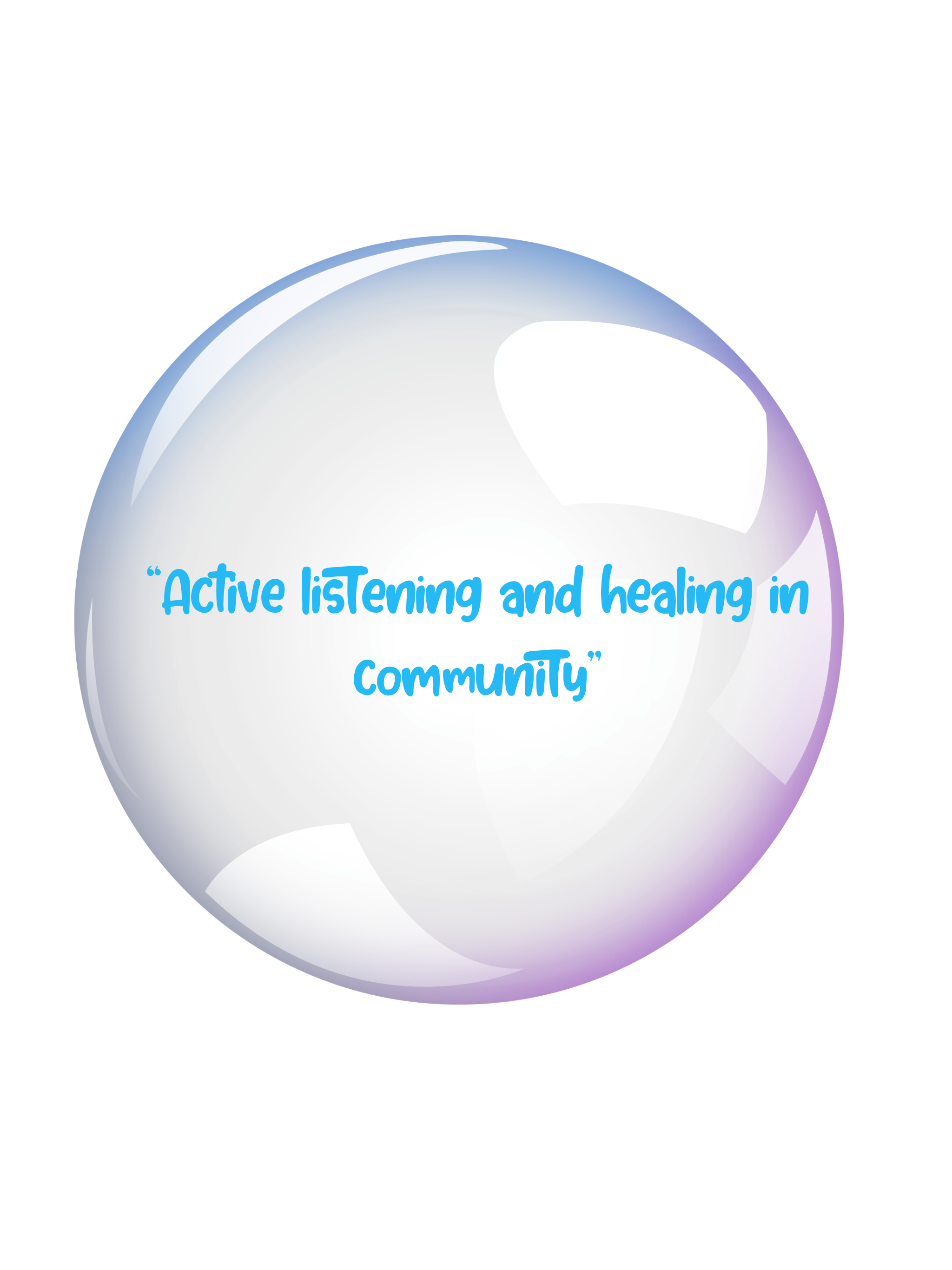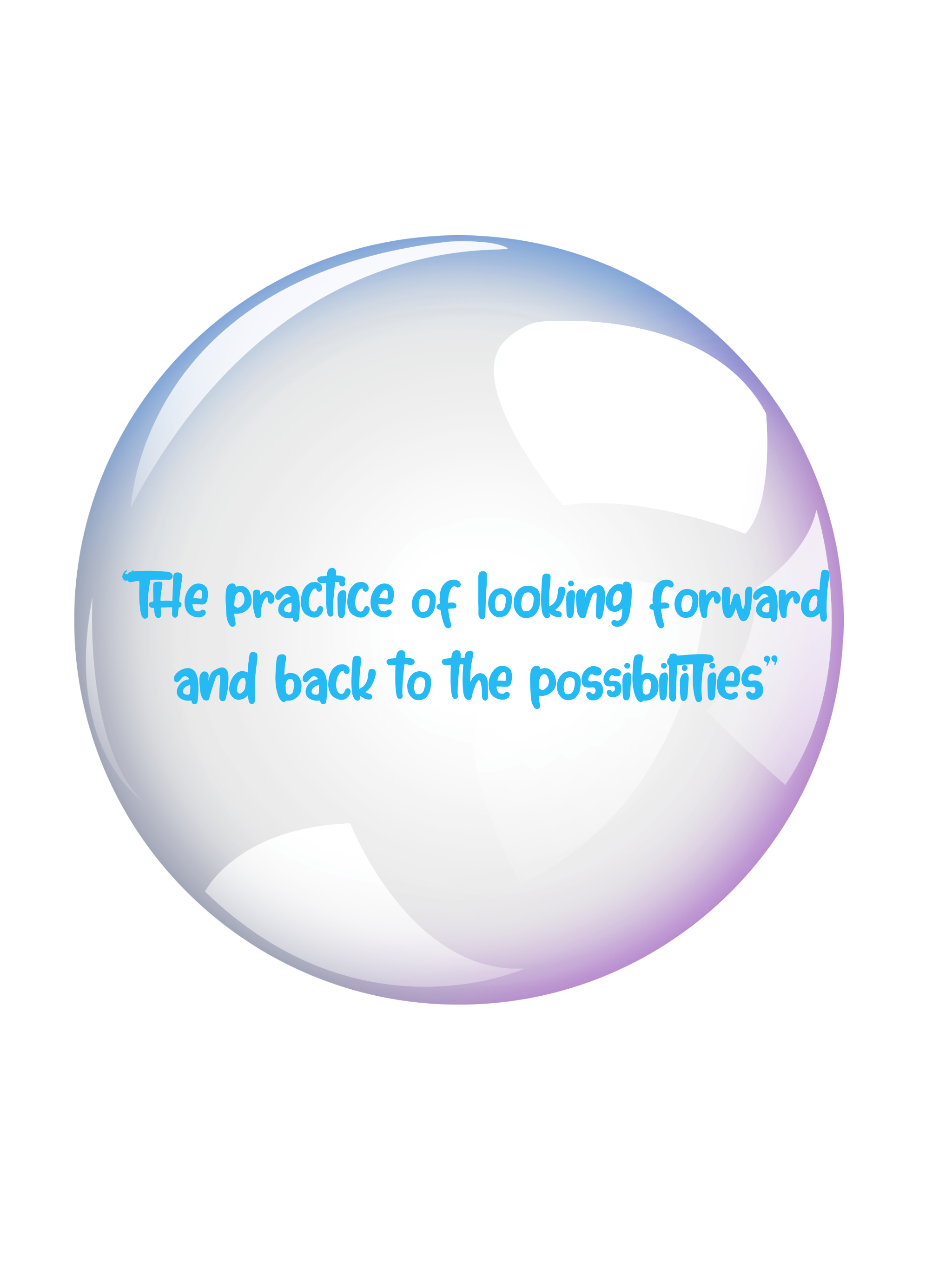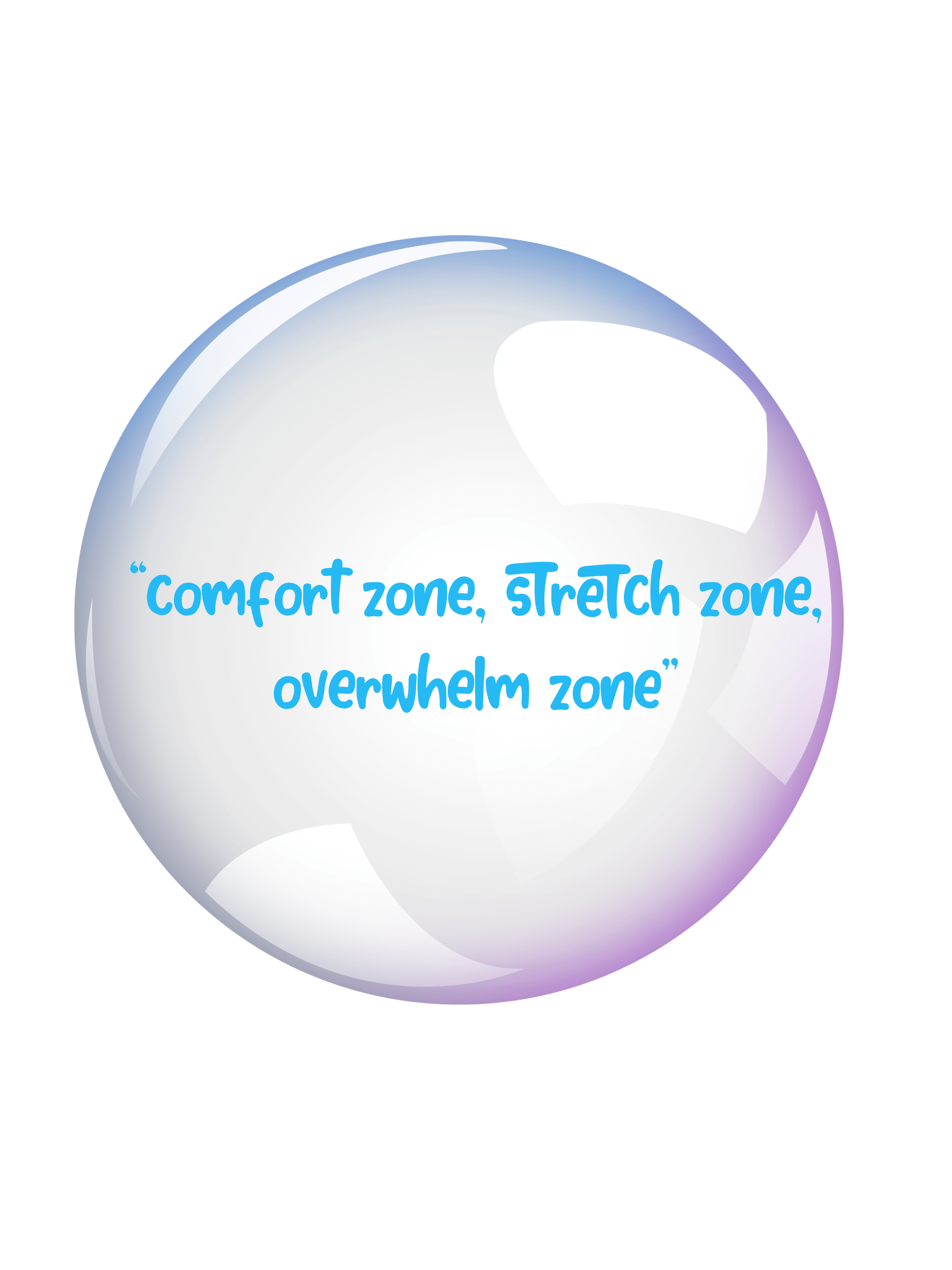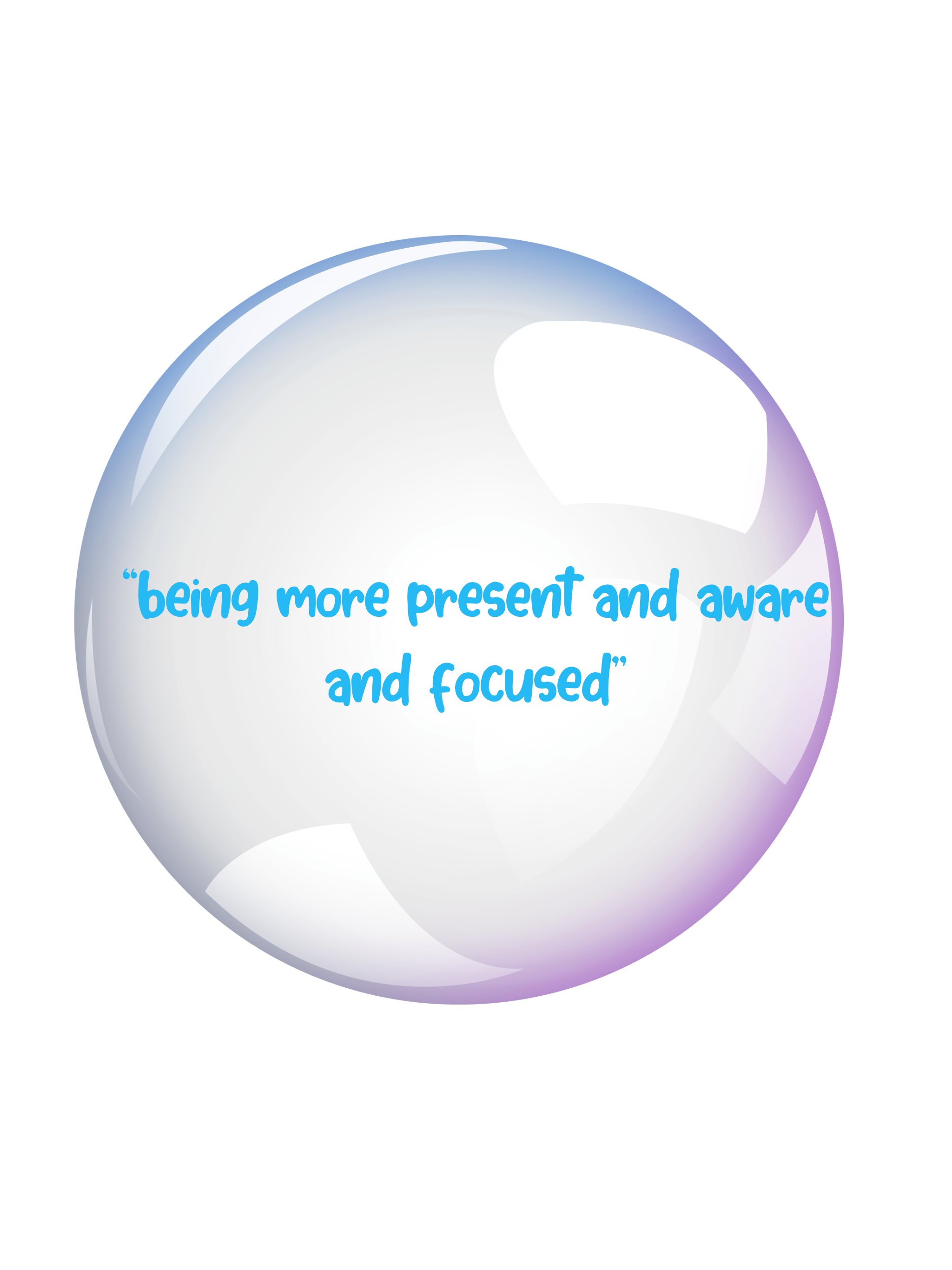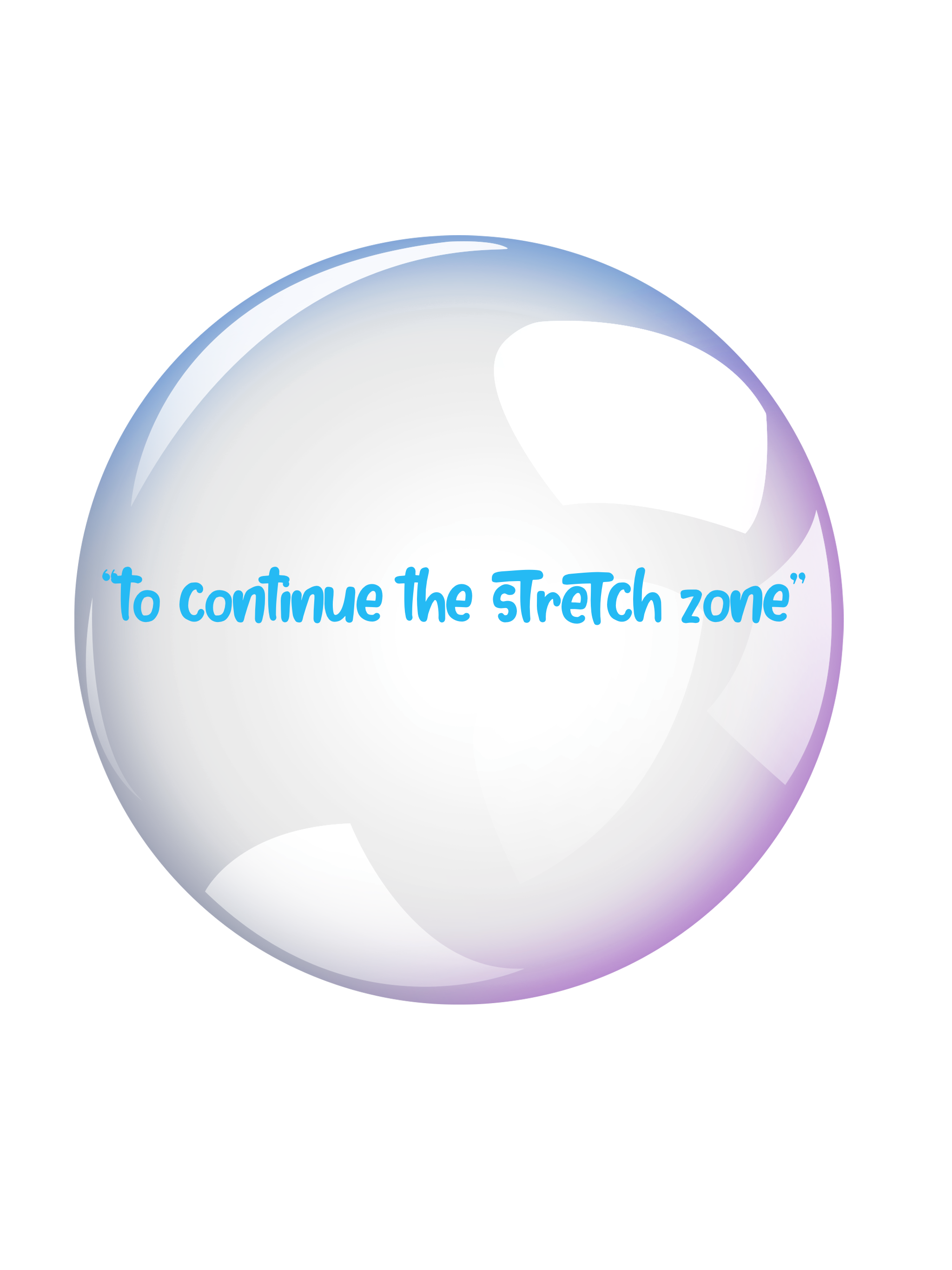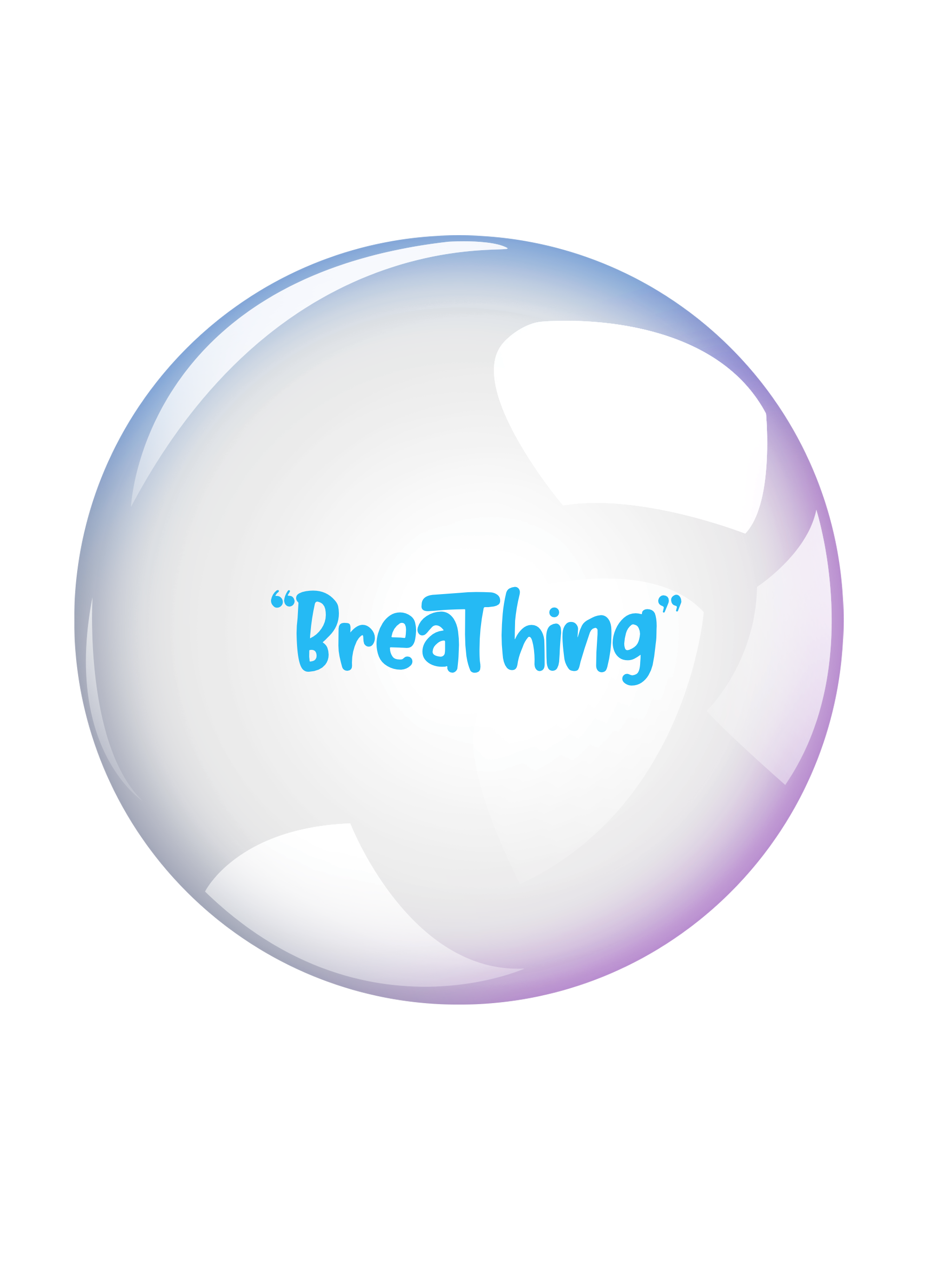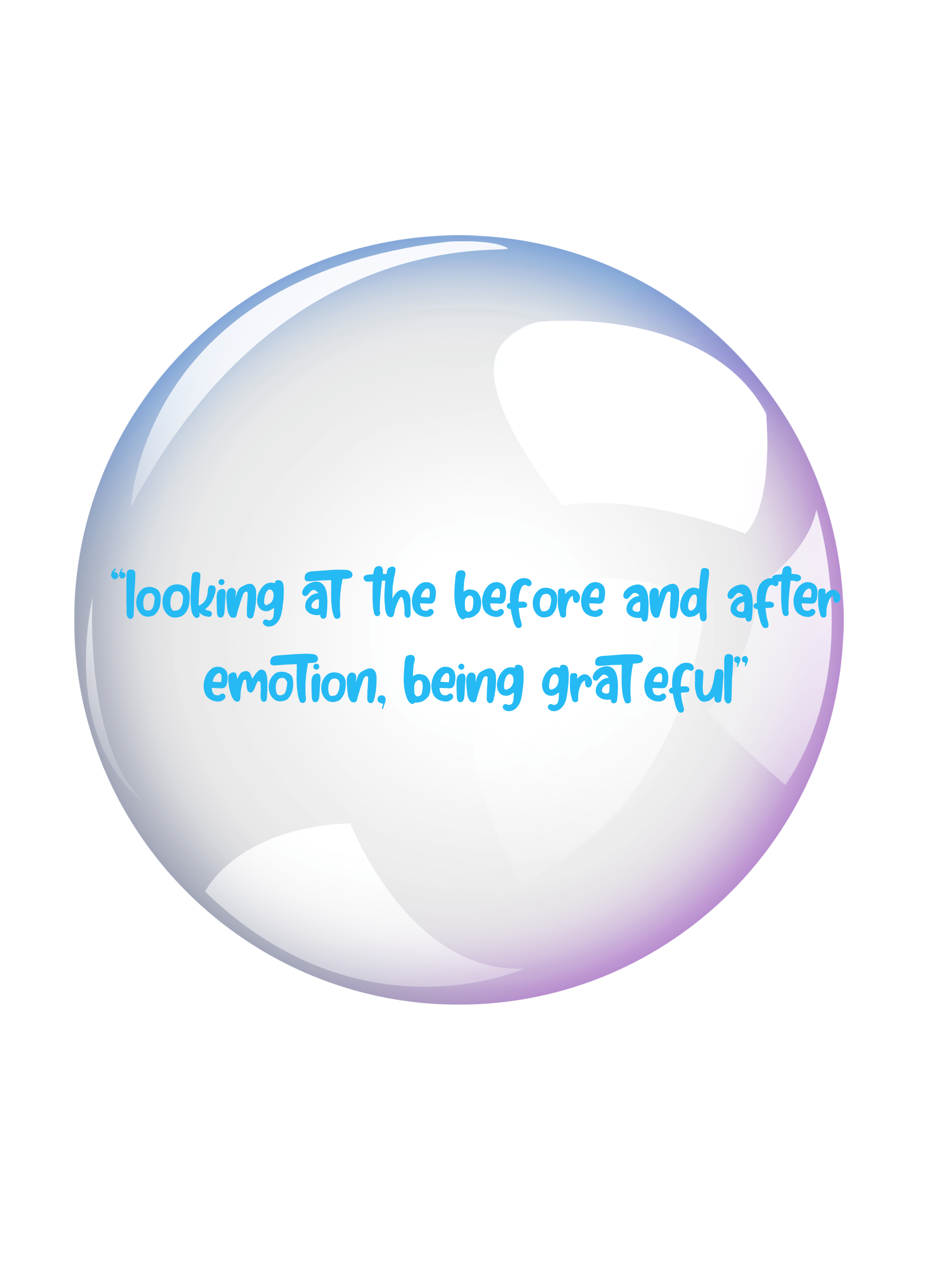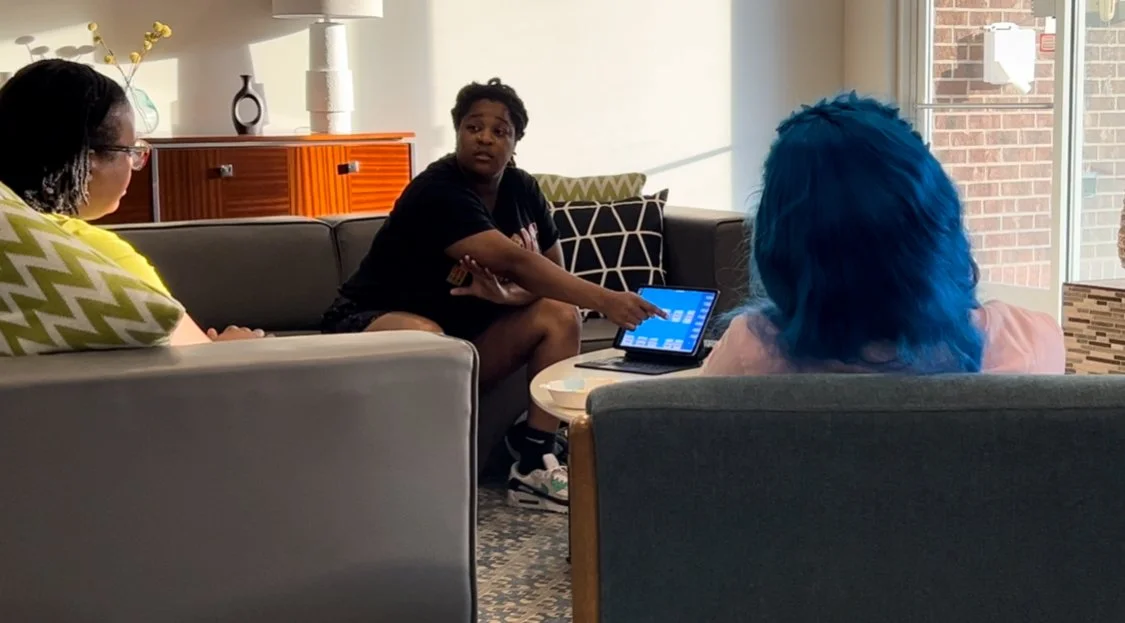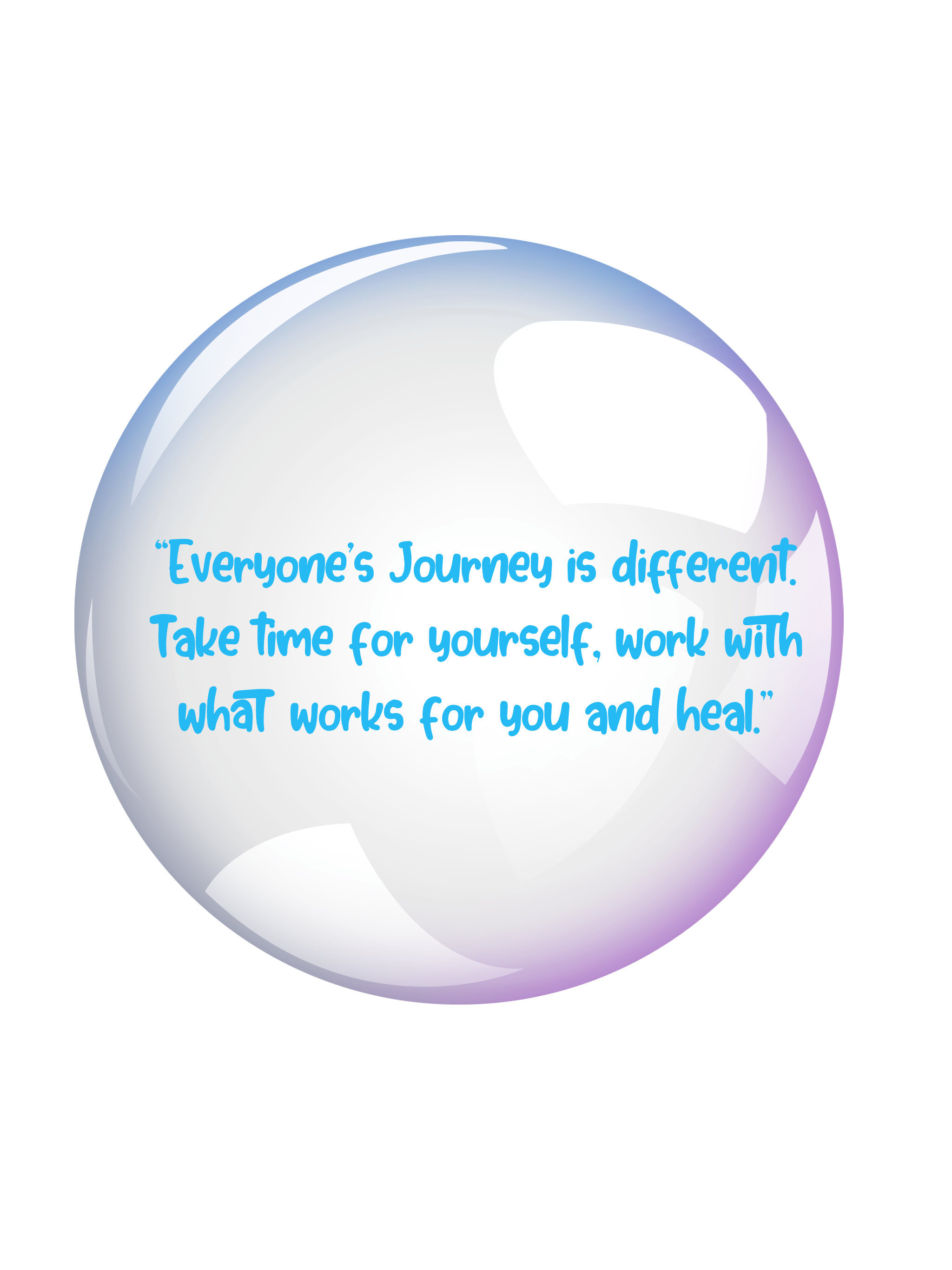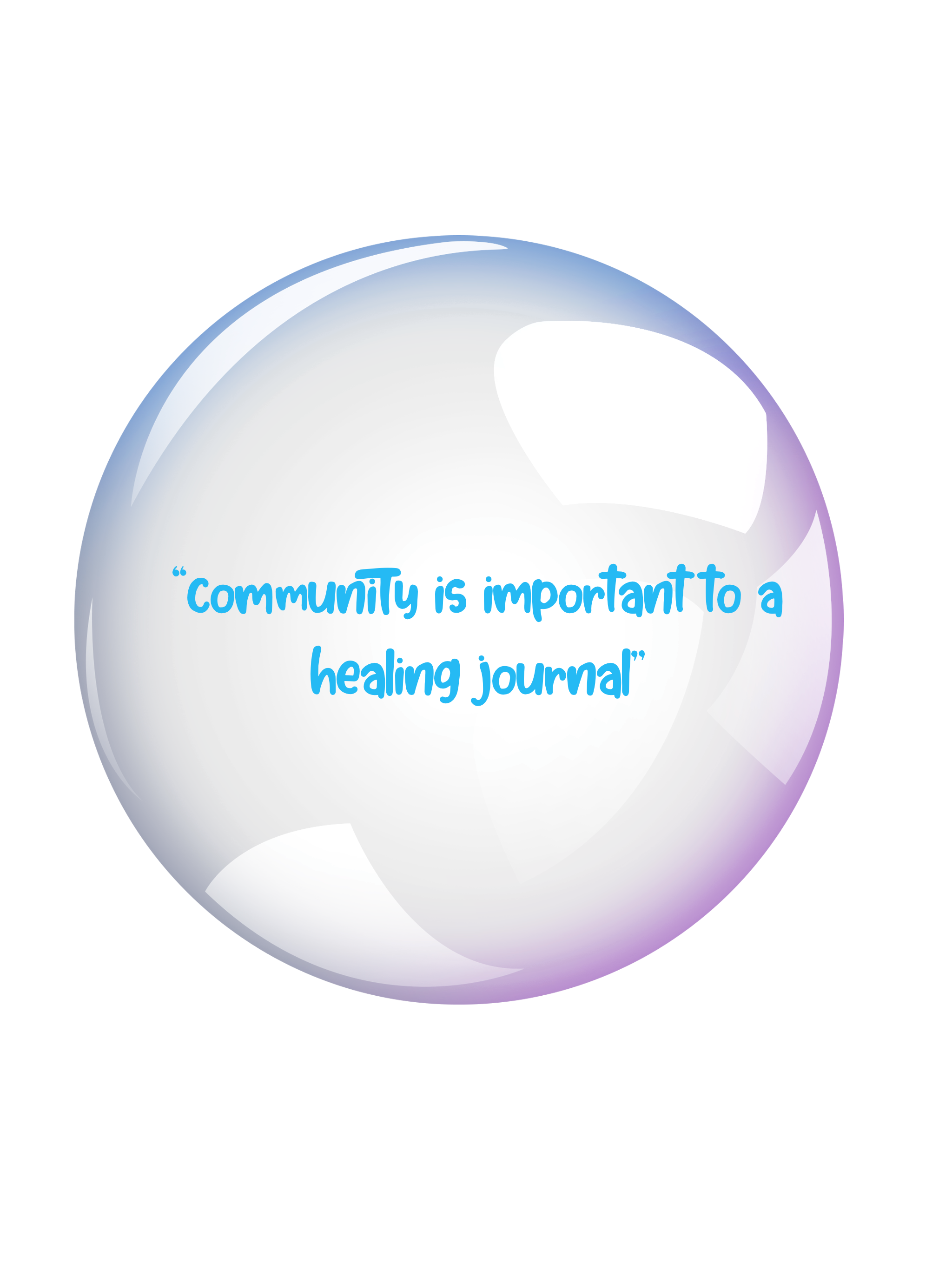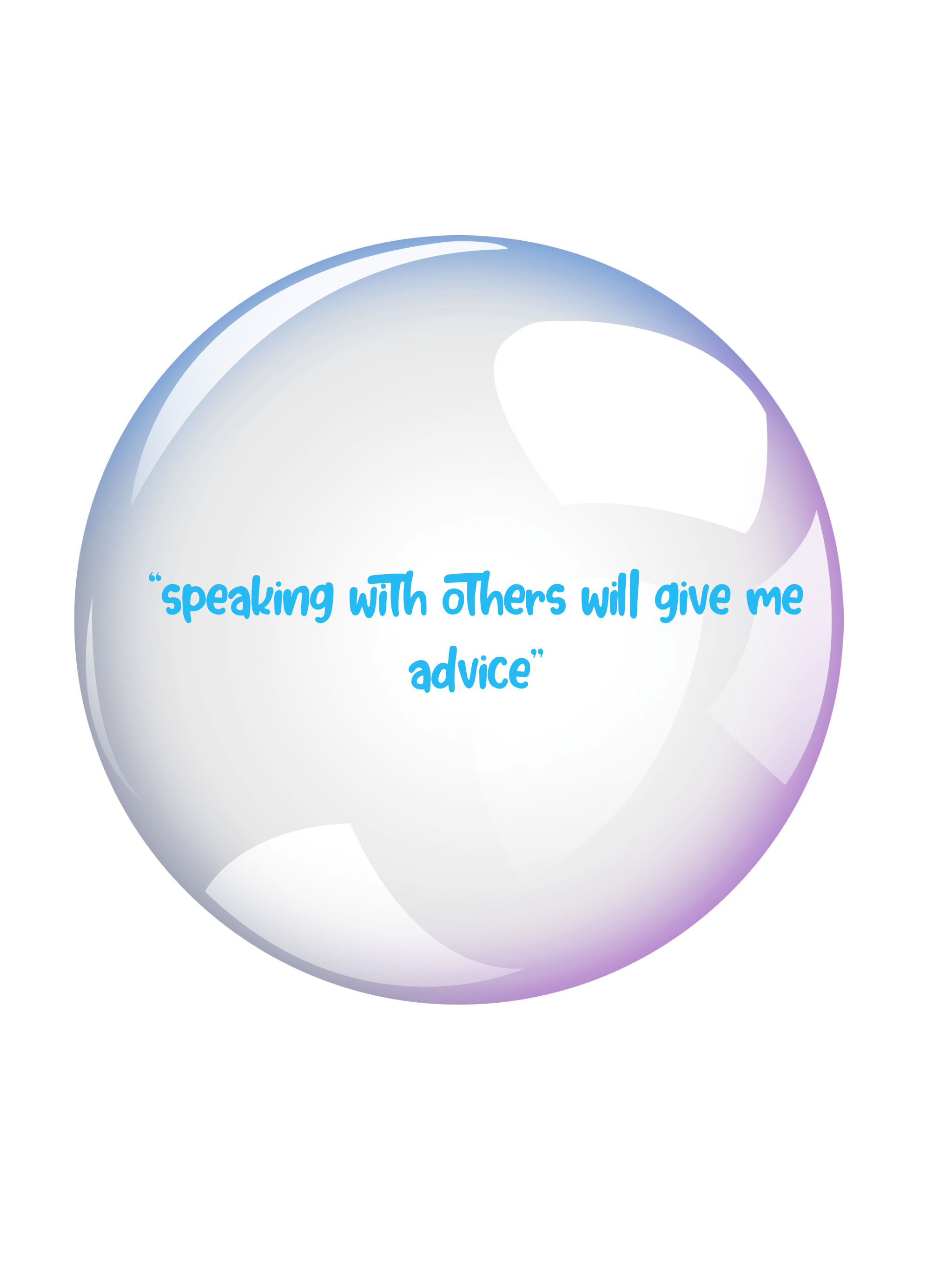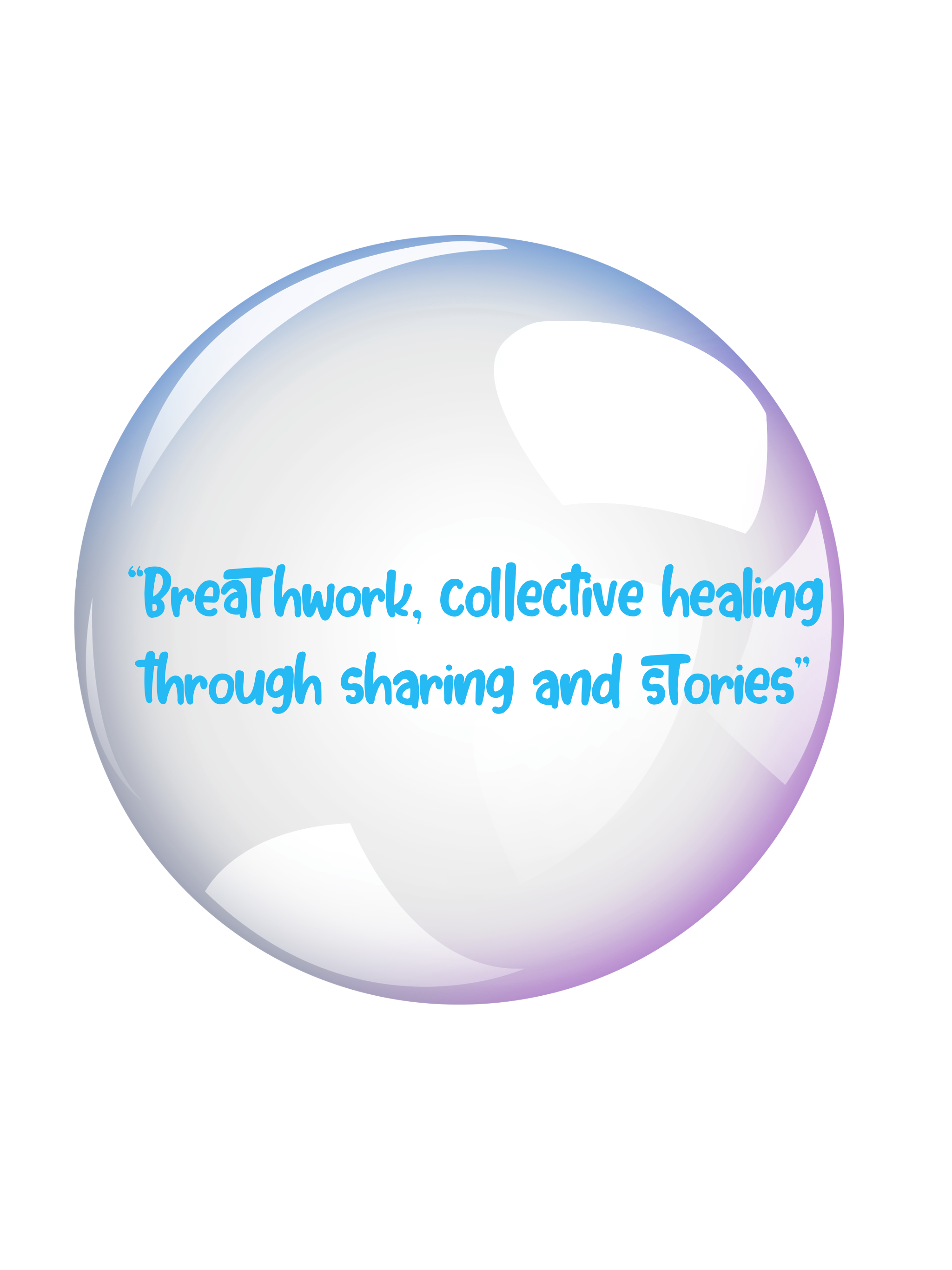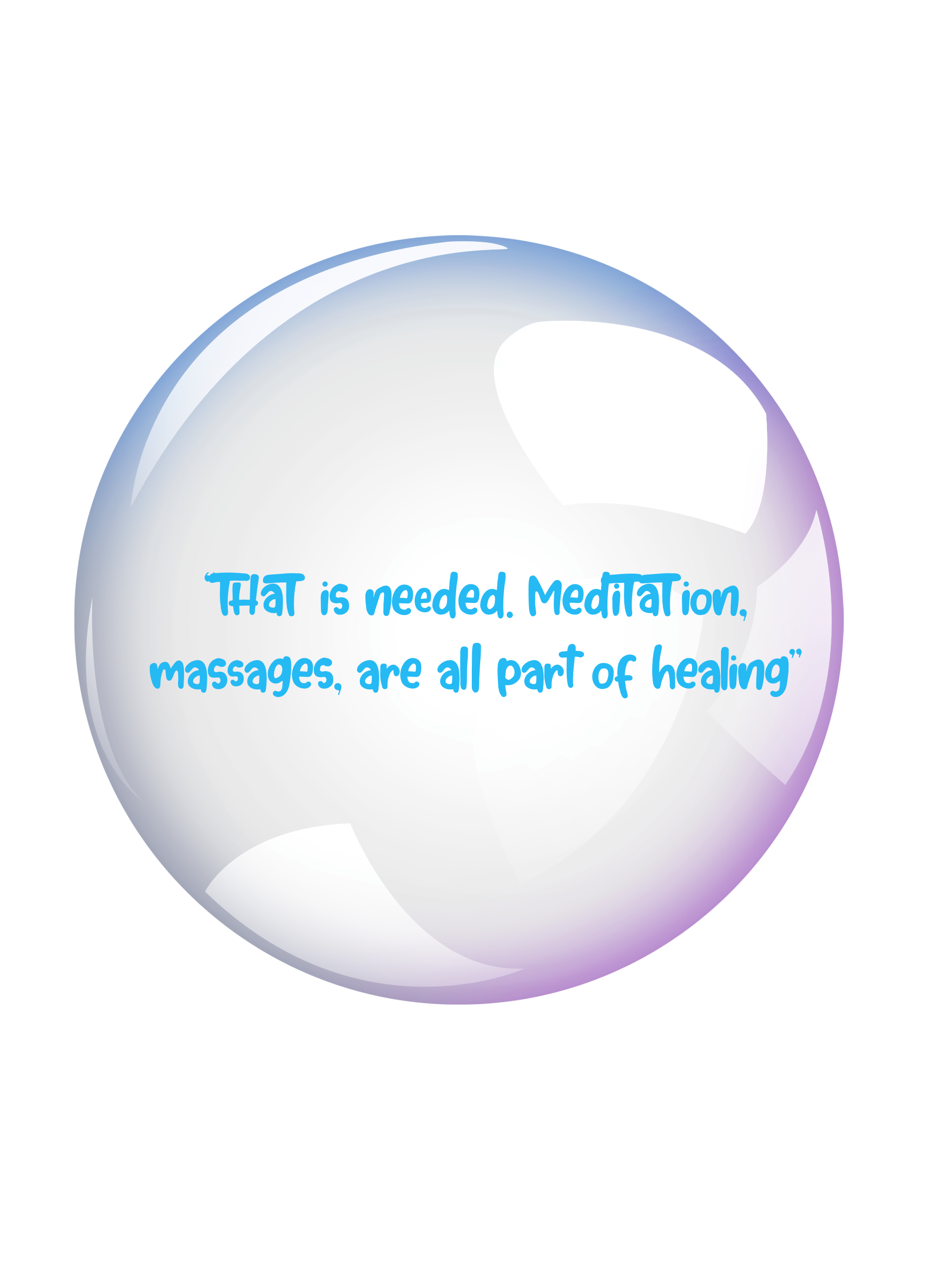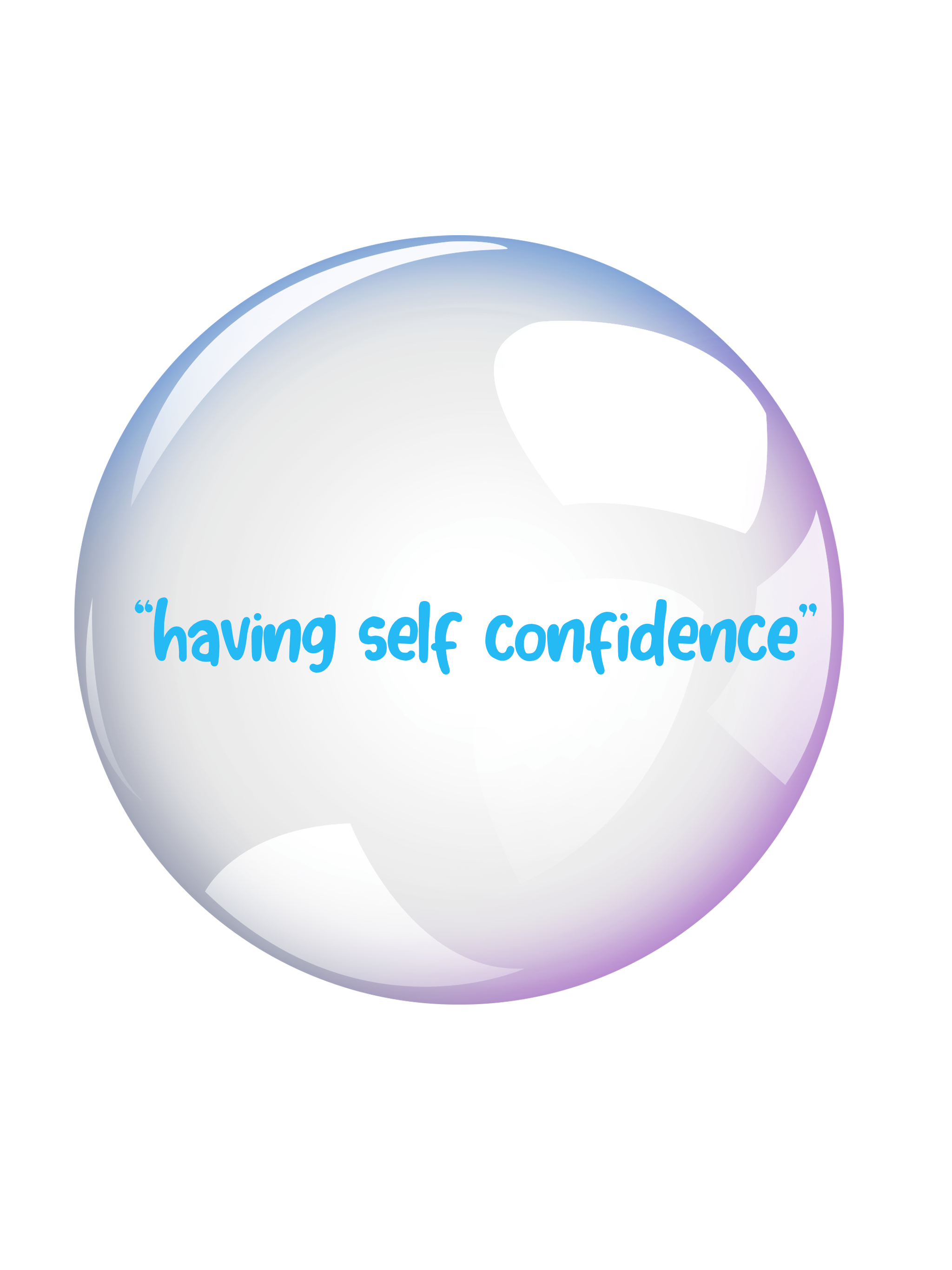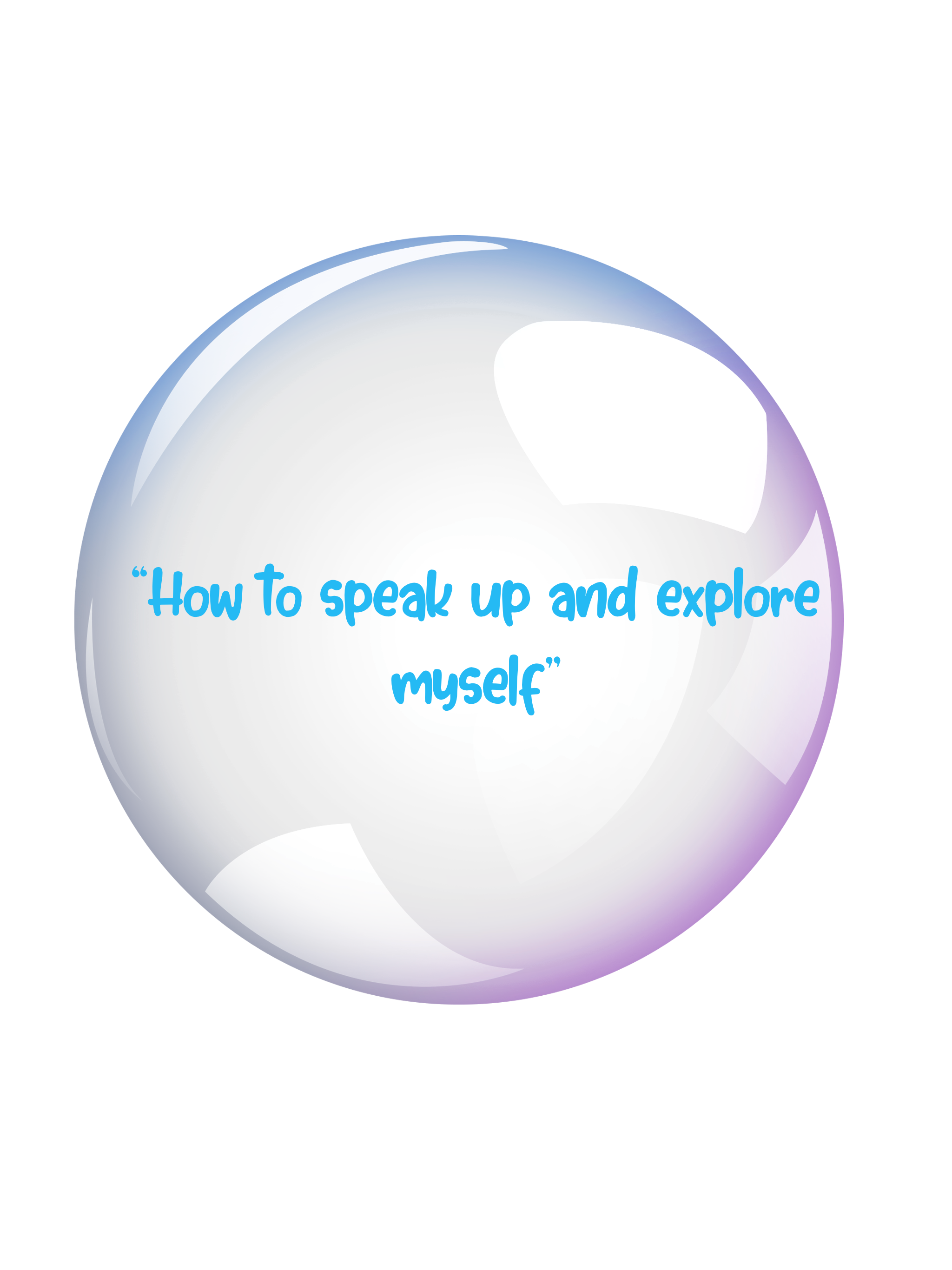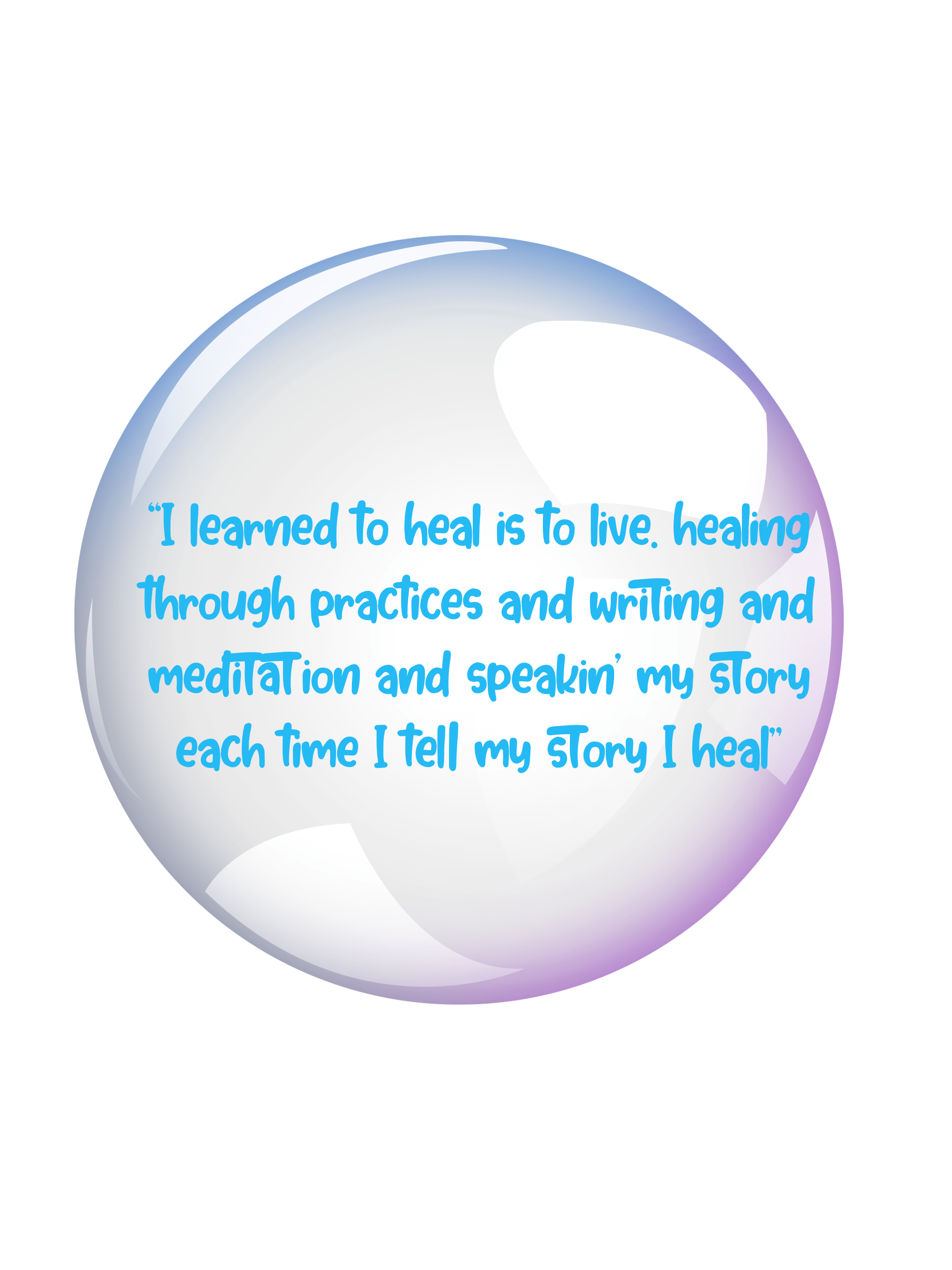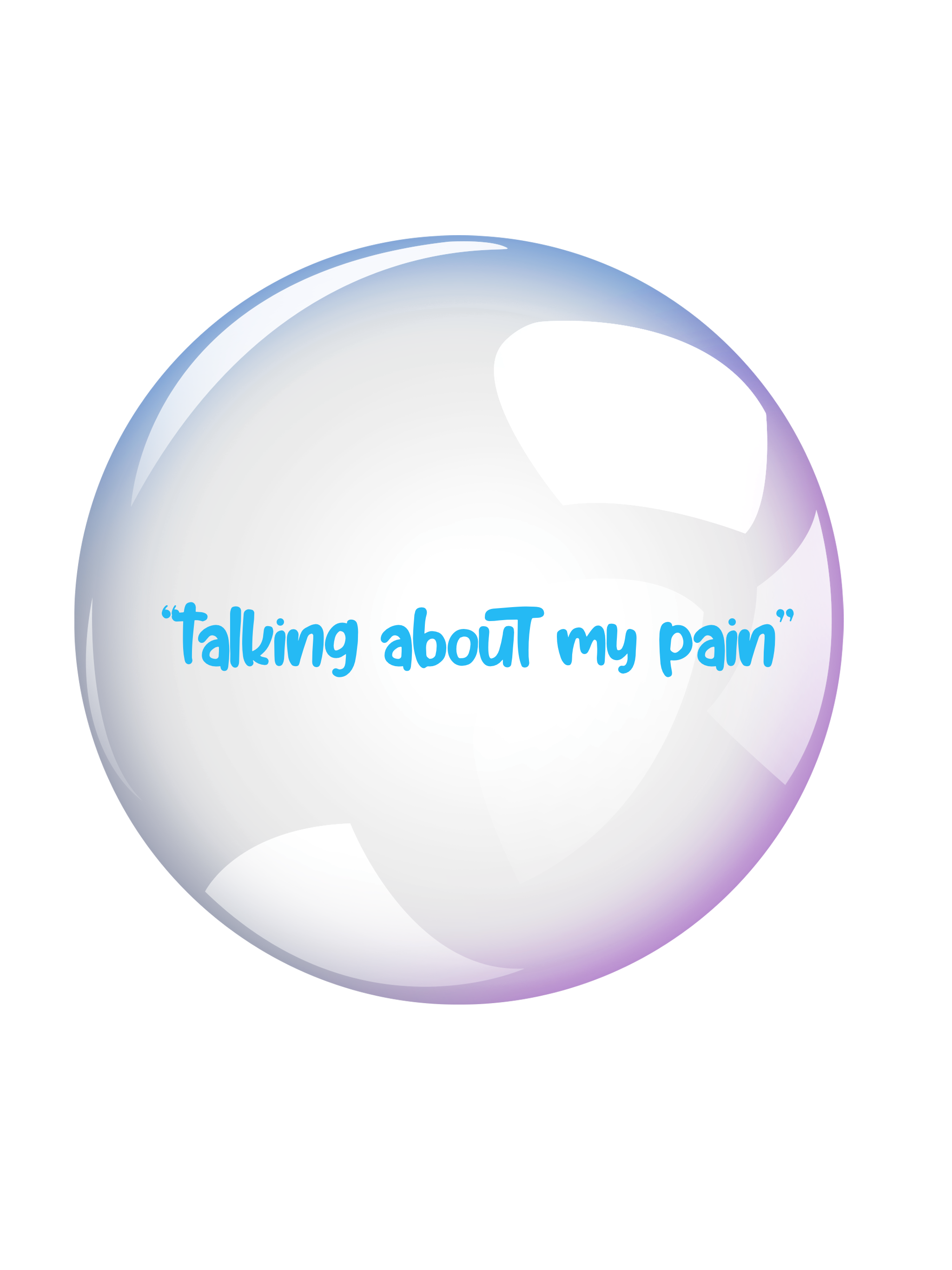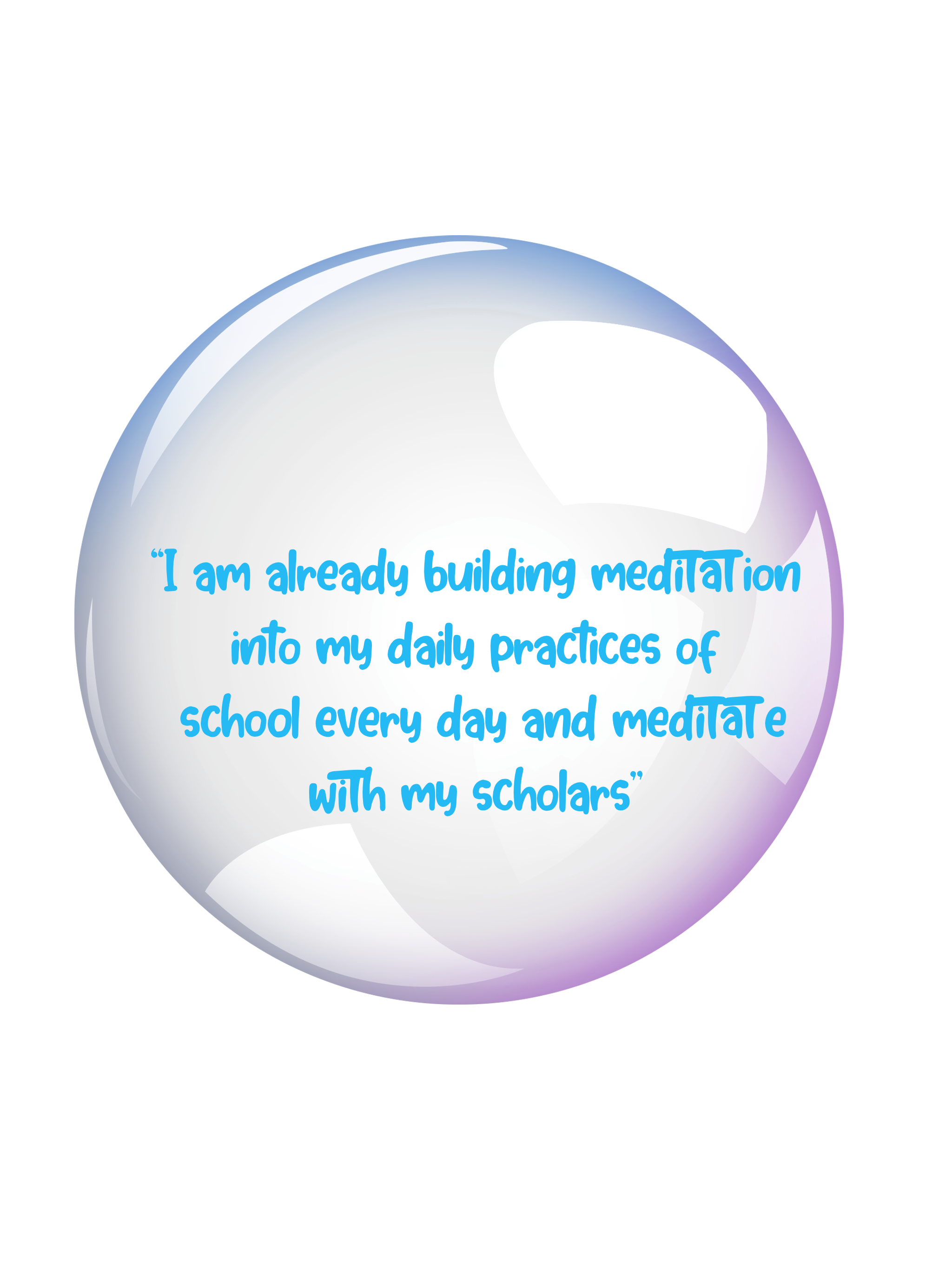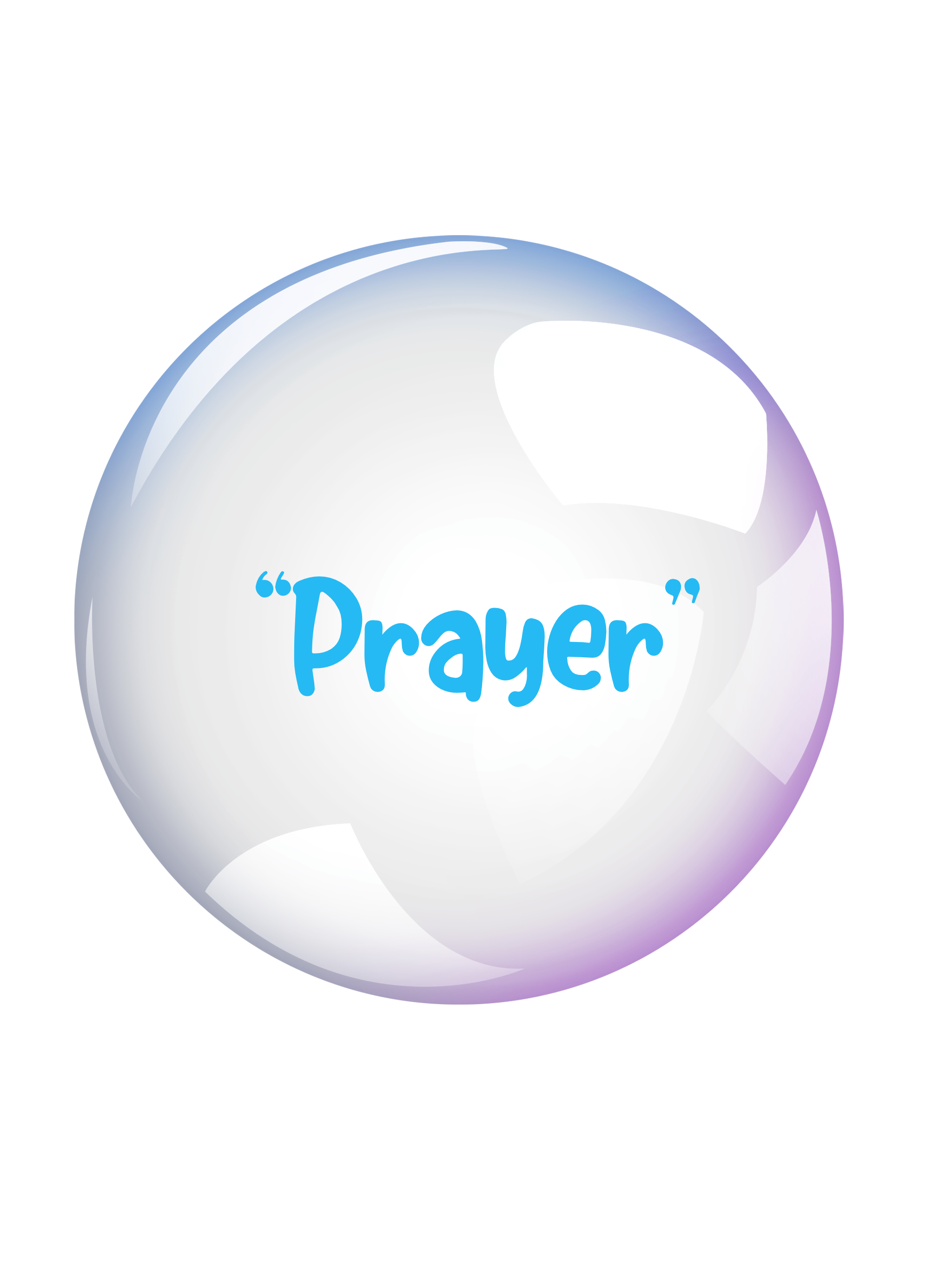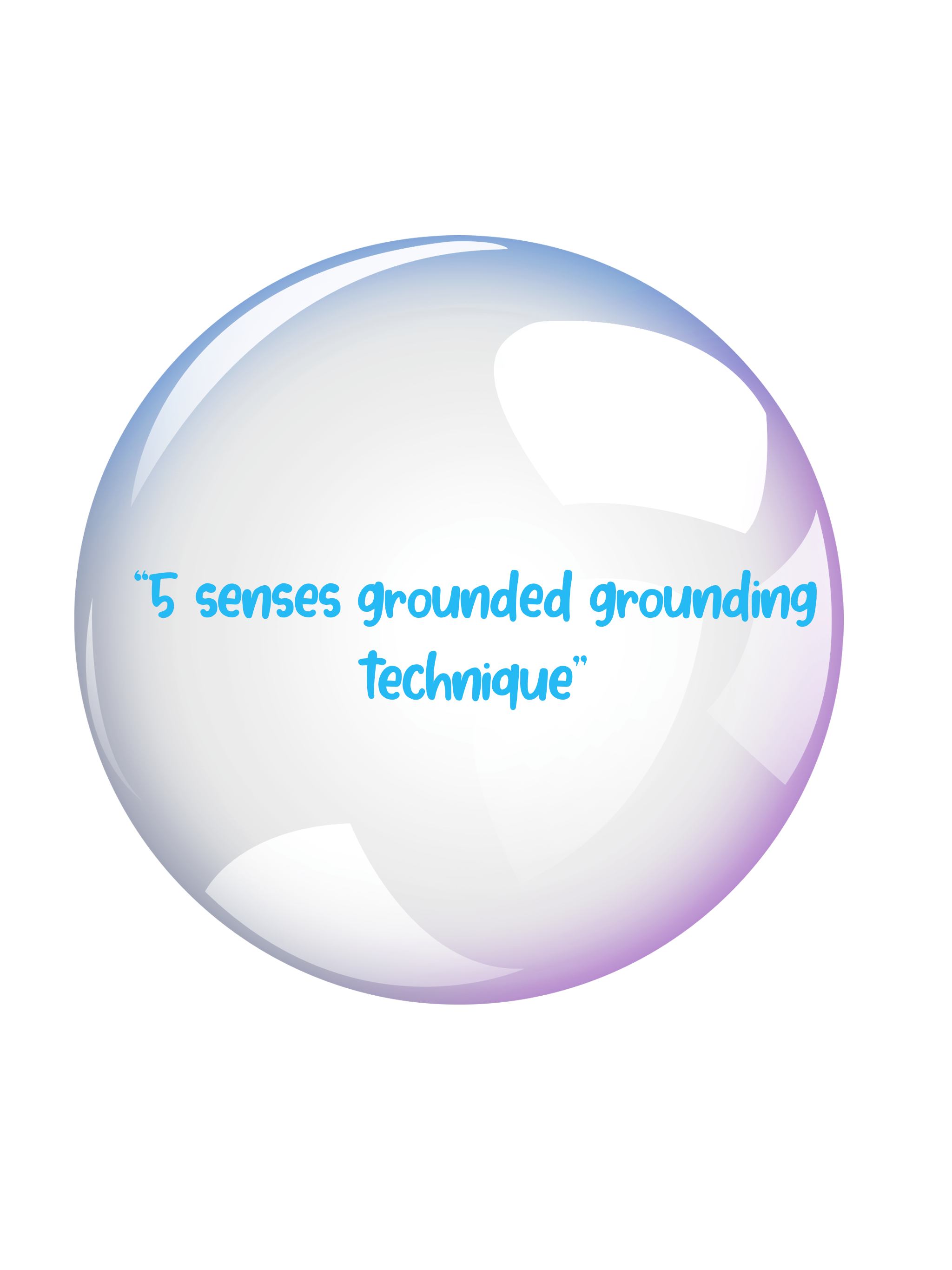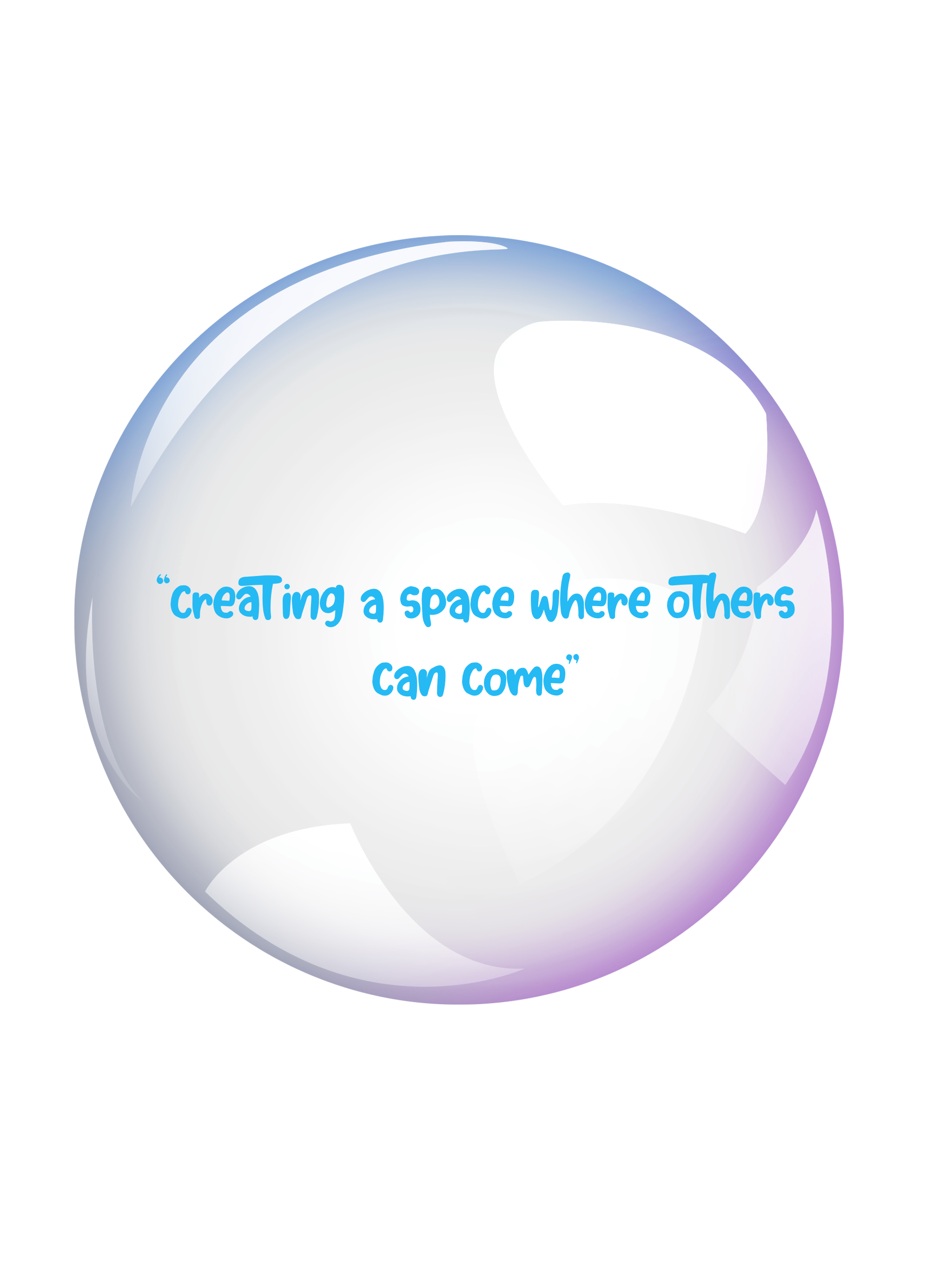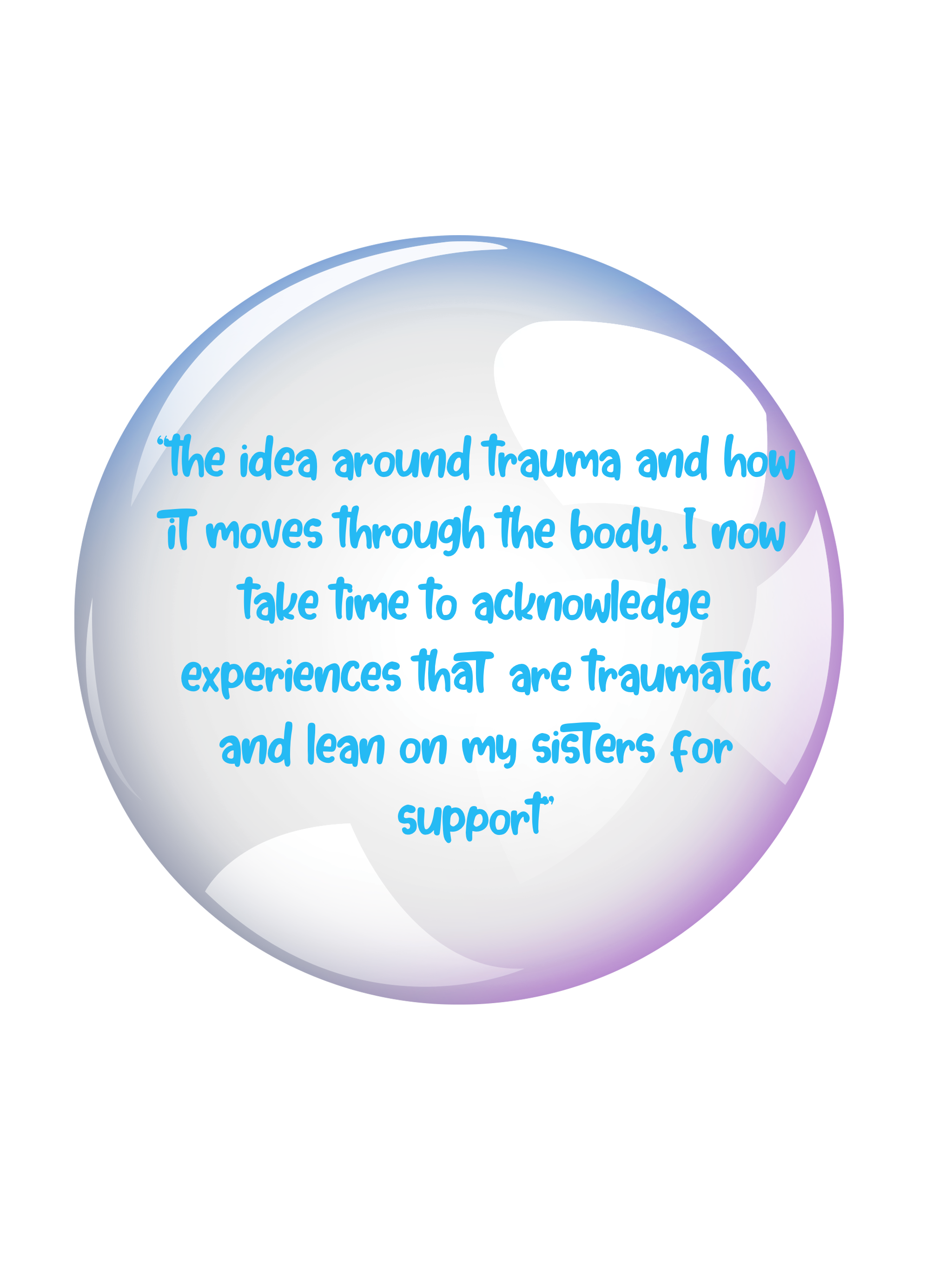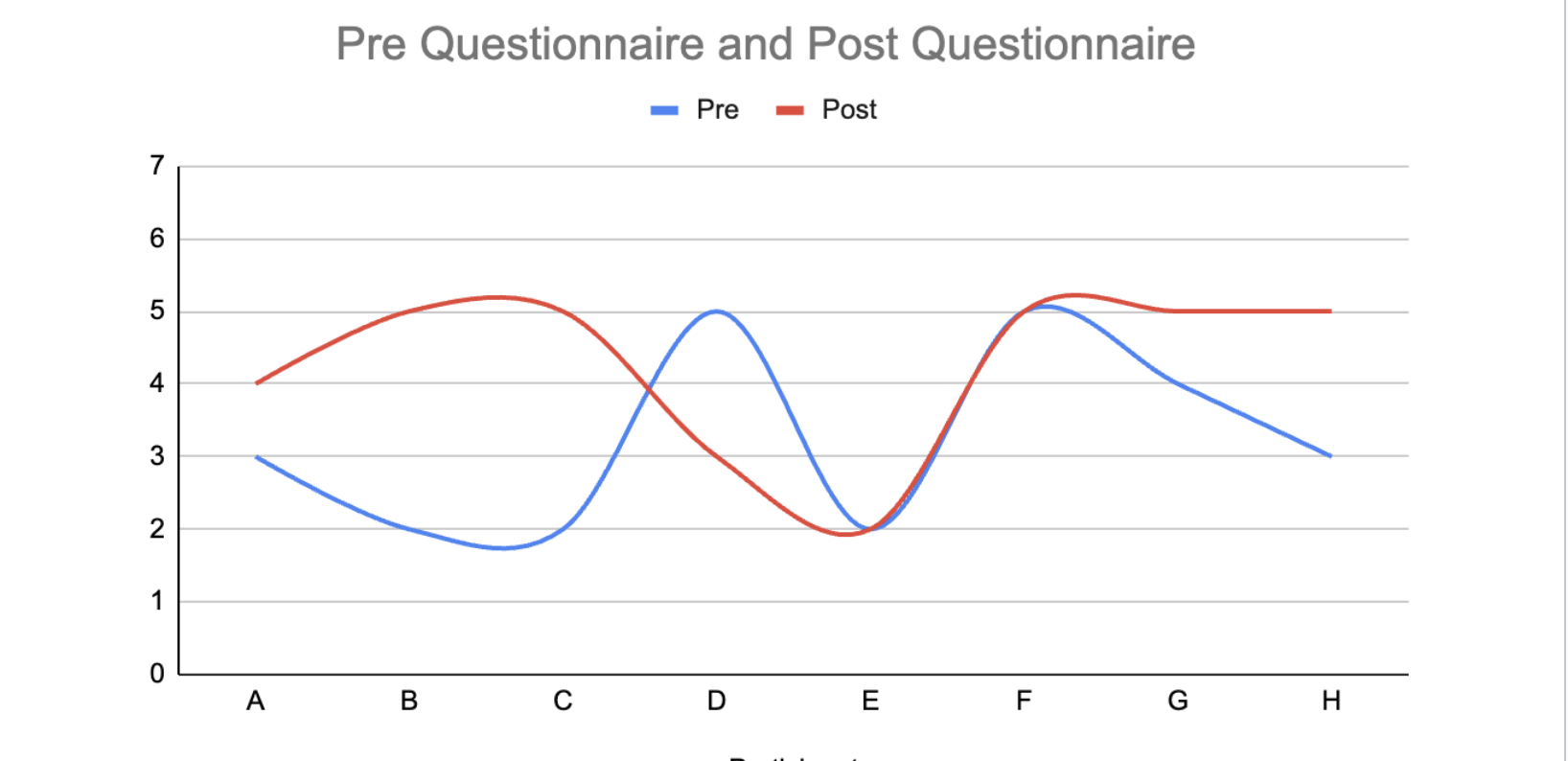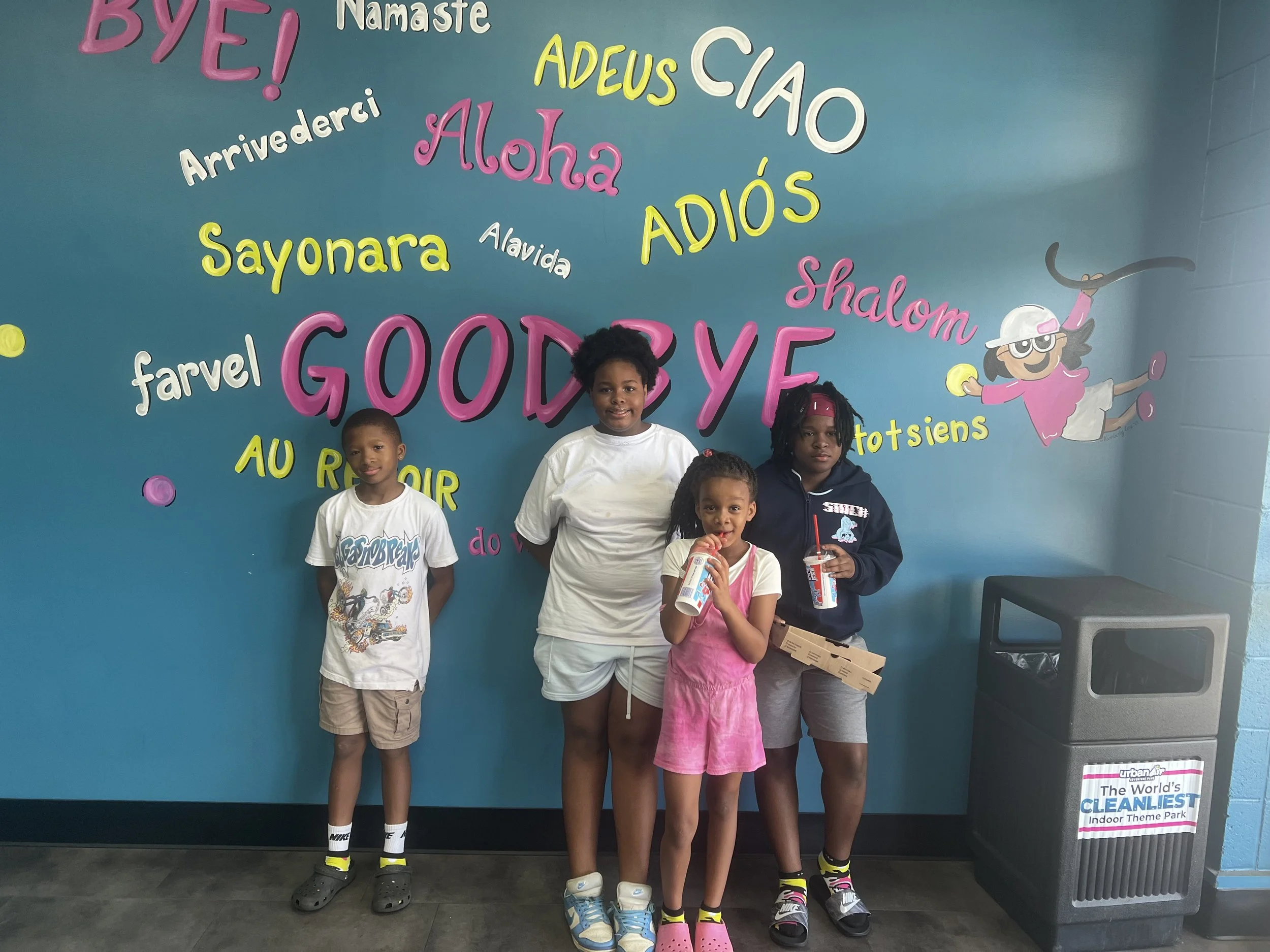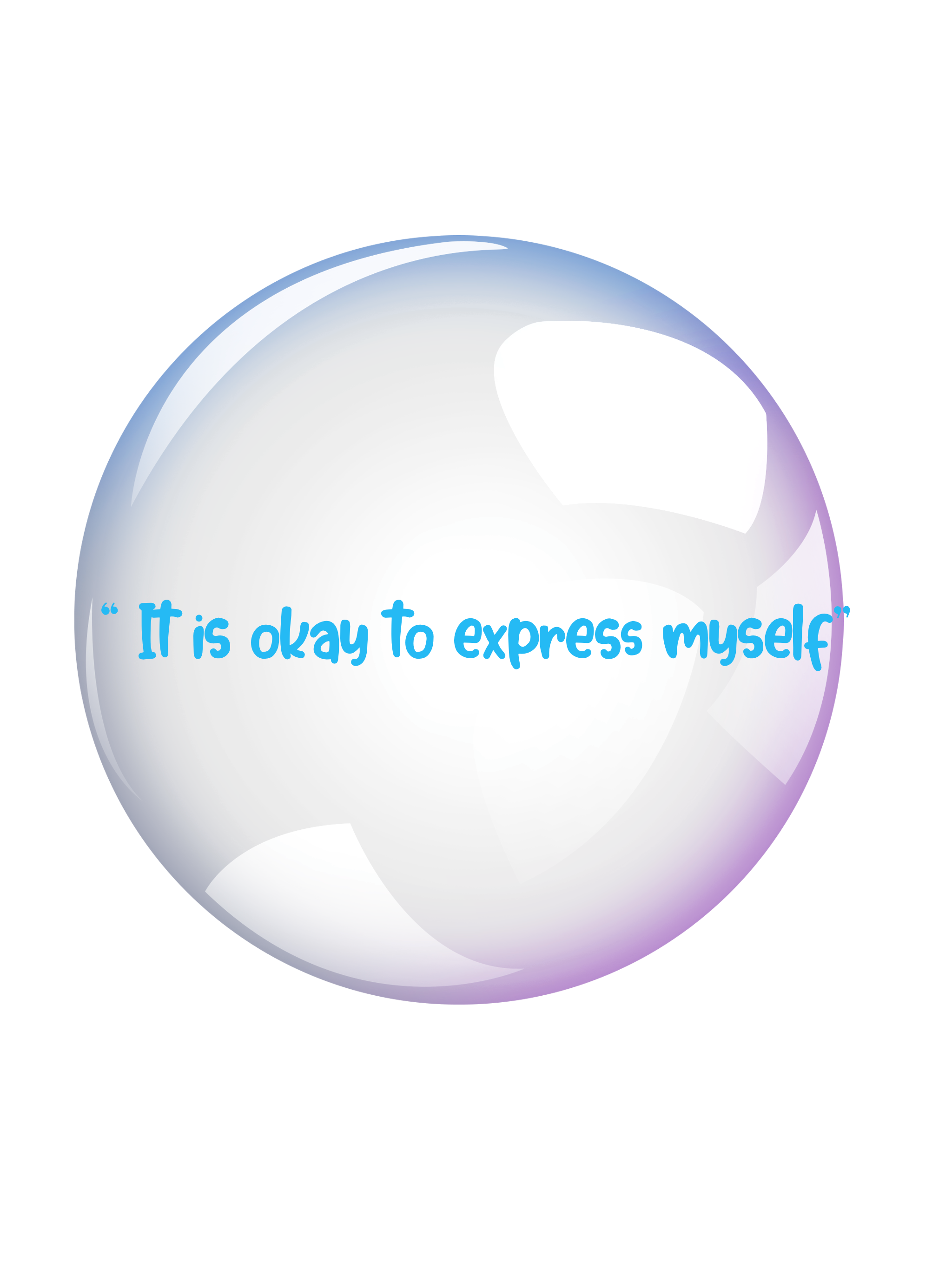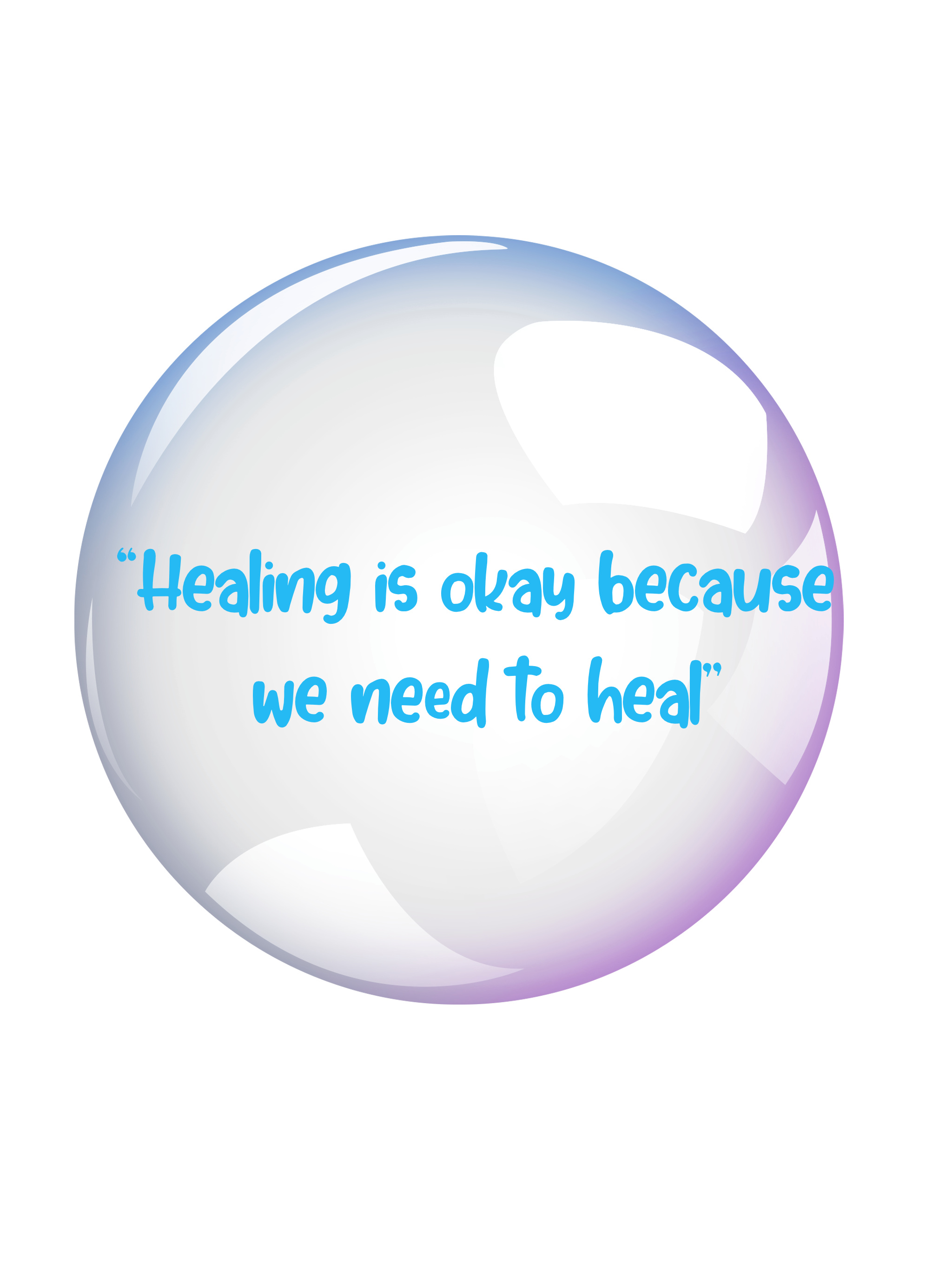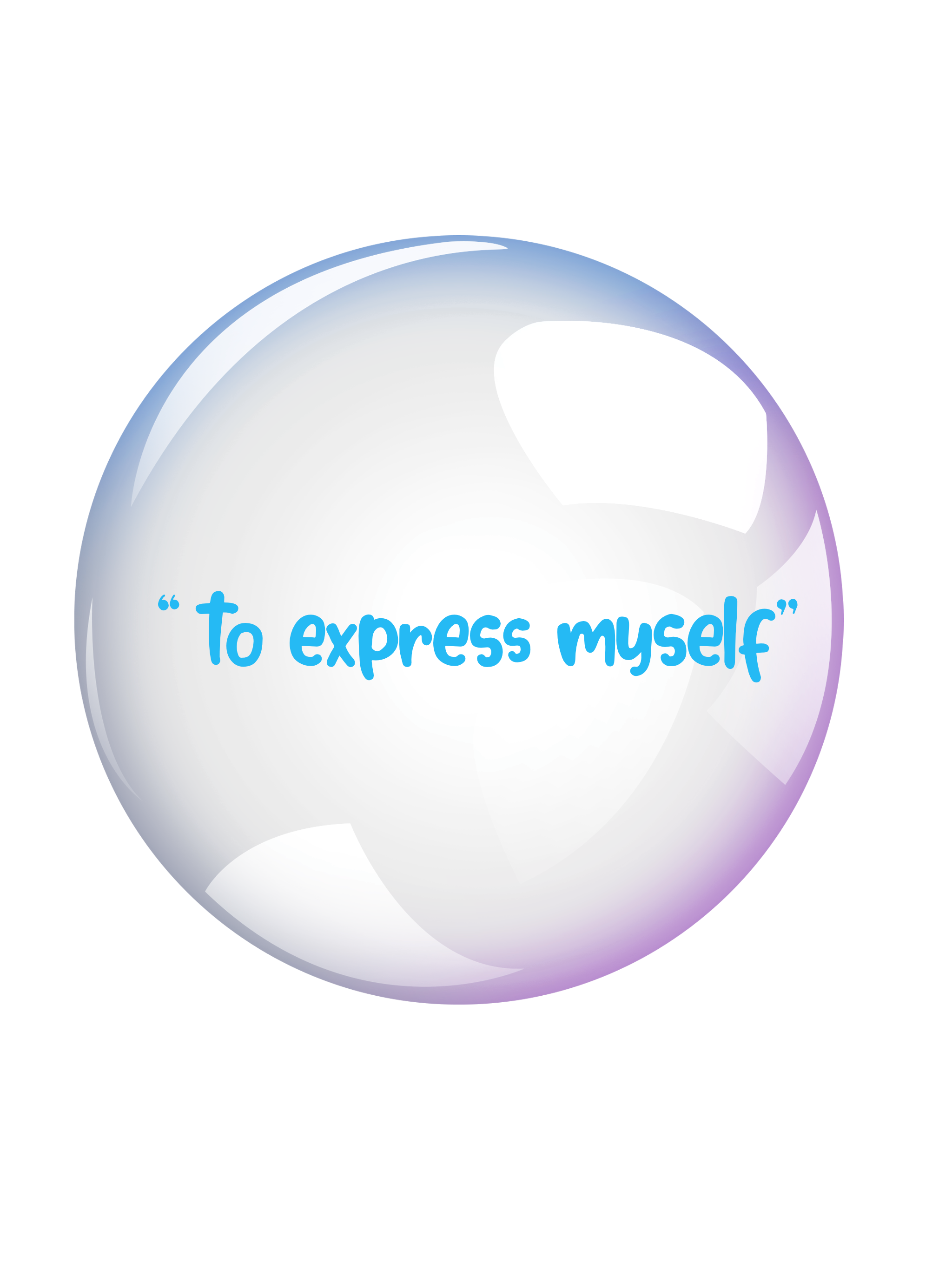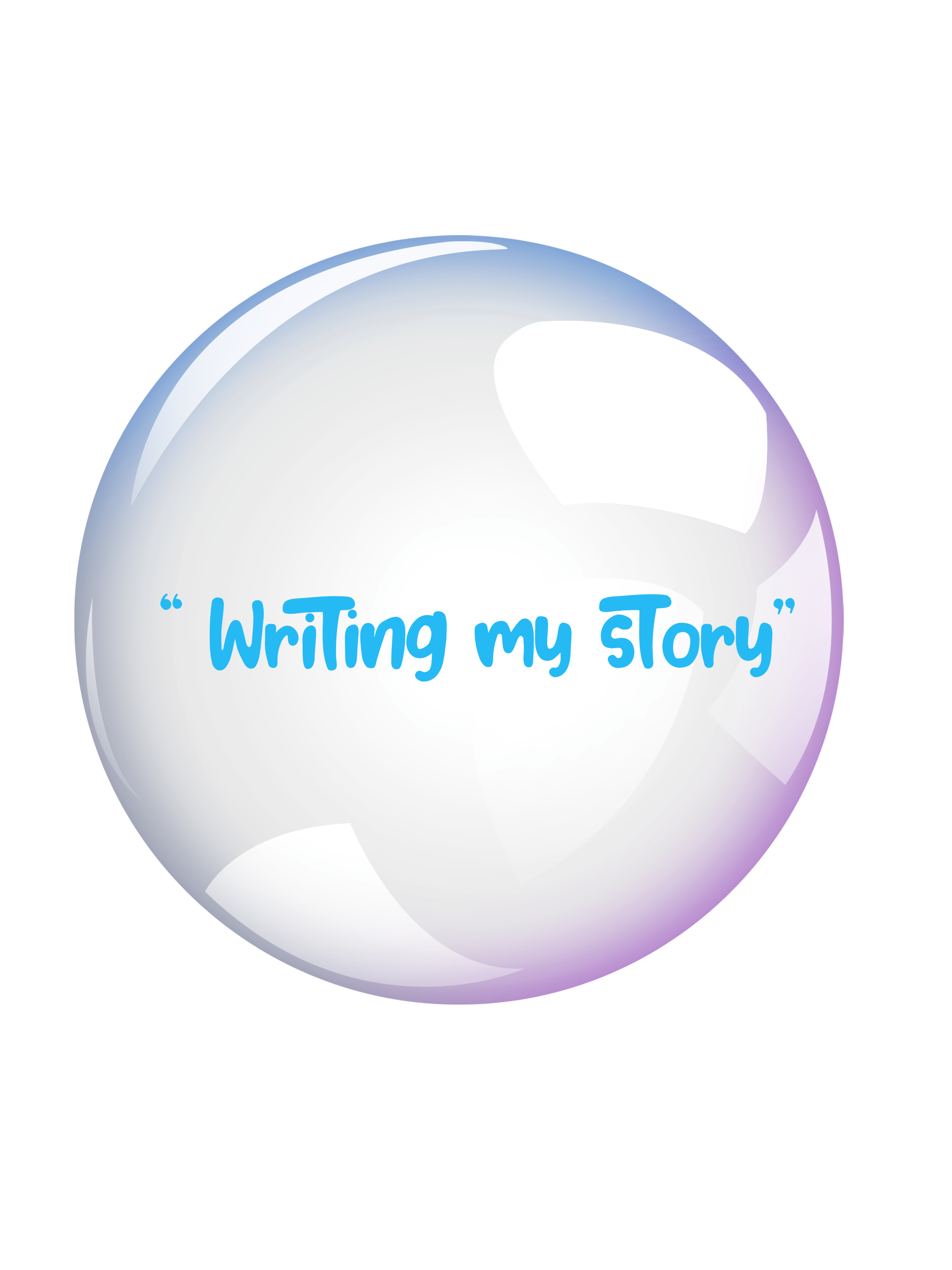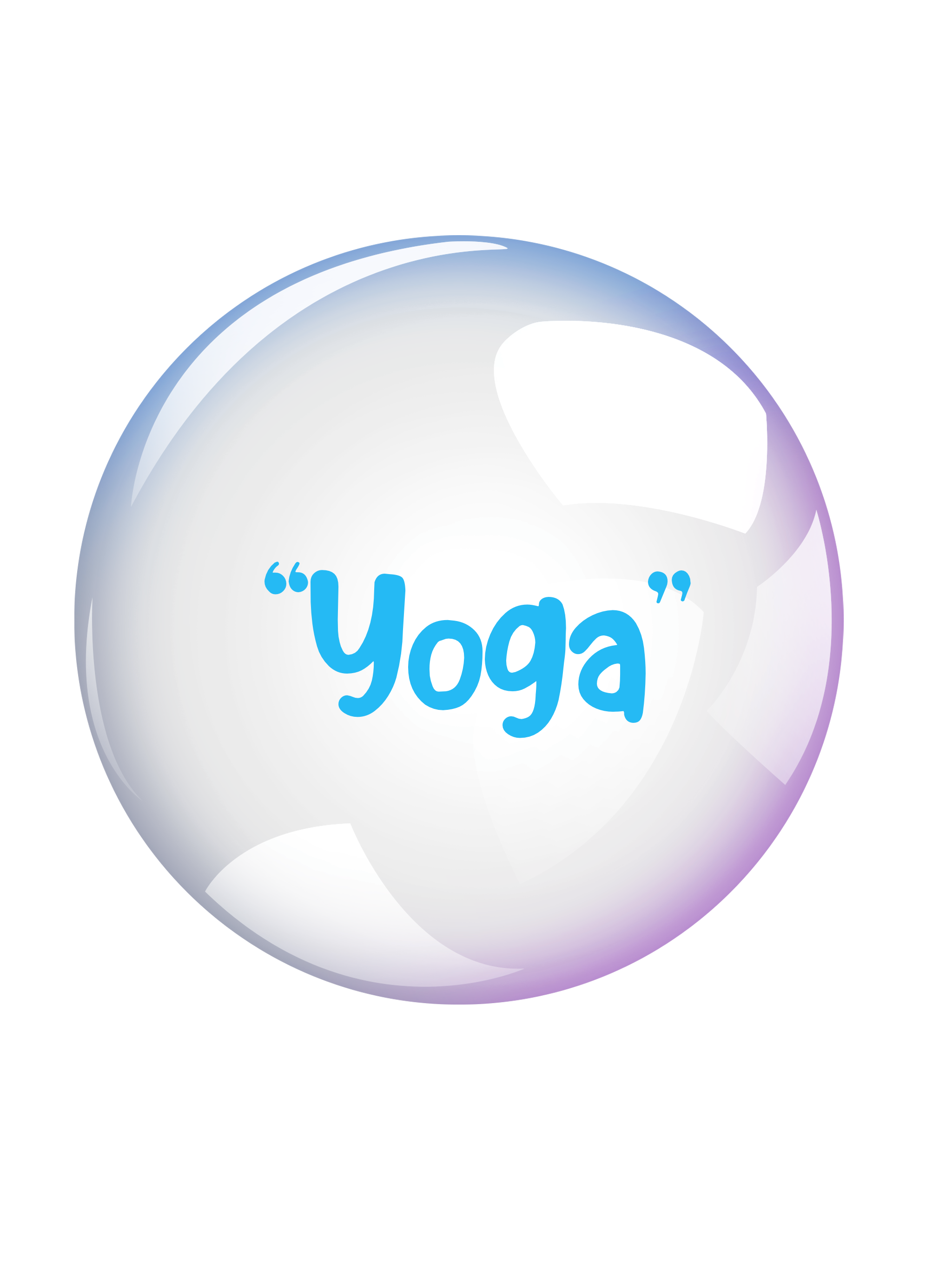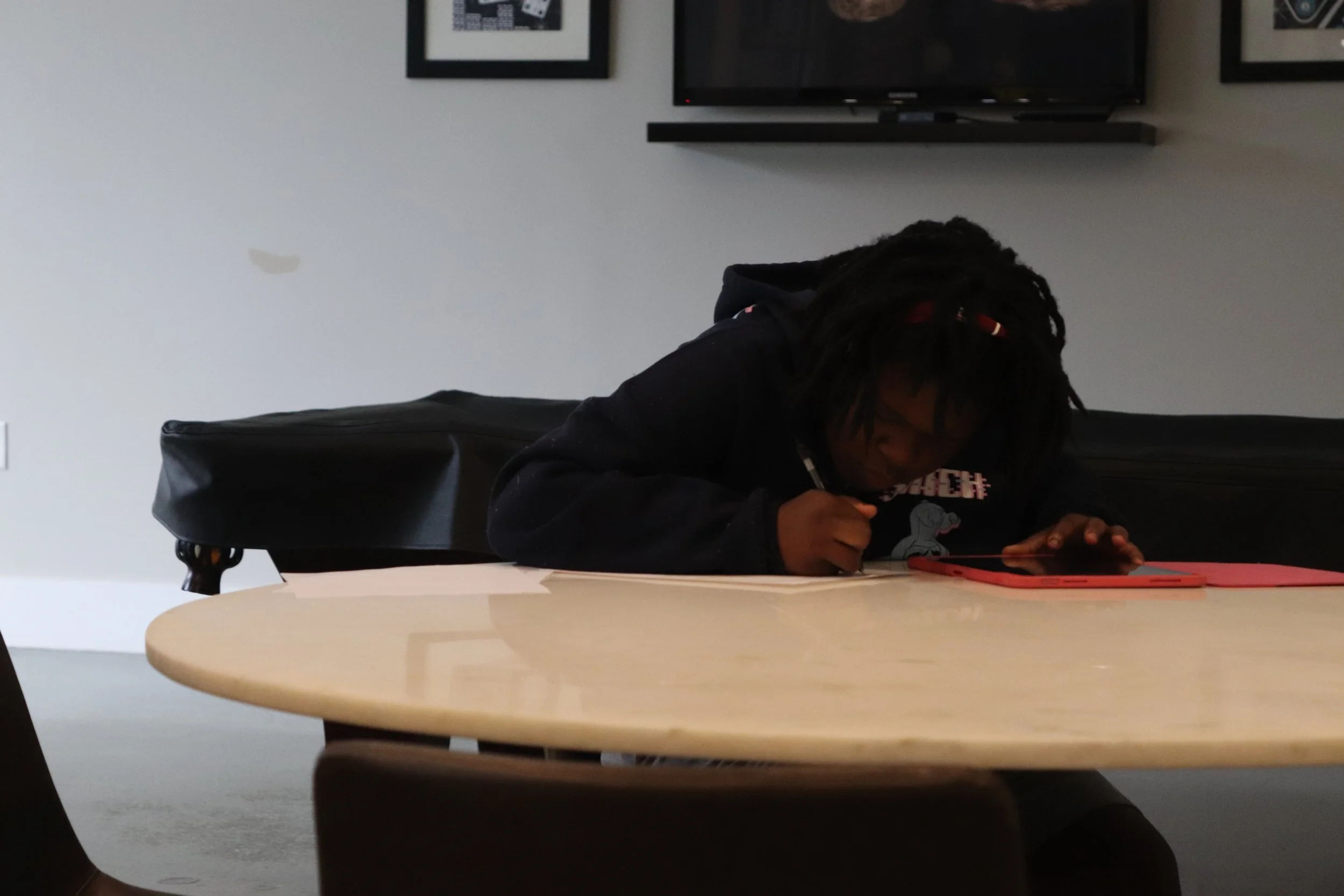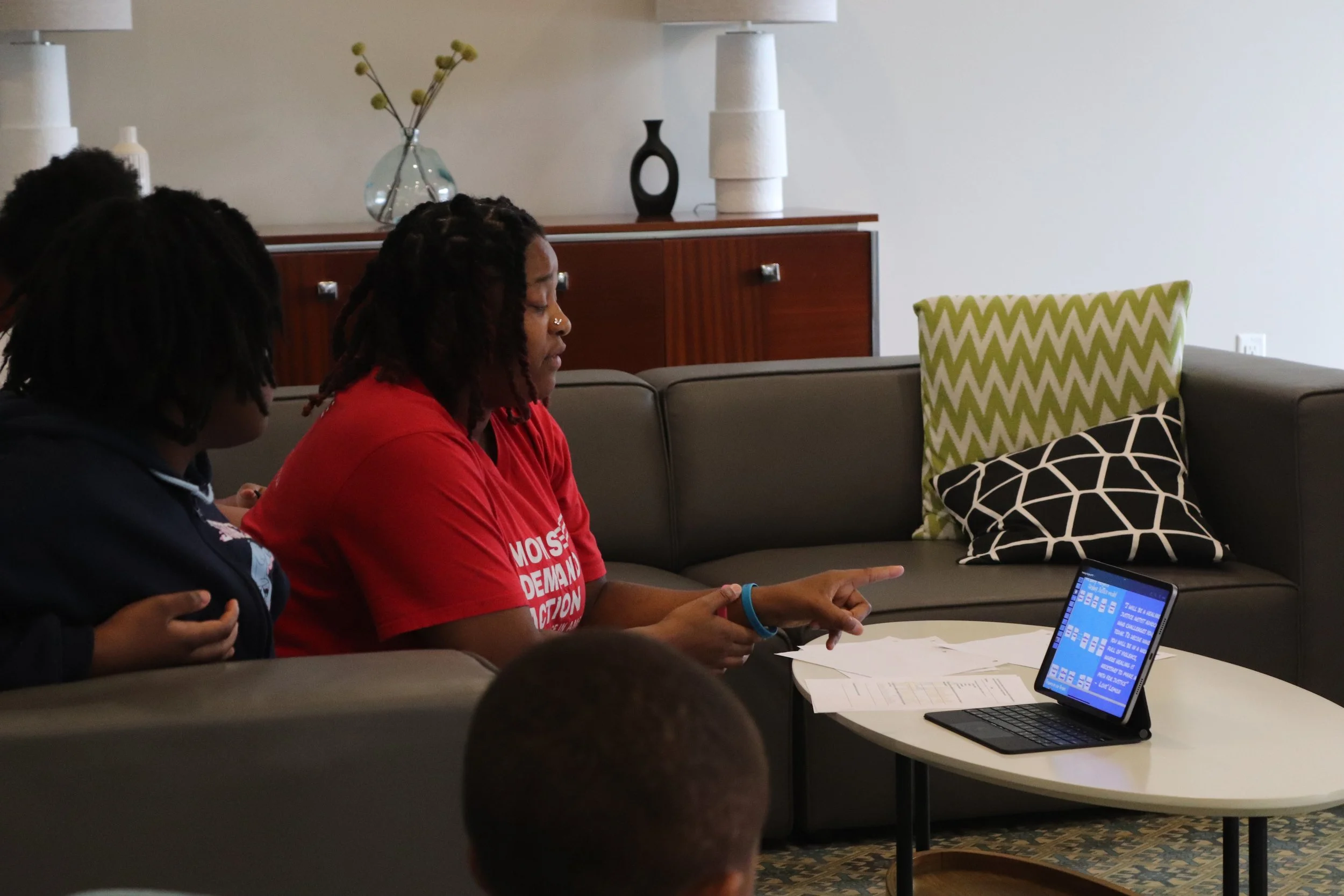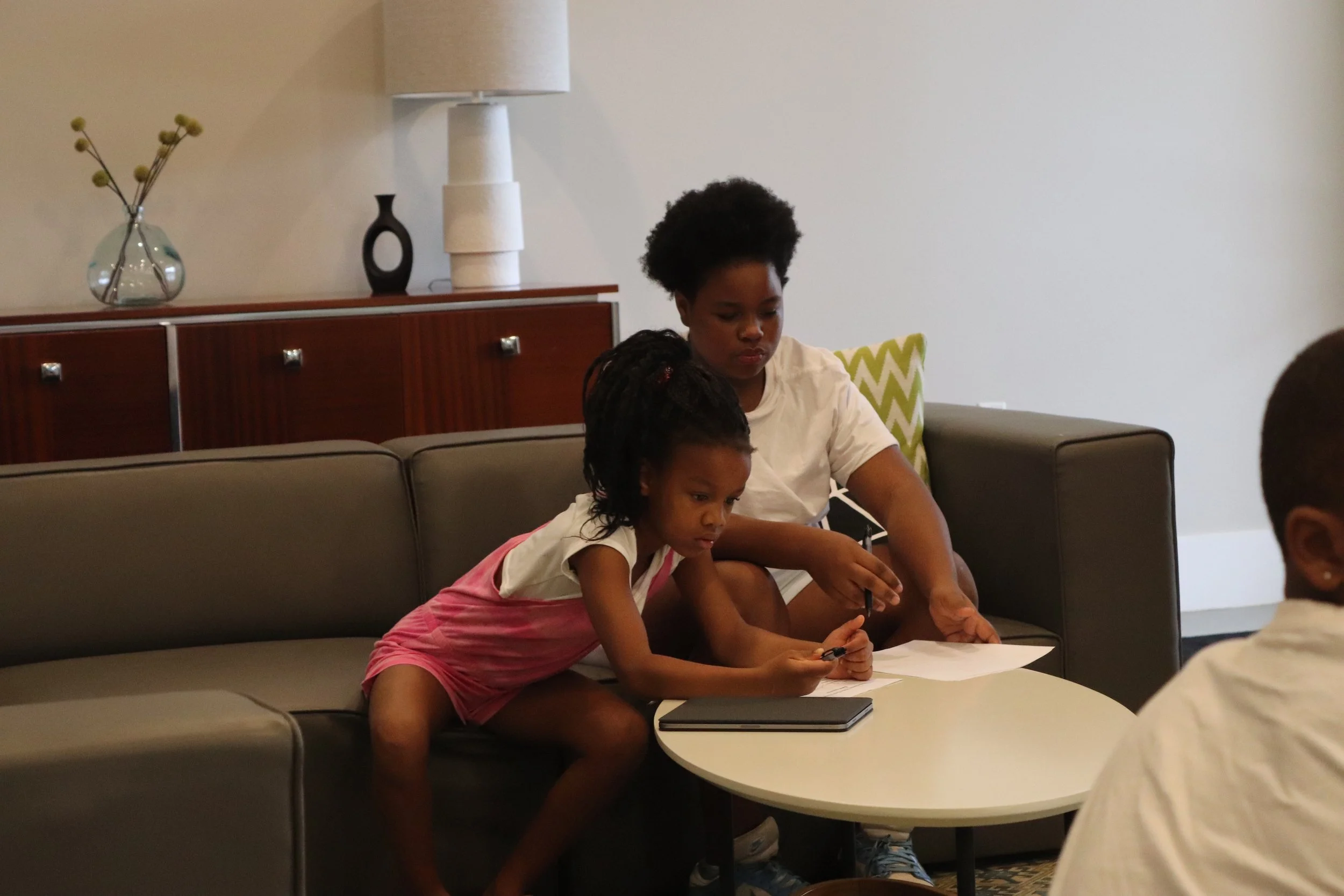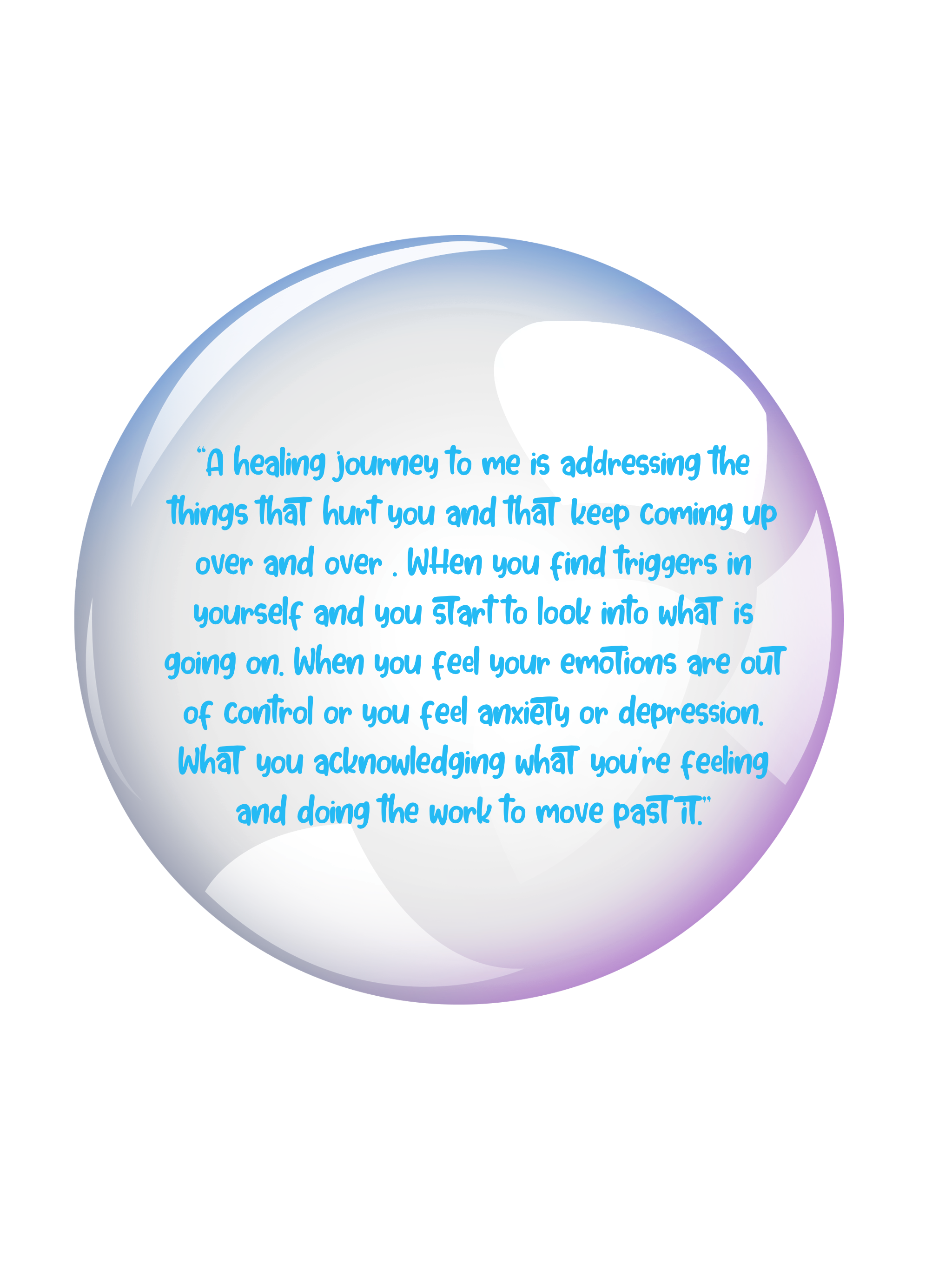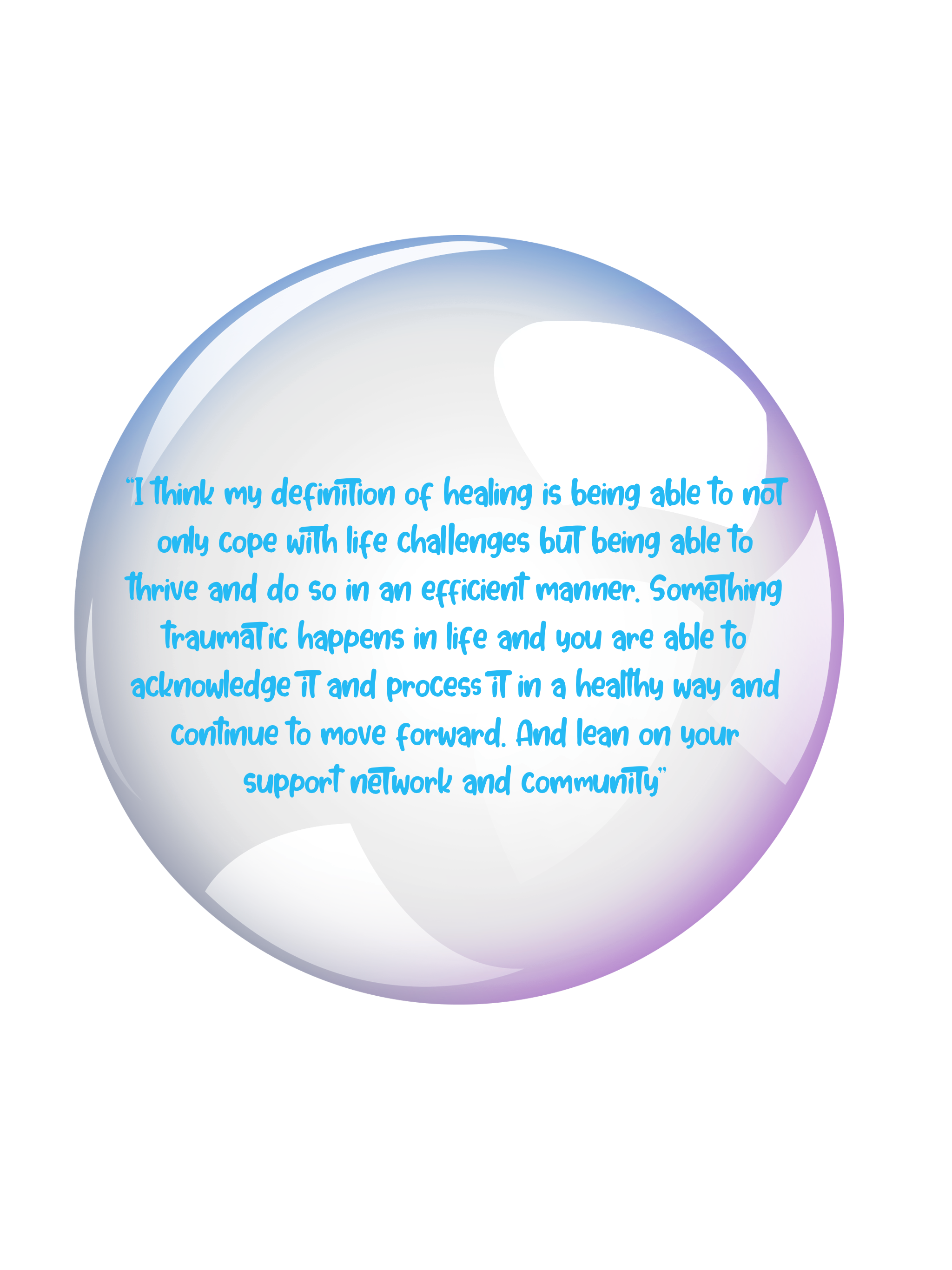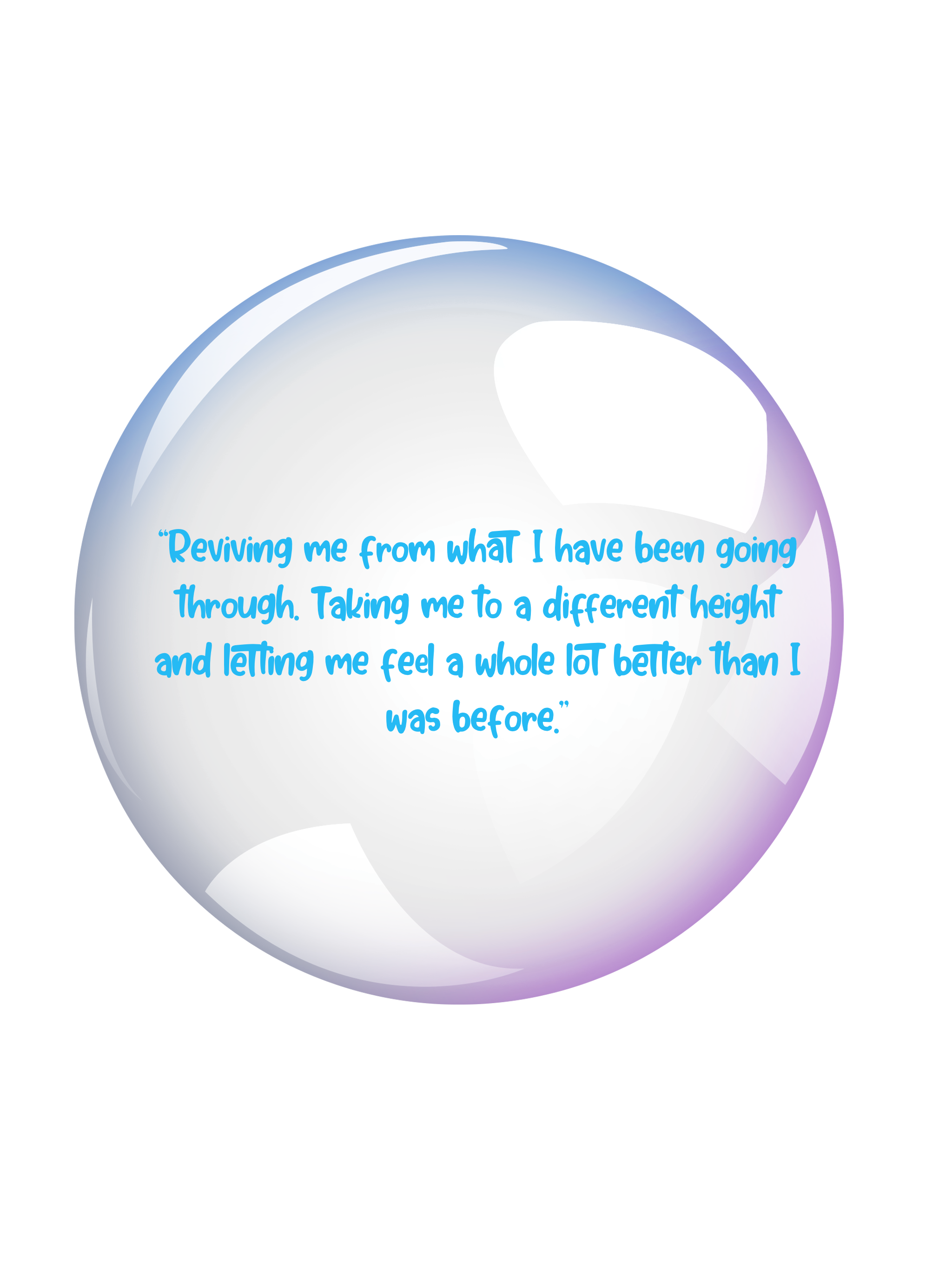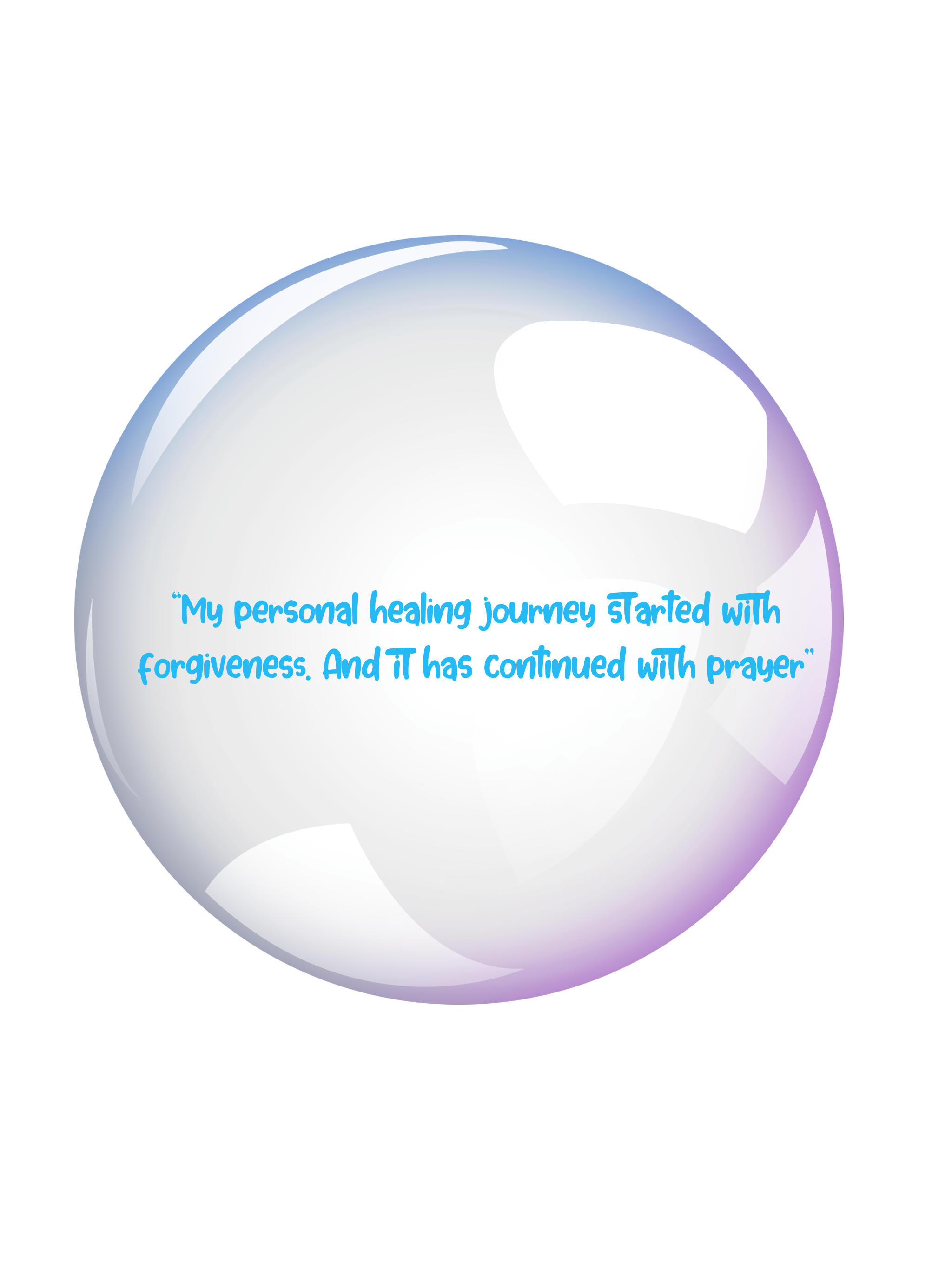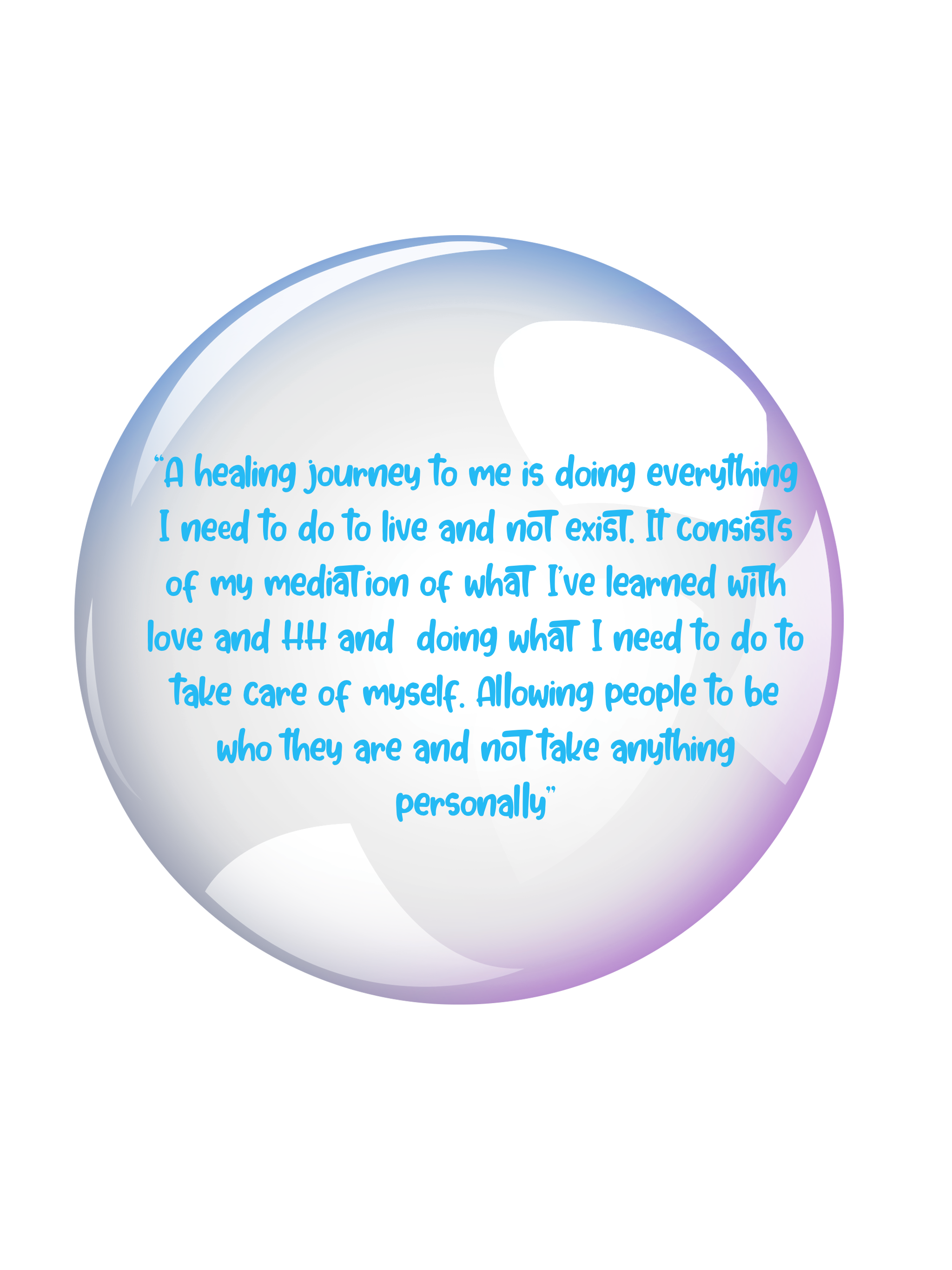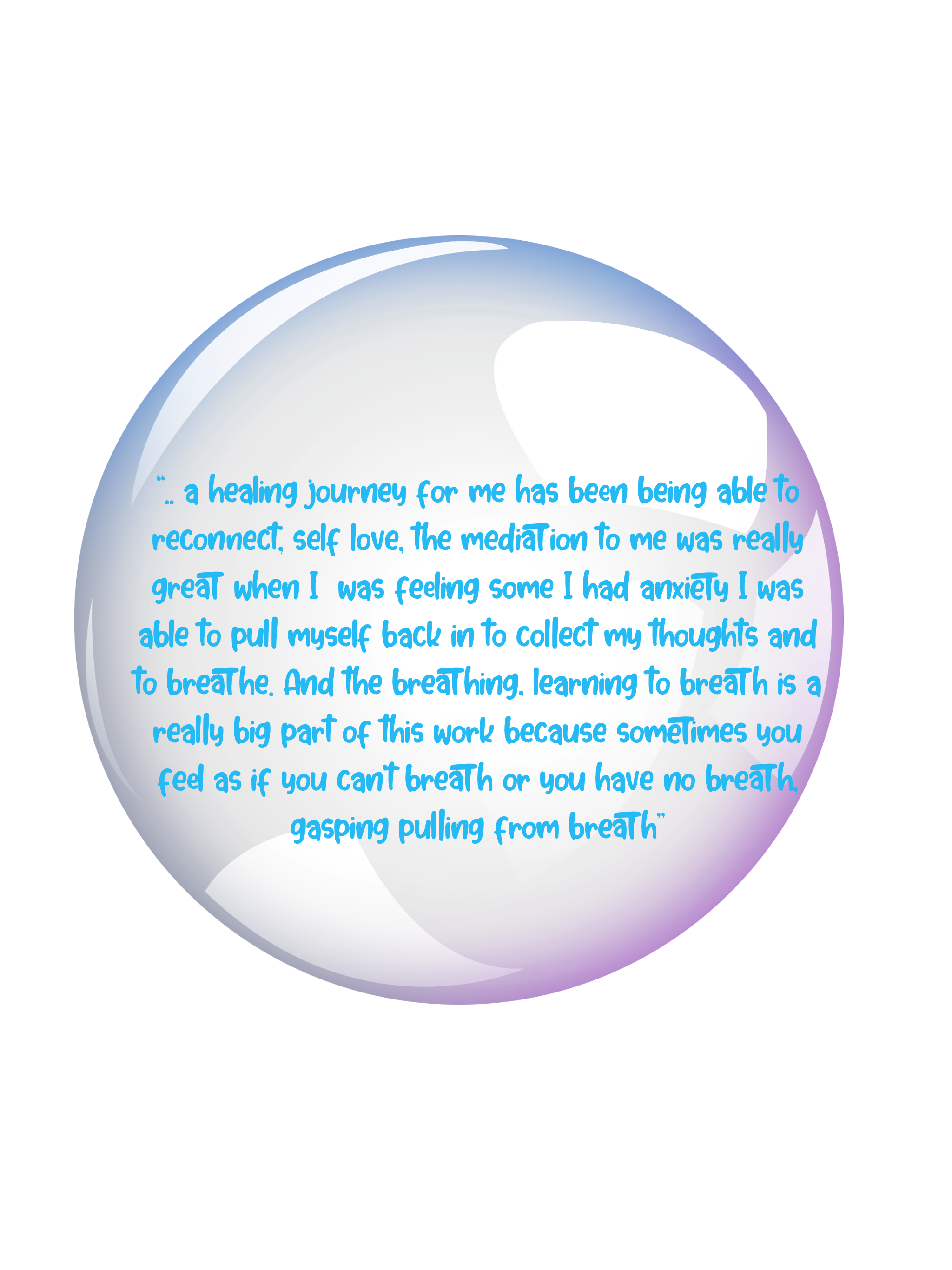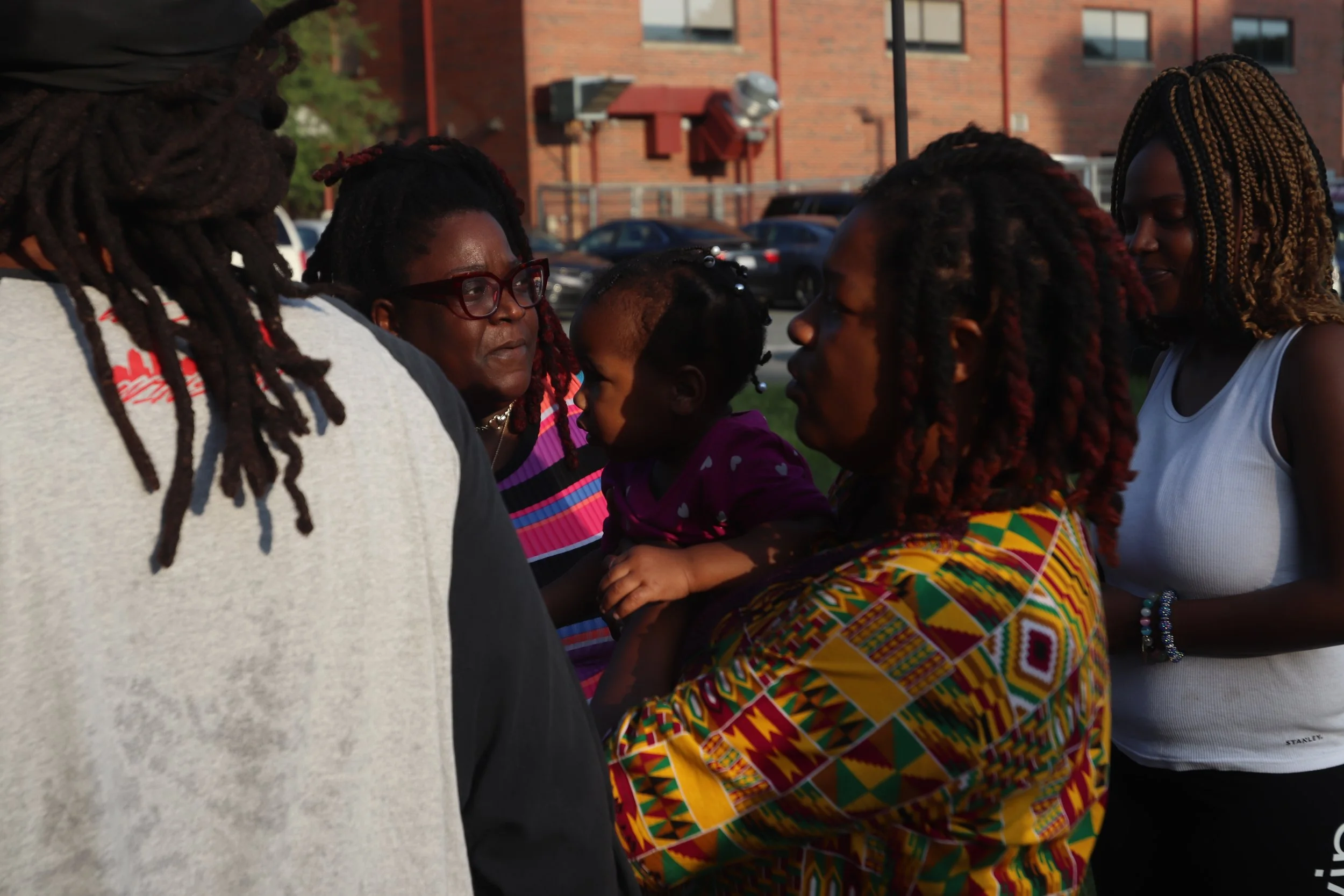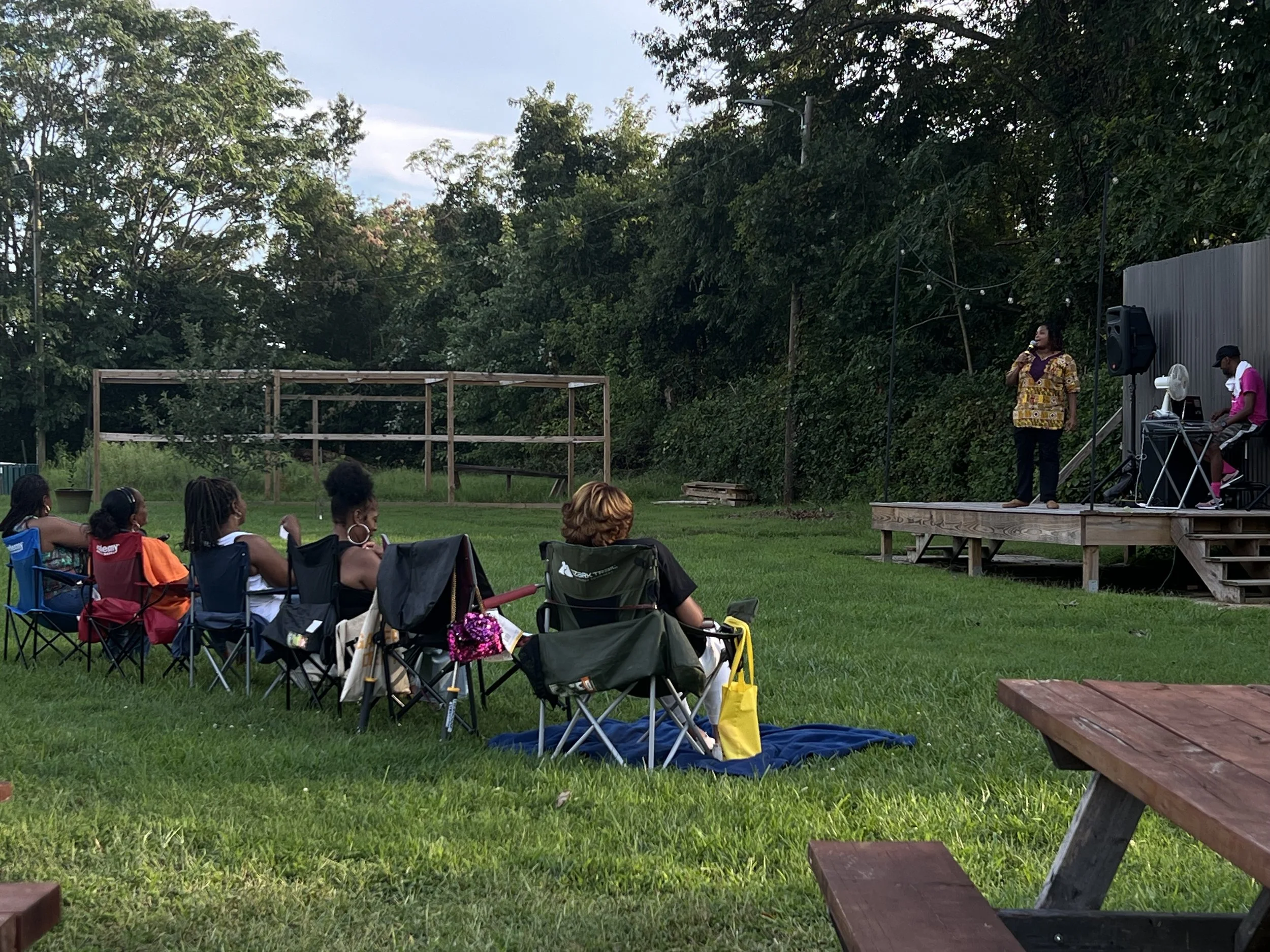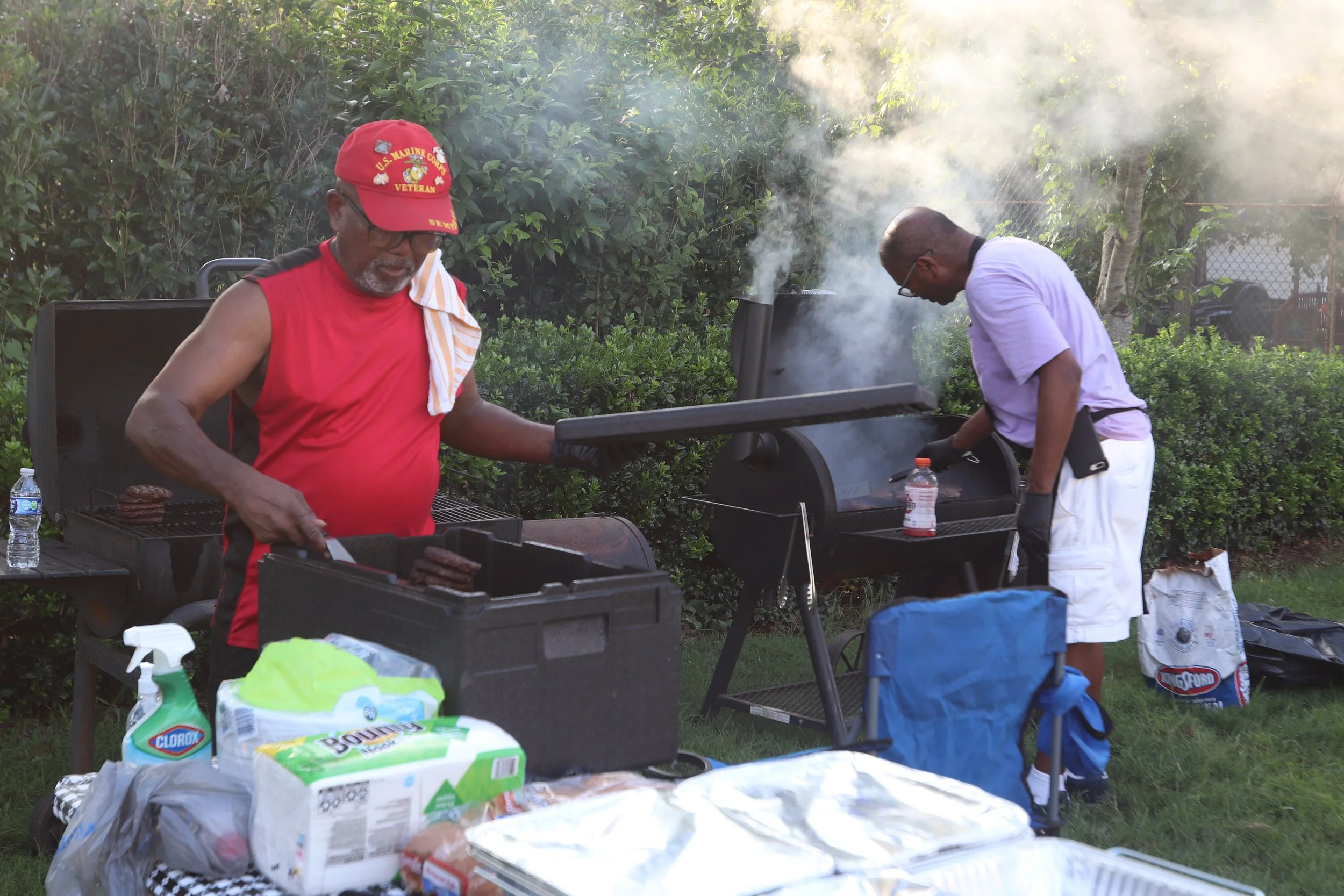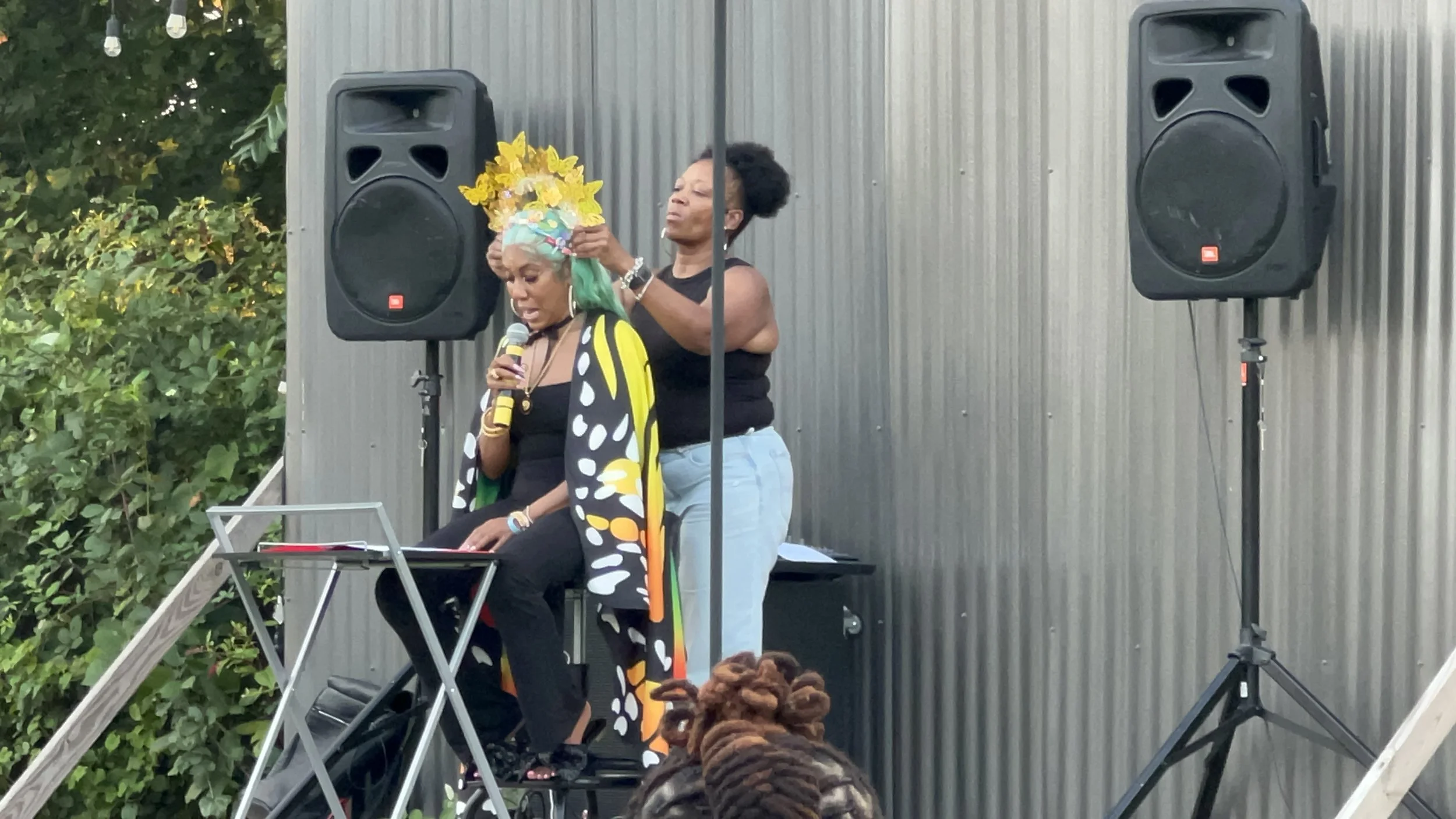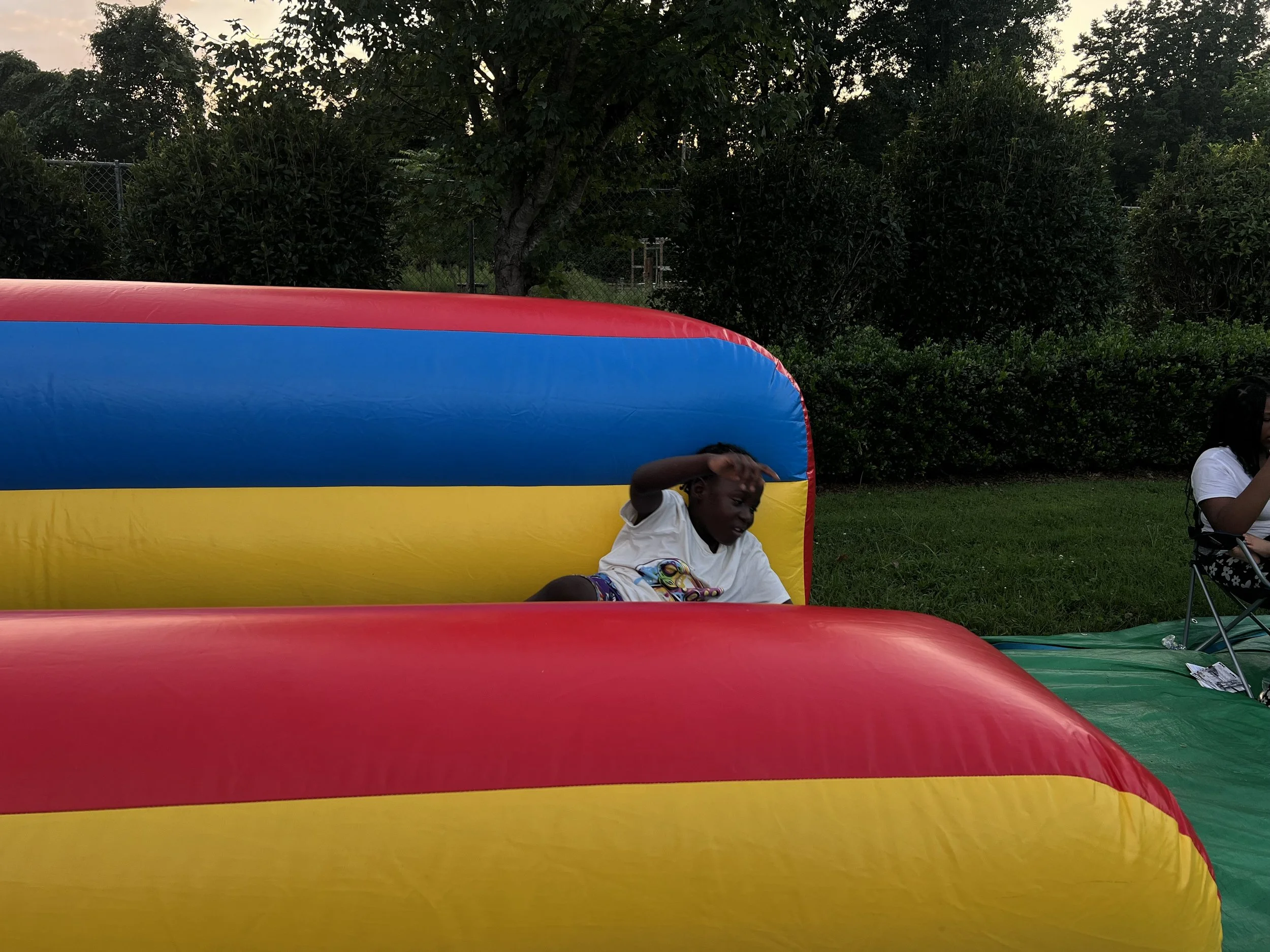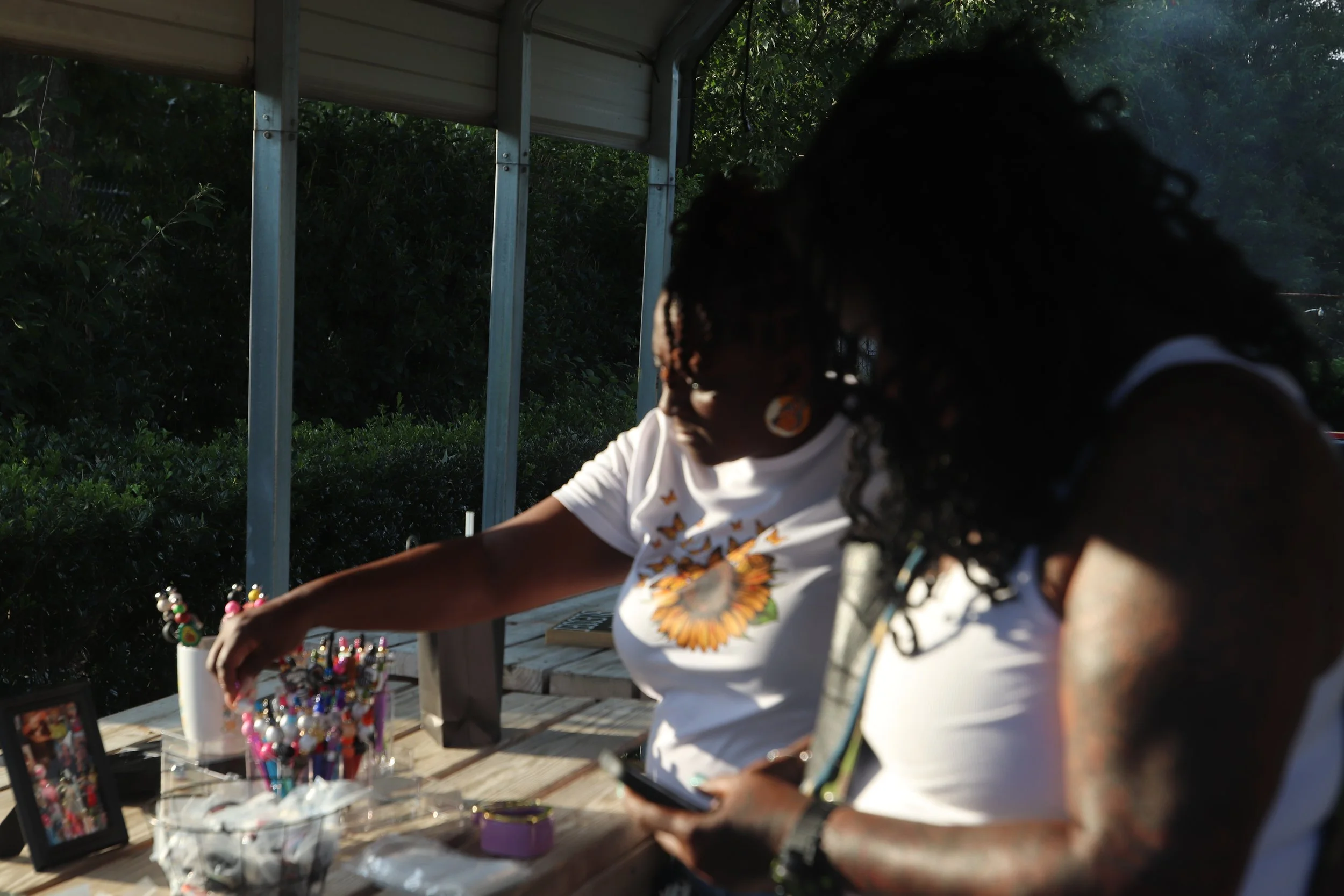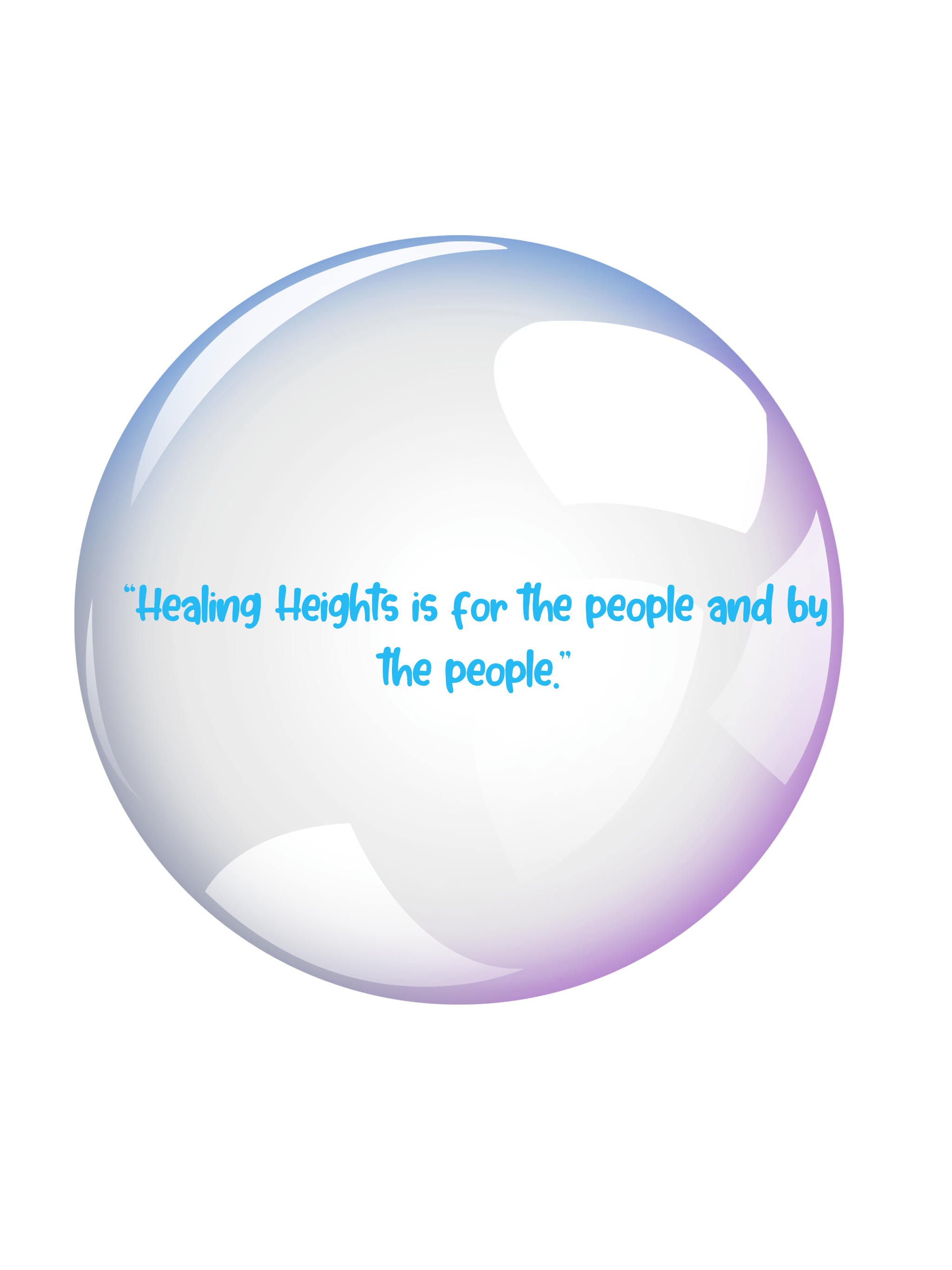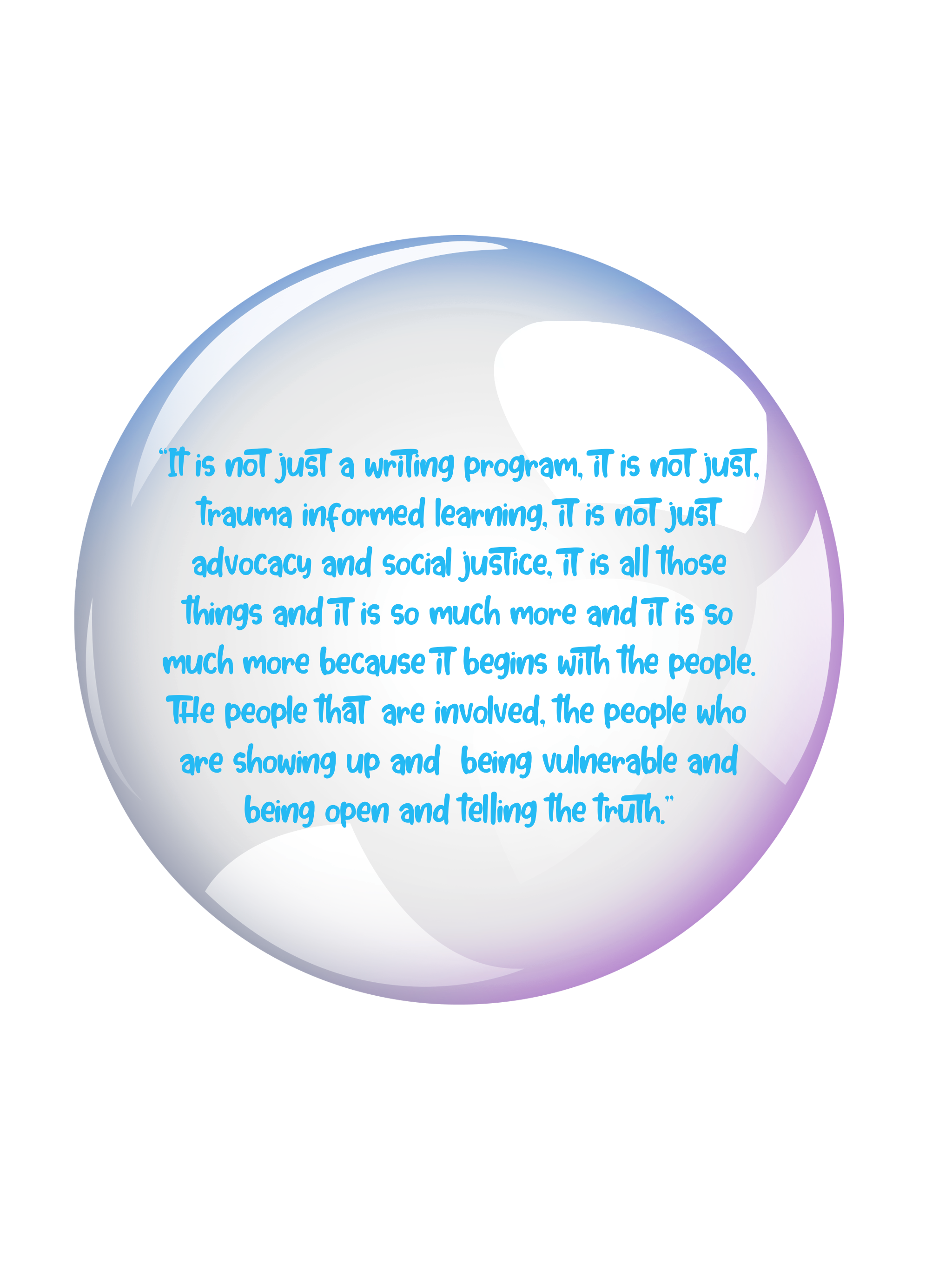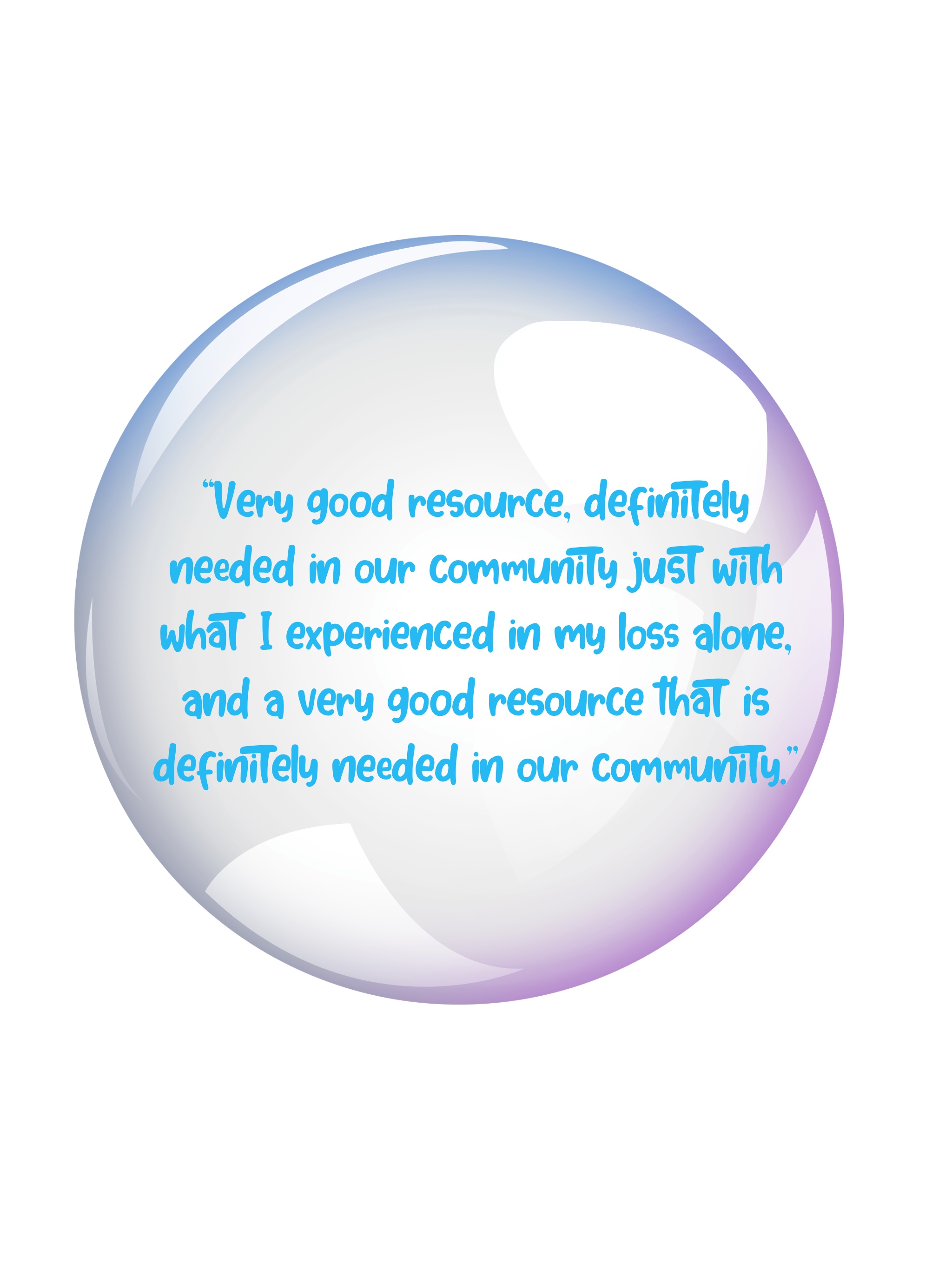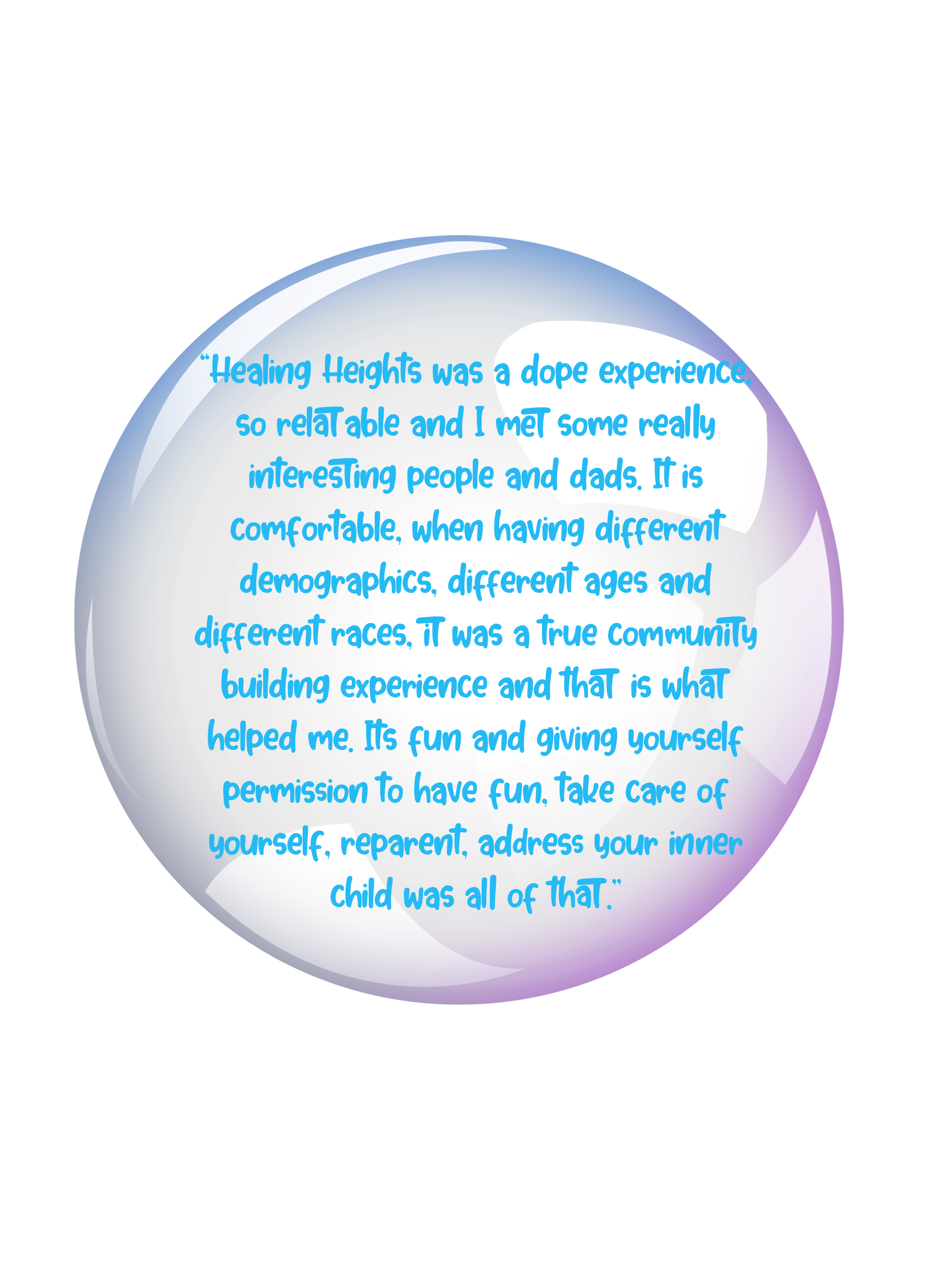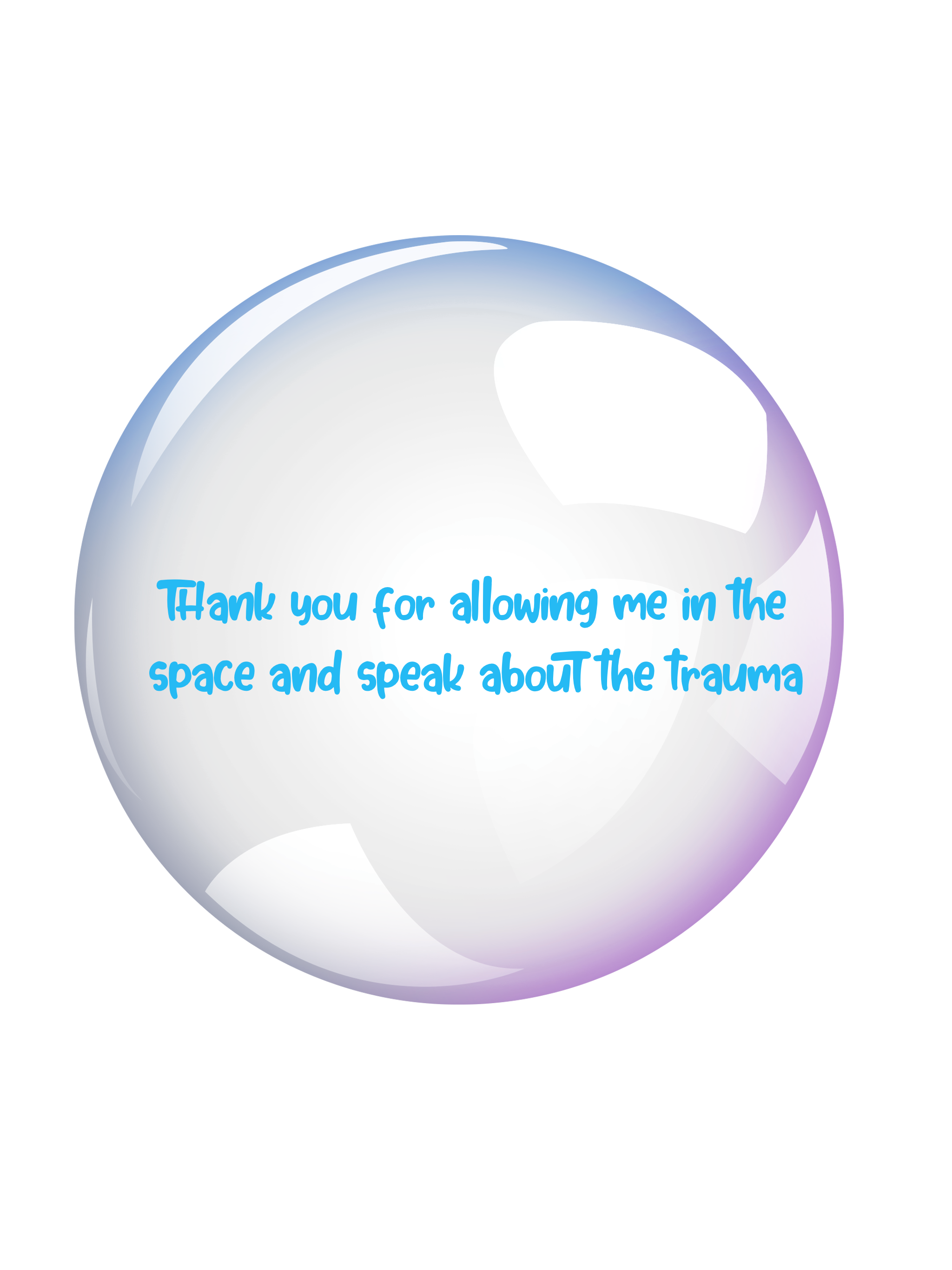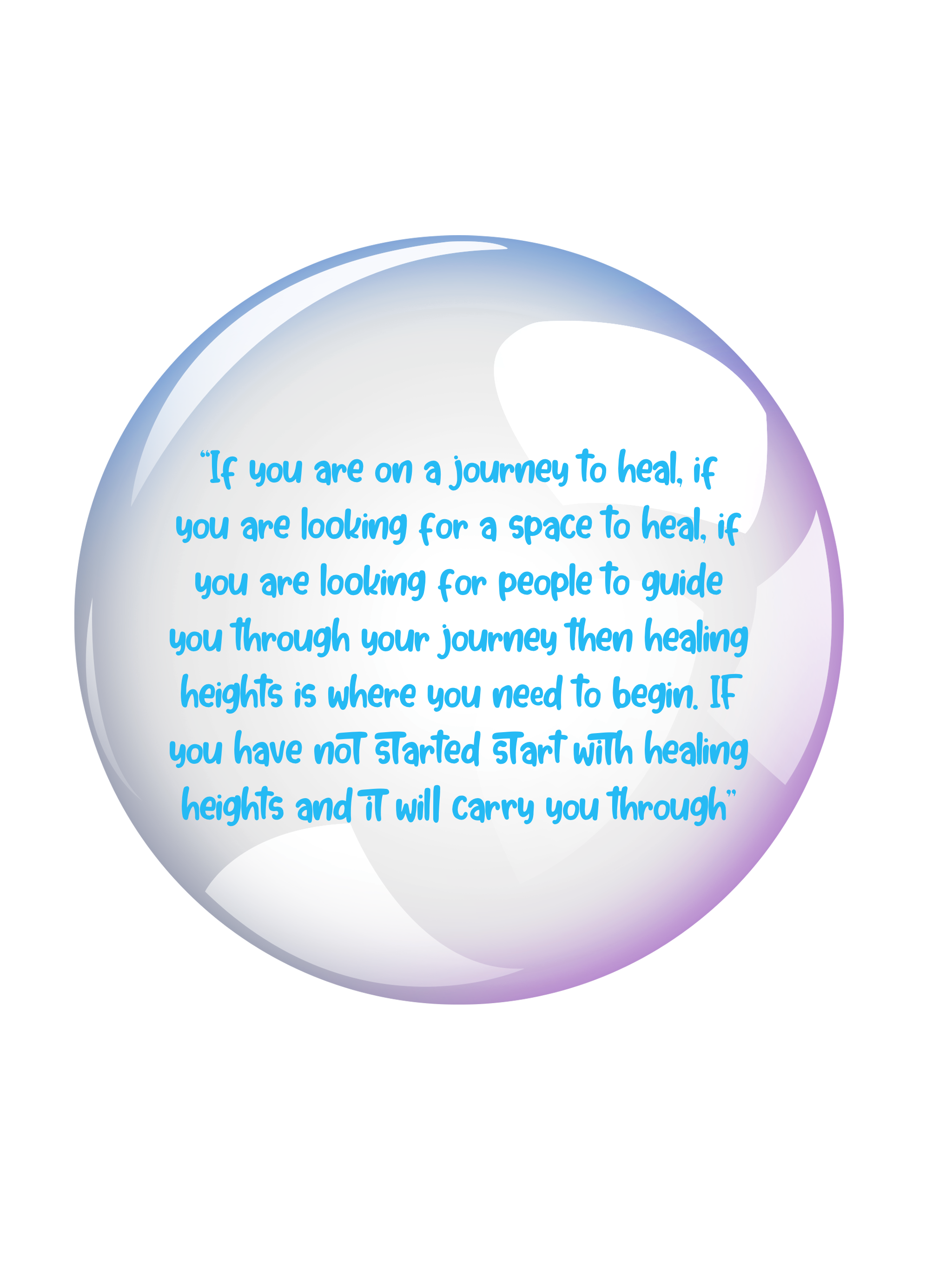The Healing Heights Report of 2024 showcases the collective efforts of practitioners, researchers, content creators, mothers, youth, and community supporters. This report is more than a summary of the impact Healing Heights has made in 2024—it is a collection of stories of triumph. Every detail in the following pages has been intentionally crafted to prioritize community voices.
Before releasing this report, we ensured that community members and participants, especially those involved in partnership work throughout 2024, had the final say in its contents. This reflects our commitment to centering the voices of those that both contribute to the work and are impacted by it.
In this introductory section, we will outline the report’s contents, highlight key partners, and provide insights into the foundation of Healing Heights through the perspective of its leader and founder, Love’ Lemon.
-Dr. Crystal Ellis, Chief Officer of Research for Healing Heights
Coordinator and Lead Writer
Healing Heights Impact Report for 2024
For access to report document Click Here
Report Table of Contents
Who is Healing Heights? A Story From CEO and Founder Love’ Lemon
Broken Women Break Through founded by Tremona Purvis
Summary of Partnership
About the Healing Heights Practitioner Catalogue
Mother Of Angels Program Practitioners
Shannon Stokes “ The Bloom Series”
Heidi Gessner “Pockets of Grace”
Lové Lemon Healing Heights Griot Training
Program Goals and Outcomes
Program Goal #1
Program Goals #2
Program Goal #3
Youth Healing Force
Healing Heights Recess and the Art of Play
What Does the Community Say About Healing Heights
What else do we want you to know about Healing Heights!!
Who is Healing Heights?
A Story From CEO and Founder Love’ Lemon
So many things were happening at once. I was ready to leave Winston-Salem, North Carolina, and move to Los Angeles, California, but I needed money to make that happen. At the same time, I was finishing my champion training with Crossnore Trauma Resiliency Community (CTRC) and came to the realization that I was being racially traumatized in my workplace. I was also completing my training with Dr. Tiffany Green of The Uprooted Academy, where I fell in love with the art of healing.
Amid all of this, I started Healing Heights, initially as a trauma-informed active healing training. I developed my own curriculum and healing manual, known as the Healing Heights Griot Training. After completing my first four trainings, incredible things began to unfold in my life: I facilitated a fifth training in the neighborhood I grew up in, Happy Hill Gardens; I became a mapmaker for the Arts For Everybody Winston-Salem Initiative through Arts Council; I taught a session at Artist Thrive 2023; I helped curate The Week of Healing with the Our Opportunity to Love and Heal Coalition; and I left my position as Program and Outreach Coordinator. I could no longer recruit Black kids into a program that I knew would racially traumatize them, and I transitioned into an Executive Director role.
Becoming an Executive Director for the first time in my life, I learned so much. Chiefly, I realized the magnitude of the financial challenges I was walking into. Just two months into the role, I was faced with cleaning up financial mistakes made before my tenure. Within eight weeks, I was informed that I would need to fire a staff member who had been part of my hiring process, and my own salary would be cut. At that moment, I knew I couldn’t and wouldn’t work from a scarcity mindset. With support from friends, family, and the community, I shifted toward an abundant mindset.
However, I quickly realized that while I could embrace abundance for myself, I couldn’t extend that mindset to a governing council that failed to embody its mission of healing justice. I had to advocate for keeping my business, Healing Heights, while also navigating the demands of my Executive Director role. Around this time, I reconnected with Tremona Purvis, and it became clearer than ever: I would continue doing healing justice work—not just for myself but with and for the community. I wanted this work to teach others that investing in our healing is essential. This is why I do this work.
At first, I thought it was just because I needed money to move to Los Angeles. I thought I was doing this work because I was tired of working under racist leadership—and I am tired of that. I thought I was doing this work because I was fed up with white-led nonprofits failing to fulfill their missions while becoming the very systems they claim to challenge—and yes, I am tired of that too. I thought I was doing this work because I’m compassionate, because I’ve poured my heart into it genuinely—and I have. I thought I was doing this work because I figured out how to work with the resources I have, without compromising my integrity for more resources or clout—and I have learned that. I thought I was doing this work because I sought therapy after being diagnosed with moderate to severe anxiety and depression—and that is part of it too.
All these things are part of my journey, my “why.” But they’re not the entirety of it.
I do this work because we, as Black people, marginalized communities, and oppressed souls, are more than worthy of healing and the transformative beauty of its experience. Whether I’m working with parents of angels, young people, students, Black entrepreneurs, or those who’ve experienced housing displacement, I do this work for and with the community.
I do this work for and with us.
That’s it. That’s all.
When asked to write about my experience with the Healing Heights x Mothers of Angels program, I didn’t know where to start… As Healing Heights resident Chief Content Officer, I’ve always felt it was my duty to capture the magic and the healing that happens and try to share it in some creative way. With this program I almost failed that mission, the magic that happened in the room, the truths that were being told, the vulnerability, the way I saw a village being built left me breathless at times. It was such an honor to be allowed to be in community with the powerful individuals who entered in the room and shared, and communed. As a son of an angel, I am honored with the task to put visuals to this report, and help share a little of the magic I experienced.
-From your friendly neighborhood Chief Content Officer
Willie Lavon Holmes II (CCO Healing Heights)
Broken Women
BreakThrough
founded by Tremona Purvis
Experiencing the loss of a child is an incredibly challenging journey, one that can leave a person feeling completely shattered. In these moments of profound grief, having a supportive network can serve as a beacon of hope in the midst of darkness. Organizations like Mothers of Angels understand the immense weight of this sorrow and provide a lifeline through emotional support, valuable resources, and a nurturing sense of belonging.
Mothers of Angels is a sanctuary for mothers who have endured the heartbreaking loss of a child. In the midst of profound sorrow, this organization offers unwavering comfort and empathy. Within this compassionate community, you’ll find a safe space where you can express your thoughts, emotions, and uncertainties without fear of judgment. Here, you are surrounded by others who intimately understand the depth of your grief, offering shared solace and a collective commitment to healing together.
To all mothers experiencing this pain: you are not alone. There are others who truly understand the depths of your sorrow and are ready to walk alongside you. Mothers of Angels exists to provide the comfort, understanding, and companionship you need during this immensely difficult time. You deserve a community where you can openly share your emotions, find support from those who comprehend your journey, and take solace in the knowledge that you are not alone.
Mothers, you deserve compassion and connection as you navigate the complexities of loss.
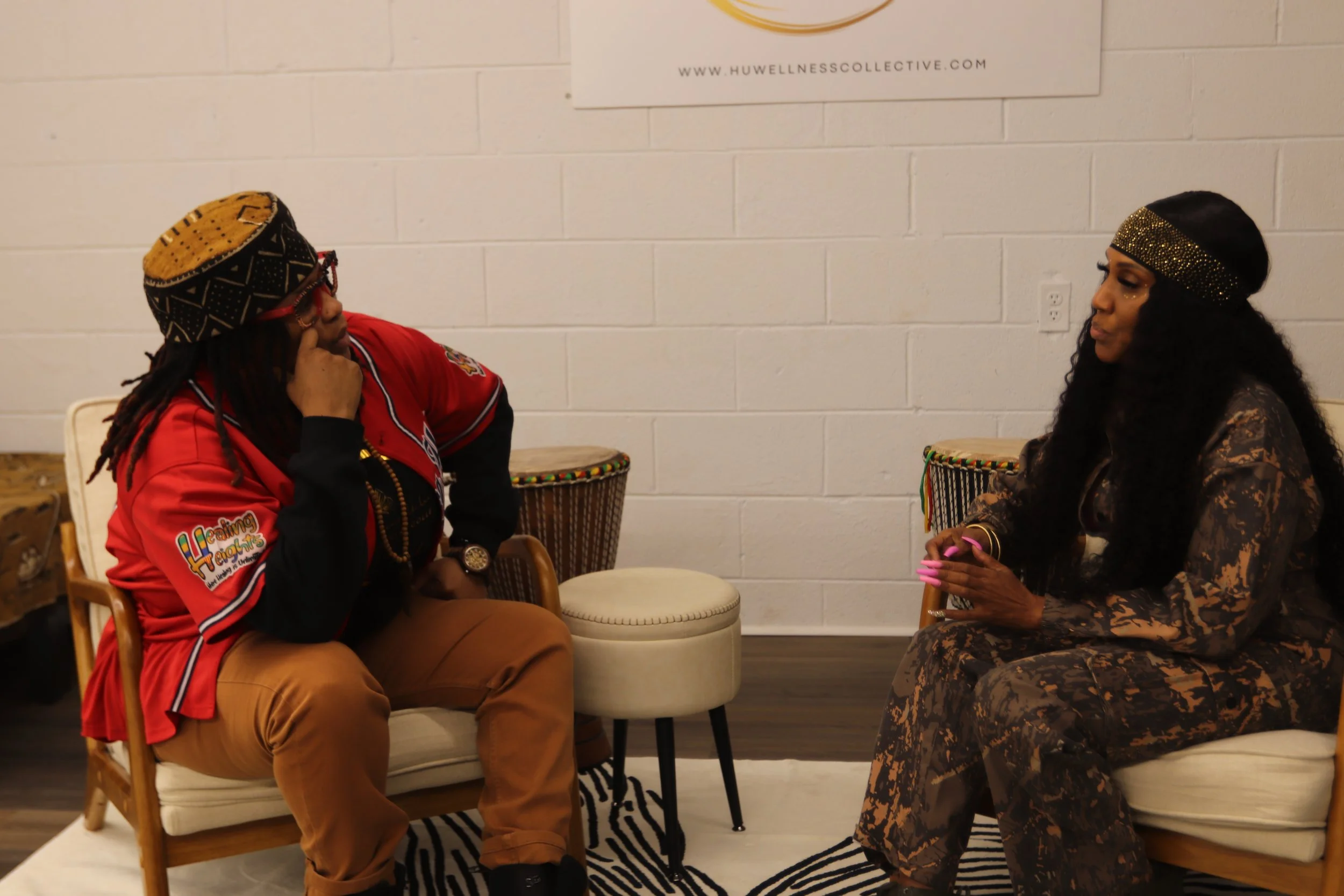
Summary of Partnership
Love’ Lemon, Founder and CEO of Healing Heights
“From the moment I first met Tremona Purvis, I knew she was an incredible light. She courageously shared her story about her daughter, and I was honored to be in the room—to be part of a community space where the Embedded Mentorship Program was hosting panels. These panels provided a platform for us to hear directly from the community about the violence affecting our city and its far-reaching impacts.
When Tremona and I reconnected, she approached healing with her whole heart—not just for herself, but for the community she had built. As a mother of an angel, Tremona poured her energy into creating a space of healing for other Mothers of Angels. She established her own nonprofit to serve this community and partnered with me to expand the reach of our collective work. I can’t fully explain why she came to me, but for it I am grateful. I feel deeply honored to be part of this incredible journey alongside her.
Together, Tremona and I combined our ideas and applied for a grant through Arts Council. When we received the funding, we dove right into the work, launching what we now call the Healing Heights: Mothers of Angels Program. Interestingly, this program aligned perfectly with a pillar of her nonprofit, Mothers of Angels, even before I knew the name of her organization. It felt like it was all meant to be.
In our first month, we partnered with Shannon Stokes of Zen by Shannon, who led the group through mindfulness meditation practices. In the second month, Heidi Gessner of Indigo Flow guided the group through grief counseling sessions and journaling exercises. Finally, in the last month, I had the privilege of hosting the group with our Healing Heights Griot Training, completing a transformative journey of shared healing and growth.”
Tremona Purvis, Founder of Broken Women Break Through
“When I was in the room, I watched you, listened to you, and thought, “Gosh, she’s so smart and so informative.” You knew so much about the community, and you were asking all these questions. I think we broke out into groups, and when it was your group’s turn to present, you just rattled everything off so effortlessly. I remember sitting there thinking, “Well, I know I’m not about to get up and speak.” People were engaging with you, asking questions, and you were giving your opinion, being outspoken, and confident. I remember wondering, “Who is this person?”
After the meeting, I asked Nakida McDaniel, “Who is that?” She said, “That’s Love.” And I replied, “I like her.” I couldn’t quite put my finger on it, but I knew there was something different about you. I saw you again at another event, and we started being in the same spaces more often. Eventually, we had the chance to talk one-on-one about Mothers of Angels and what it means on a personal level."
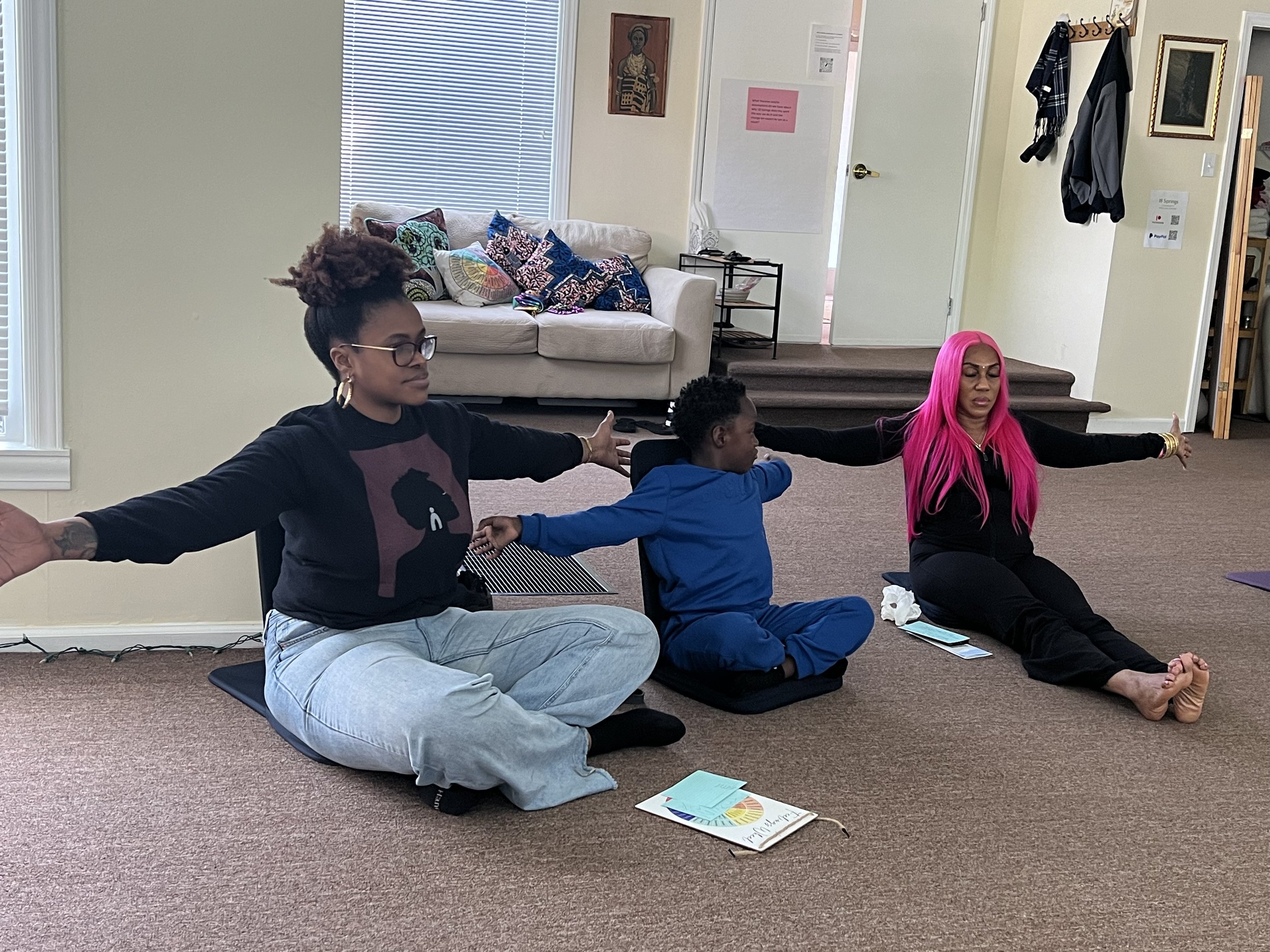
Healing Heights
Practitioner Catalogue
The Healing Heights Practitioner Catalog is an online resource for program participants and is offered to support the sustainability of their healing journey. It contains practitioners of various healing modalities including: spiritual mentorship, Reiki, massage therapy, herbal medicine etc. While a practitioner catalog itself is not an original resource, Healing Heights Founder Love’ Lemon crafted it specifically for program participants to design their own Healing Justice Packages. The Healing Justice Packages are designed differently for each participant depending on what healing modalities they identify as aligning with their needs.
We also recognize that sometimes in the climate we live in, resources for healing can be financially inaccessible; because of this we build a Healing Justice Package line item into each program to cover the cost of accessing the healing practitioners.
Why is it important?
The aim of Healing Heights is to create a comprehensive space for community members that provides trauma informed education, cultivates community and supports the long term investment of a healing journey. With the practitioner catalogue and the Healing Justice Packages, we go beyond telling community members about the impact of trauma and what healing tools are, we bring the tools to them as well.
Who are the practitioners?
The practitioner catalog is made possible through contributions from individuals who own and operate their own practice. This includes artists, educators, consultants, entrepreneurs, spiritual leaders, authors, and herbalists. These individuals are community members, healing heights partners, friends, colleagues, family and we are always working to expand this catalogue.
These are those who joined the 1st year:
Mache Chache: Houngan and Spiritual Coach
Ouida- Apothecary: Mind and Body Coaching, Reiki and Energy Work
Veronica Mignon- The Healing Pen
Pamela Mitchell- E414 Inc.
Raquel Joseph- Massage Therapist
Shannon Brooks: Teaches Financial Literacy with a racial trauma informed lense. Brooks and Associates LLC
Rev. Dr. Mia Sloan: Transformative Healing Services
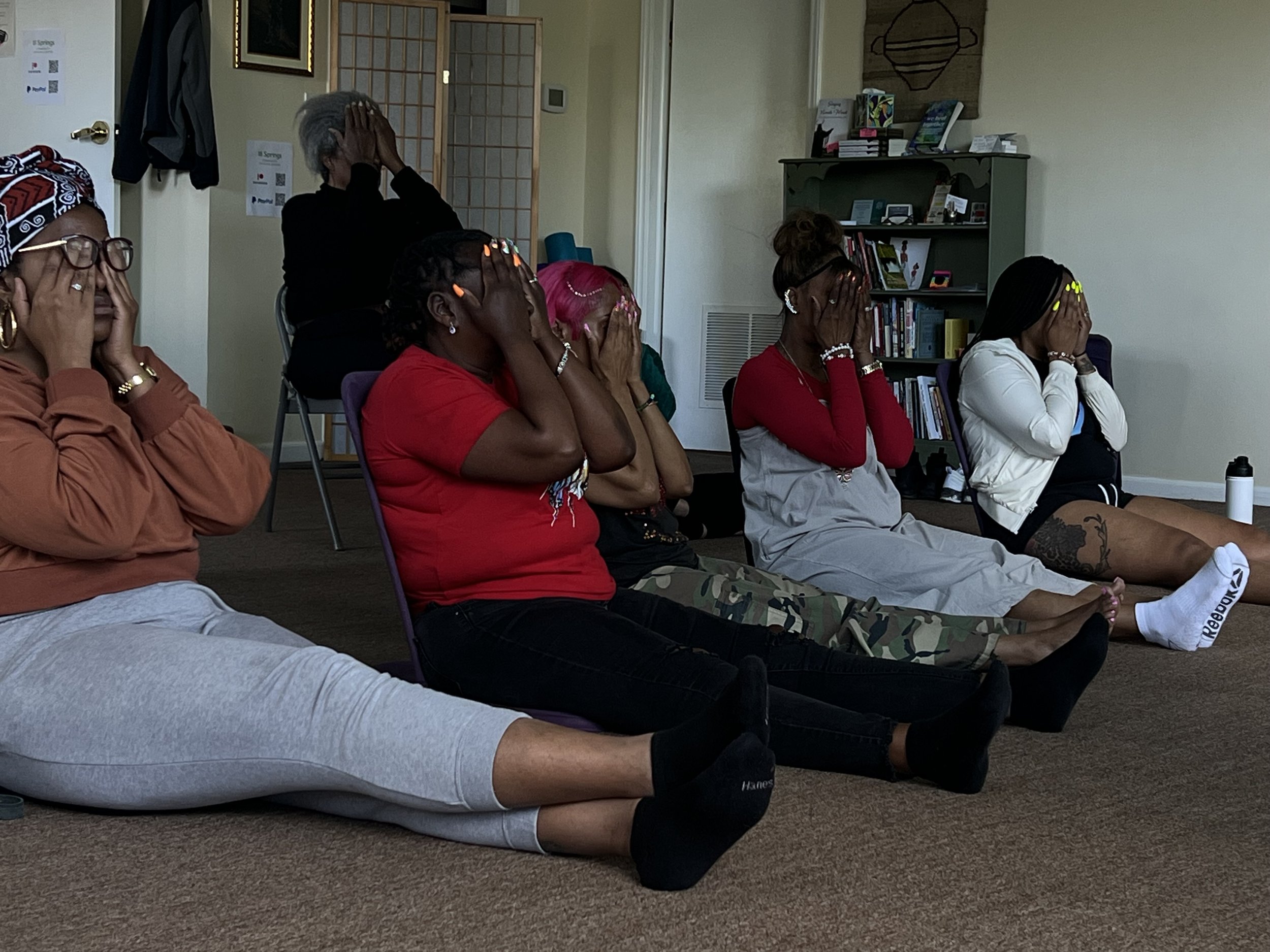
Mothers Of Angels
Program Practitioners
Outside of their role in the Healing Justice Packages that come at the close of a program, practitioners can also have a role in facilitating program sessions with participants. The Healing Heights Mother of Angels Program formed in partnership with Broken Women Break Through 501(c)3 founded by Tremona Purvis. This program held sessions from April 2nd 2024, ending with a culminating community event on August 17, 2024. These sessions were designed to create a space for parents who have experienced the physical loss of a child through a range of causes including: SIDS, gun violence, traffic collisions, housefires or medical related incidents.
Through this program, parents were able to join a comprehensive space to share their stories, learn about trauma, the impact of trauma, and healing through working with a few practitioners. In the following section we present:
Shannon Stokes of Zen By Shannon
Heidi Gessner Pockets of Grace series
Love’ Lemon Healing Heights Griot Training
In addition to hearing from the practitioners in this program, we also include feedback from participants based on their very first session.
Shannon Stokes “ The Bloom Series”
Through the Healing Heights: Mother's of Angel's program, I provided an introductory journey through mindfulness meditation called The Bloom Series. I held four, one-hour sessions each Saturday in April, providing guided meditation and debrief discussion.
The Bloom Series explored metaphorically what it means to bloom where you are planted even when environments are challenging and unrelenting. Turning to nature as a reference, The Bloom Series used meditation to focus on the present moment with openness and curiosity, and a willingness to be with what is. This is what is known as mindfulness. Ultimately, my goal was to help participants cultivate awareness, self-compassion, and clarity on how to respond to the ups and downs of life.
After the The Bloom Series, each participant received four one-on-one coaching sessions with Zen by Shannon to schedule at their convenience.
I am a Certified Transformational Nutrition Coach who focuses on the transformational nutrition model. In my coaching practice, I view nutrition as anything that nourishes your mind, body, and spirit. The transformational nutrition model is a contemporary coaching approach supported by science and psychology. As a coach, I blend holistic and mindful strategies to educate about health, guiding clients towards well-being and unlocking their full potential.
Overall, I thought the experience working with the participants as a practitioner was positive. For most of the participants, it was the first time they practiced meditation. It was amazing to see the apprehensions around meditation in the first sessions to the anticipation of looking forward to the next session for a moment of calm and stillness. In addition to acknowledging their emotions, I saw participants begin to open up and explore the possibilities of what could be next for them in their life. This included things like starting a new business, going back to school, or getting more involved with their community through activism. I believe one of the largest take-aways is that one can hold space for grief and choose to honor their Angel by living a life that is full, purposeful, and satisfying. There is no linear pathway to healing, but together, with the support of others, the journey becomes a little easier to travel.
Participant Satisfaction
Reported 100% Strongly satisfied
What did participants
take away from attending
their first session with Shannon?
What are practices you
will take from this session
into your daily routine?
Heidi Gessner “Pockets of Grace”
I founded Indigo Flow: Path to a New Beginning to provide grief support for people experiencing all kinds of loss. My hope is that this program can gently guide others to explore the transformative aspects of grief in a creative and meaningful way. In my past role as a palliative care and bereavement chaplain at the University of North Carolina Hospitals, I had the privilege of supporting people at the end of their lives and offering compassionate care to their loved ones dealing with loss. During that time, I also created the adult Bereavement Support Services—a program aimed at promoting healthy grieving by providing educational resources and follow-up care for families.
One powerful part of this program was Writing for Resilience, a weekly group where patients and caregivers could write and share their reflections. In this group, people often discovered that others’ stories mirrored their own, which helped them feel less alone. Writing and sharing became a way for participants to see things from new perspectives and connect with others, easing the loneliness that can come with grief.
I explore these ideas in my book, Pockets of Grace: Lessons from Darkness, Lessons from Light. It’s a blend of memoir and guide for navigating grief. In my work with Healing Heights participants over four sessions, we used Pockets of Grace to inspire their own storytelling.
This was a wise and courageous group, mostly made up of women who have faced one of life’s hardest losses—the heartbreaking death of a child. Since the group didn’t know me at all, I wasn’t sure if I was the right person to lead a group of grieving parents, but meeting with Tremona Purvis, the founder of Mothers of Angels, beforehand helped. Tremona is an amazing, brave person who’s focused on bringing women together to help each other heal and learn to live after such a deep loss. We connected right away, and she felt reassured by my background in grief work. She had read Pockets of Grace, connected with it, and was interested in writing as a way to process loss. She thought this would be a good fit for the group.
Early on, I realized that writing wasn’t everyone’s preferred way of expressing themselves, so I made room for talking as well. Group activities where everyone shared seemed to be the most popular and effective way to get people involved. The participants were open to sharing with each other and seemed comfortable doing so.
One challenge was having new participants join each session, which can make it harder to build trust over time. But the group was very welcoming and helped new members feel comfortable and encouraged them to join in. I gave everyone a copy of my book, Pockets of Grace, though I’m still figuring out the best way to use it in the group, especially since most people haven’t read it yet. Instead, I focused on themes from the book during our sessions, which seemed to work well. At least each participant had a copy to read later if they wanted. I enjoyed working with this group of strong women—and one man!
During the first session, I shared that all of my teachings are trauma-informed, and included an image that shows the 3 concentric circles when trying new things. We also reviewed the guidelines for the sessions. I shared the health benefits of reflective writing—how it can lower stress, boost immunity, and help us connect more deeply with ourselves. We worked through prompts like introducing the child they lost, remembering a healing place in nature, and reflecting on a moment when they felt supported by the Universe. This time of writing and sharing brought the group closer together and allowed participants to explore what truly matters.
In our second session, we focused on the upcoming Mother’s Day. I shared poems from writers who had also experienced the loss of a child, using their words as prompts for reflection. Each participant shared their writings and past experiences with Mother’s Day. We talked about how the day’s commercialism can make it especially hard for those who are grieving. Together, each woman came up with a personal plan to help them cope with the day.
In our third session, we did a group activity where members named emotions they felt before and after their losses. Everyone called out feelings they had experienced, and we noticed some common themes and surprises. Each person then picked one word from each before and after list and created an acrostic, writing the word vertically and letting ideas flow from each letter. When they shared their acrostics, many were surprised by what came up. We ended the session by responding on the page to a poem by Gregory Orr, reminding us that loss can be a place where beauty and goodness start.
In our fourth session, we talked about becoming a good steward of our pain. Taking ownership of our stories and honestly sharing them is an important step in transforming pain into something meaningful. When we let our pain connect us to others, it can become a source of empathy, compassion, and wisdom. Instead of burying it, by facing, owning, and sharing our pain, we can do something redemptive with it.
Participant Satisfaction
Strongly Satisfied = 66%
Satisfied = 22%
No Response= 12%
What did participants take
away from attending their
first session with Heidi?
What are practices you will
take from this session into
your daily routine?
Love’ Lemon Healing Heights Griot training
The training I provide is called Healing Heights Griot Training. It is a creative, innovative, trauma-informed, and active healing justice training. We begin with the Social Determinants of Health and the Structural Determinants of Health Paradigm Shift, which is part of the training I received through the Crossnore Trauma Resiliency Community Champion Program.
Next, we move into the Healing Heights Healing Justice Model, which acknowledges that this nation’s structural, systemic, and institutional violence causes marginalized communities and oppressed individuals to experience trauma. The model also believes that by healing individuals and communities, we can challenge and transform these structures, systems, and institutions, shifting them from oppression to liberation. Finally, the model asserts that even if the structures, systems, and institutions don’t change, individuals and communities can still experience healing justice.
After introducing the model, we explore what individual trauma is, how it manifests in the brain and body, and practice individual healing justice techniques, such as storytelling and the 5-4-3-2-1 sensory exercise—a practice I learned as a student of Dr. Tiffany Green from her Uprooting me Wellness Courses. We then shift to community trauma and community healing, incorporating advocacy work by bringing participants together through the sharing of their stories.
Storytelling is the central art of our Healing Heights Griot Training, and we recognize the expansive nature of the healing arts, especially through adaptation. This training provides a unique opportunity for individuals and communities to write and share their stories with an intentional focus on creating change. Through this process, we strive to bring about liberating, healing justice in the world.
This particular Healing Heights Griot Training was different from the others. I had developed a deep connection with each parent after working through the other parts of the wellness plan with them. I was also intentional about the language I used, wanting to honor their bravery and vulnerability throughout this process. It was incredibly difficult to hold back my tears, but I did because this wellness plan wasn’t about me—it was for each parent to experience the profound art of healing.
As I guided them through these four sessions and a few make-up sessions, I witnessed them develop a deeper connection with one another. They became eager to share and listen to each other’s stories. Throughout the training, they wrote about their experiences—stories of fatal car accidents, suicide, homicide, infant deaths, and the expansive healing they had found through prayer and new practices learned from Shannon Stokes of Zen by Shannon and Heidi Gessner of Indigo Flow.
It was truly amazing to witness them write their stories, and I couldn’t wait to see them share these stories with the community.
Participant Satisfaction
Reported 100 % Strongly Satisfied
What did participants
take away from attending
their first session with Love’?
What are practices you will
take from this session into
your daily routine?

Program Goals and Outcomes
We have arrived at what is undoubtedly the most important section of this report: participant impact. In the following pages, we will share the goals and outcomes of the Healing Heights Mothers of Angels Program, focusing on the experiences of eight participants.This section begins with an overview of the program’s three core goals. Data was gathered through pre-program questionnaires in April 2024 and post-program questionnaires in August 2024. It is important to note that the information collected reflects changes observed between the start and end of the program. While these changes can be attributed to program engagement, they may also include contributions from participants’ efforts outside of program sessions. The success of Healing Heights programs depends not only on the work completed during the sessions but also on participants’ ability to integrate what they have learned into their lives, families, and communities, both during the program and long after its conclusion.
Program Goal #1
Introduce/re-introduce each mother/father/parent to an increased understanding of healing and how that looks.
For this goal, we had to have a general understanding of where participants located their knowledge starting the program. We asked them how satisfied they were with their understanding of healing using a five point likert scale. At the close of the program, we asked participants to report their understanding of healing and saw the following changes:
Participant A shifted from acceptable to good; attended more than 50% of all sessions
Participant B shifted from needs improvement to very good; attended more than 50 percent of all sessions.
Participant C shifted from needs improvement to very good; attended more than 50 percent of all sessions
Participant D shifted from very good to acceptable; only attended one griot session
Participant E stayed at needs improvement; only attended one griot session.
Participant F stayed at very good; attended at least 50% of all sessions
Participant G shifted from good to very good; attended more than 50% of all sessions.
Participant H shifted from acceptable to very good; attended more than 50 percent of all sessions.
Program Goal #2
Create a healing journey guide for the grief and trauma carried in the bodies of each mother/father/parent.
This goal is in alignment with the Healing Heights Curriculum for trauma informed education. Participants are taken through a program that teaches of the impact of trauma, and then through the Healing Justice Packages they select resources that they feel fit with their needs. These Healing Justice packages where they are guided through an expansive journey where they learn through various practitioners of various healing modalities.
The table shows us what participants A-H chose as their healing journey through Healing Justice packages. Please see Practitioner Catalogue for practitioners who provide specified modalities.
Program Goal #3
Provide access and a sustainability plan for each mother/father/parent
Healing Heights understands that financial access is often a barrier to resources in the climate we live in and with the communities we work and live in. We also understand that the communities have a comprehensive understanding of how they use their dollars, and why they use them in certain ways. For these reasons we ensure that any funding we seek out is earmarked for an access fund that pays for community members to receive services from practitioners. In doing this, we provide initial support, and allow community members to experience the value of ongoing Healing Justice before committing their own dollars to it.
Healing Justice Package Use for the Mother of Angels Program
An access fund of 2500 dollars with 100% utilization
Participants activated their Healing Justice Packages with access fund dollars within three months of the end of the program.
Out of the eight participants that completed the program seven used access fund dollars, the eight participants passed their resources to a family member.

Youth Healing Force
In August 2024 just before the close of the Healing Heights: Mothers of Angels Program, we added the Youth Healing Force for the children of parents or guardians who participated in the longer program. What led to the Youth Healing Force is an acknowledgement of the children who have experienced the loss of a sibling or a parent through SIDS, homicide or suicide through gun violence. Also, Healing Heights believes in the importance of equipping our youth with the proper skillset after we are sure that a parent, guardian or an adult who offers supervision in the youths lives, are equipped with the proper skillset. It is a serious danger and disservice to equip our youth with trauma-informed healing justice education just to send them to homes, churches, schools or any community where there is no adult supervision with trauma-informed healing justice education; it’s very similar to asking a person to stop running from the dog chasing them, or teaching a person to remain calm and neutral when they are being shot at, no, we don’t want that, we want their nervous systems to tell them to run, get out the way, and dodge.
With permission from the parents or guardians of youth that participated in the Youth Healing Force there was one session held on August 3rd, 2024 with Love’ Lemon. During the session they were able to take a shorter Healing Heights Griot session with the founder, and write their stories. With permission from parents or guardians we share some of their feedback here.
We asked the youth:
What is one thing you learned?
We asked the youth:
What is one healing practice you might do every day?
Healing Heights Recess and the Art of Play
Healing Heights Recess is a space where the entire community can participate in activities including cornhole, jumprope, football, arts and crafts and more. The purpose is to acknowledge that play is a form of healing that children naturally do and it is something that can help adults as well.
At the close of the Youth Healing Force, participants experienced that art and healing of Play at an activity center in Winston-Salem.
What Does the Community
Say About Healing Heights
To close out the activities for the Healing Heights Mother of Angels Program, we held the Community Day of Healing on August 17th, 2024. This day was the culminating event designed for participants to share their stories with their community. Participants were able to handpick the attendees so that they created a space made up of their individual networks and support systems.
This event included a “Graduation Ceremony” where participants received a certificate of completion for the Griot Training. The beauty of this event was in participants sharing their story of healing through a performance, a song, spoken word and food.
The following is some of what participants shared about their healing journey in exit interviews:
What else do we want you to know about Healing Heights!!
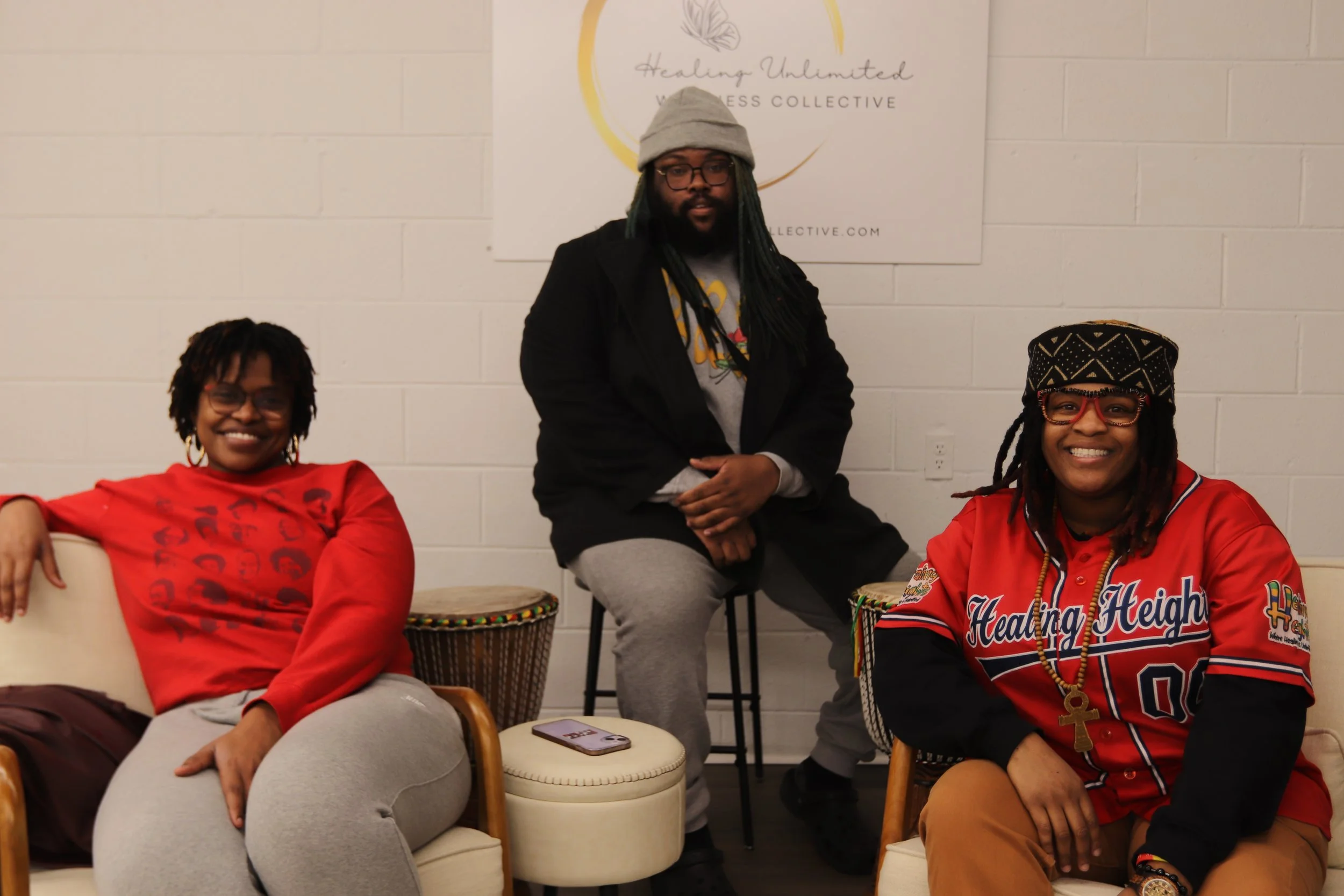

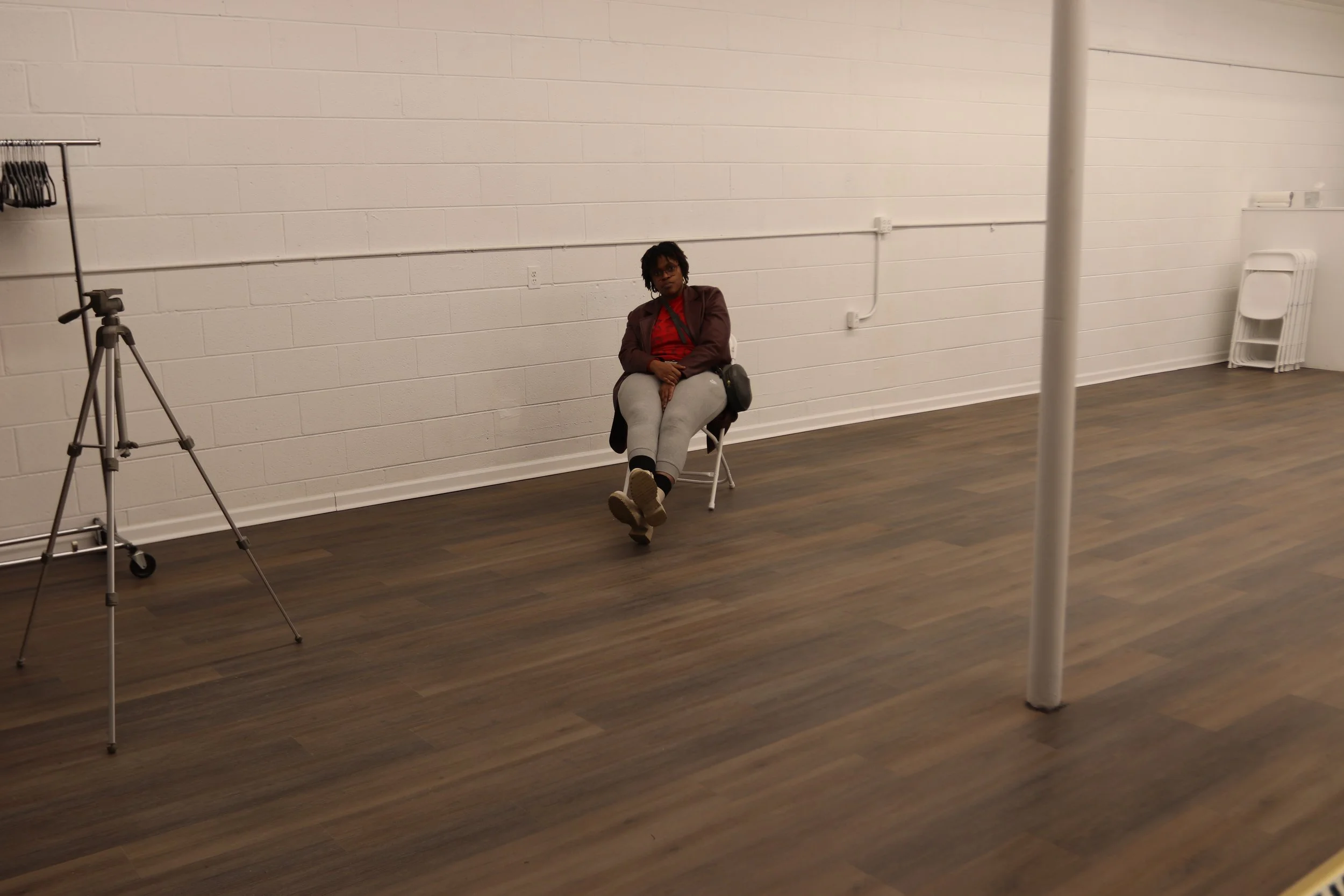

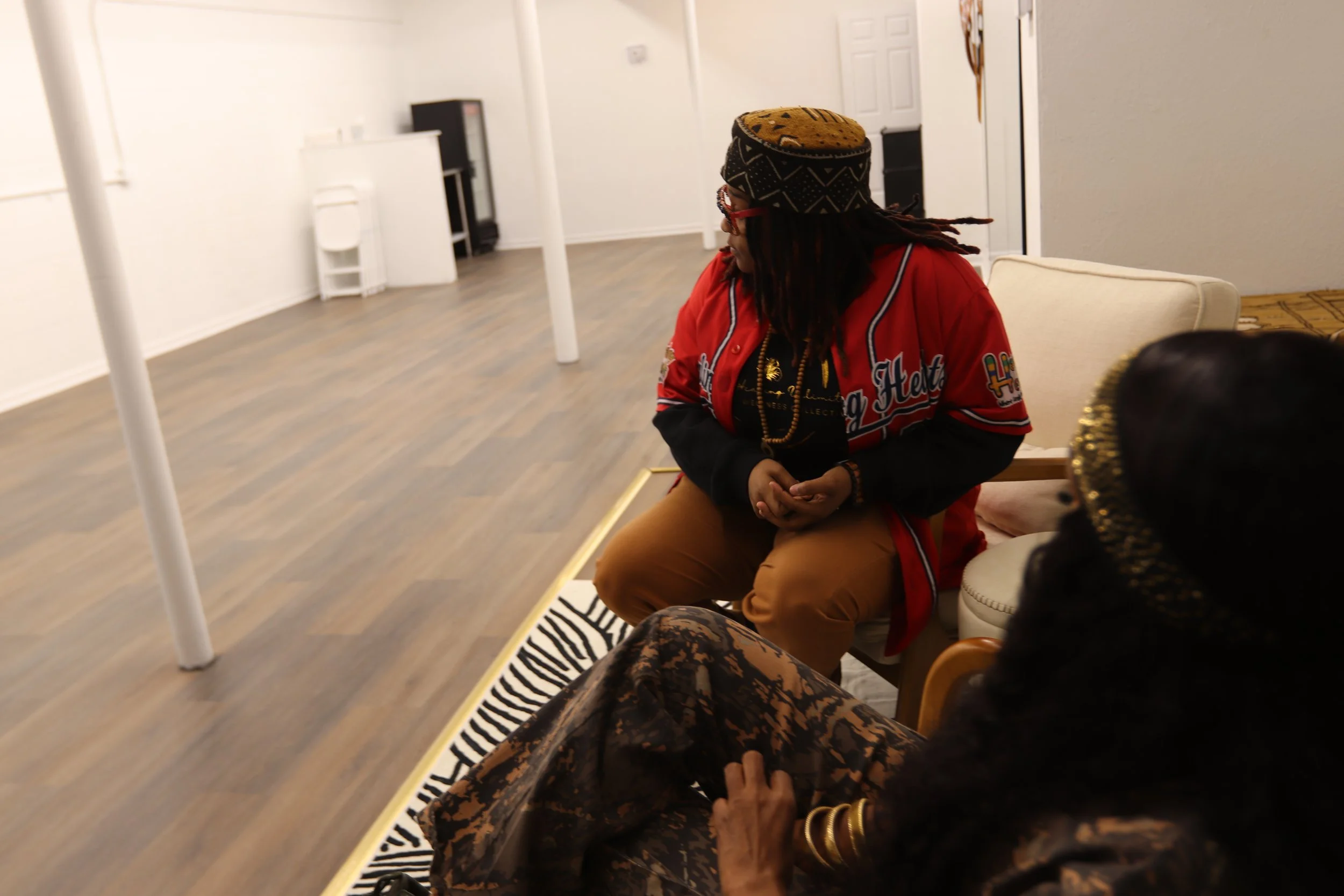
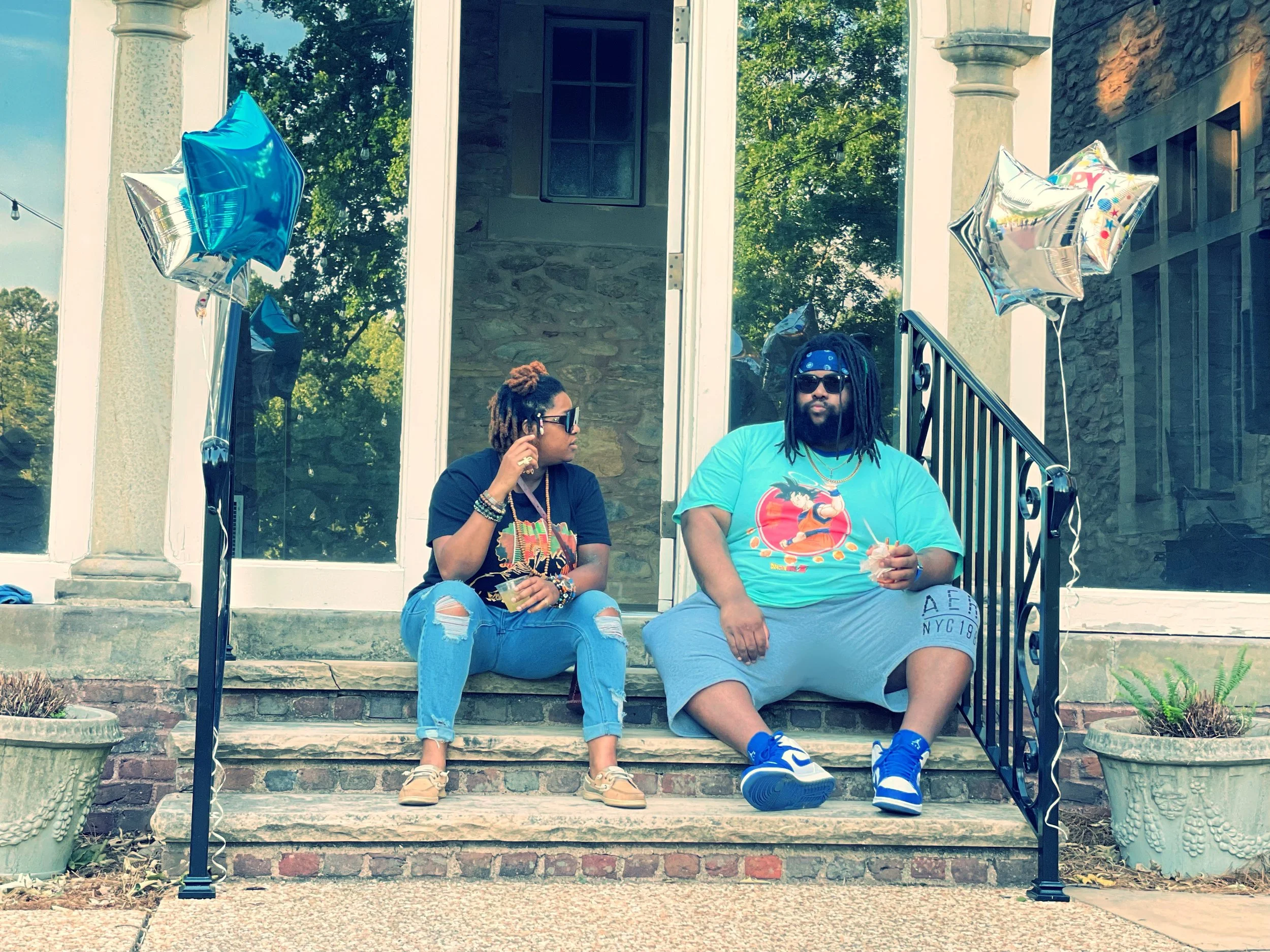

GLOSSARY:
In Order by Healing Heights Healing Justice Model
Structural Violence:
a. A type of harm such as institutional violence carried out by organizations and social structures through policies, practices and beliefs that target and exploit marginalized and vulnerable populations.
2. Systemic Violence:
a. The broader impact and interconnectedness of structures that carry out violence towards specific populations. This can include the school to prison pipeline, inequality, police violence and discrimination.
3. Individual Trauma:
a. This is a type of trauma that teaches us about how our bodies are impacted. This teaches us about what happens to our brains and how our bodies break down by stress. This teaches us about our nervous system and its layers. It recognizes our brains as a well oiled machine that’s as old as the body carrying it and how the brain stores trauma in the body. Then how the body responds; trauma response, which says our bodies recognize when we are free, running or tired.
4. Community Trauma:
a. This happens when people who share geographical space, cultural and similar identities are marginalized by structural, systemic and institutional violence. An example will be what we socially refer to as “The Crack Epidemic,” which resulted in mass incarceration of Black people. This is ultimately due to the “War on Drugs” led by the Nixon administration, who locked Black bodies in prison instead of undoing the structural criminal activities practiced systemically against Black people (e.g. Policing).
5. Trauma:
a. According to Dr. Tiffany Green of The Uprooted Academy this is “anything of shock, surprise, uncertainty, overwhelm, or a flood of emotions that you aren’t sure when they are going to go away; when something is too much too soon, when something is too much for too long, and/or when something is not enough for too long” (Part 1 and Part 2 of Uprooting Me Courses facilitated by Dr. Tiffany Green).
6. Practitioner:
a. An individual that specializes in a specific healing modality or healing modalities. An artist.
7. Healing Modalities:
a. This is what honors each healing practitioner and their craft. This honors all artistic layers of healing. It allows us to recognize the unlimiting experience of healing from talk therapy, energy healing, Reiki, Hypnotism, Tai Chi, Yoga, Mindfulness Meditation, Nutrition, 54321 Senses, Massage Therapy, Journaling, Eye-Contact and the list really is unlimiting, it goes on and on. It is this never ending list that honors healing and the impact it has on the mind, body and soul in all the creative ways.
8. Healing:
a. This is a unique process that happens every day, for all of us. It happens after we recognize that something happened to the world and we have all been impacted (e.g. Racism, Sexism, Classism, Homophobia). We have been impacted on this plane of life and our ancestors on theirs. This is tapping into our senses so that we can be brought to the present moment. We experience this when we allow our bodies to somatically release stress and trauma. It can be burning candles, lighting incense, spiritual baths, walking barefoot (earthing), a mediumship session and the list goes on to creatively meet our needs.
9. Healing Justice:
a. This begins with the recognition that the structures, systems and institutions practicing violence must be challenged and changed so they begin to practice healing. It also moves forward on this healing journey with or without the structures, systems, and institutions that make up this world we exist in. It does this in so many ways, through so many creative healing modalities, and Healing Heights, we use the art of storytelling and a long list of healing modalities.
10. Trauma - Informed Education:
a. This is a course or courses facilitated by individuals who educate participants about trauma and healing for themselves and for their communities. Resources to check out are:
i. Dr. Tiffany Green Uprooting Me Courses:
Instagram: @uprootingme
Website: www.uprootingme.com
ii. Maché Chaché:
Instagram: @mache.chache77 @kindredspirits.nc
Website: www.machechache.com
iii. Rev. Lové Lemon:
Instagram: @healingheightsunltd
Website: www.healingheights.org
11. Liberation:
a. The result of removing policies, beliefs and practices that restrict the physical, mental, emotional, economic and educational mobility of marginalized populations.
